Beirut - After the Curtain
We are on the last leg of our trip in Indonesia, heading to its west-most island, Sumatra. Despite its proximity to Malaysia and Singapore, it is a detour few people make - with fewer roads, smaller airports and any destination within the island is bound to take a day or two. But we come with two specific goals: the jungle and the orangutans of the Gunung Leuser National Park.
A short flight from Jakarta bring us to Medan in the morning. Having read too much about the bus stations scams and the touts, we do our best to avoid them and try to talk directly with the minibus driver, to no avail. We’re not very good at it, this time, losing our wits and forgetting to walk a little more to avoid them; we’re a little pressed for time if we want to get to our destination before nightfall. After paying too much, we finally hop into a small rusty 10-seater for the bumpiest ride we’ve ever had; for four hours, we’ll be jumping off our seats as the driver goes through large potholes on dirt roads, a real gold mine for a suspension repair shop (its a few days later that we’ll understand it could have been worse - the return ride to Medan will be filled with 24 people). With our spines a couple inches shorter, we finally get to Bukit Lawang, a small village at the entrance of Gunung Leuser National Park, home of wild orangutans, elephants, and tigers.
Feeling a little bitter about the last scam, we proudly decide to walk to our guest house instead of taking the local tuk-tuk. An easy two-kilometer stroll to relieve our legs? It could have been, yes, if it wasn’t for the torrential rain, creeping twilight, unsteady flip flops and getting lost in a small village. Google Maps did not know that this town is separated by a river, with only a few bridges to traverse it that small cars or tuk-tuks cannot cross - hence not showing as streets. A nice local gets us back on track and points to the closest bridge. “Thomas’ house is on the other side, on the right after you cross.” Ah... the bridge - a skinny wooden white bridge in a tall arc, maybe a meter wide and 50 meters long, cables swinging in the rain, almost no light in the dark night of the surrounding jungle, and, of course, dubious wood planks. It had a real uncanny resemblance to many nightmares I had when I was young (read: 30 y-o). Madie and I look at each other - “Are we really doing this?” I ask - “I guess so.” She always finds the words to make me feel better. We take slow steps, clinging on to the ramp; I’m doing my best to look at my feet without looking at the void below. A third in, the side ramp is broken for a couple meters, removing all notion of security (as if I had any). And for the full cliché, there are few missing planks halfway through the bridge. Lovely. The thing with nightmares is that they’re a lot less scary in real life. For the first time in all my dreams, I manage to step over the gap and pass the bridge, drenched in the rain. I add an evil laugh for full effect.
We cross a bit of jungle (only because I miss the real pathway 10 meters away) and get safe and sound to Thomas’ Retreat, a beautiful guest house set against the jungle and with a view of the river. We fill up on warm pumpkin curry and chicken satay, chatting with the young hosts, jungle guides in training. We learn about the remote girlfriend tradition (apparently a real thing, western girls enamored with the jungle and their adventurous guides - like me, right Madie?), the concert they’re playing at later tonight and the park we’re about to trek in. Their excitement about the jungle is contagious; they want to show people their beautiful country and, more than anything, educate so it doesn’t go away. Tourists are welcome here because they bring an economy that does not destroy the forest, unlike the palm plantations causing devastating deforestation all over Sumatra. We stroll around town the first day, crossing all the skinny bridges connecting the two sides of Bukit Lawang, looking at naked kids jumping in the river and going down the currents. We prepare ourselves for a two-day trek hoping to see as many orangutans as we can.
We leave early the next morning, filled with banana pancakes, and covered with Deet to fend off the mosquitos of the rubber plantation. Johnny, our guide, sets the pace in front as we approach the park and gives us the ceremonial talk. There are simple rules: be nice with the orangutans, approach carefully, and start walking away if told to. We walk up and down the many hills of the park for a couple hours, using lianas to support us, always wary of where we put our hands (you don’t want to wake up a snake). At the top of a hill, we finally see the first ones, a mother and its infant nestled in the trees. Female orangutans only have one child at a time; the child will stay with her for 8 years before leaving, slowly learning the ways of the jungle: how to make a new nest every day, how to find food, and how to stay out of trouble. The males are harder to find, as they constantly travel between tree tops, in search of the next female. After a couple hours of dense jungle, it suddenly feels that we’re in their home, and it’s an unforgettable moment. Orangutans look at us with human eyes and so much meaning, with more human expressions than my 10th-grade German teacher. We touch their hands and fur; some guides give them fruits - the orangutans know exactly how many are behind their back. We stick around just to be with them.
Throughout the day, we also encounter white-handed gibbons and Thomas Leaf monkeys; we meet Mina, an old orangutan known for her aggressive behavior (she’ll follow us to our lunch spot, making us flee away and lose tomatoes in the process); we meet Jackie and her child, another famous orangutan, this one known to be nice and hold hands with passing tourists. Jackie is holding a tourist’s hand and is pretending to bite it as she looks at the guide, hoping for some fruits in exchange. The trek continues through the jungle; we climb down hills holding on to lianas larger than my arm, pass small rivers at the bottom, only to go up again a steep path - a slow but exhausting walk through the lush emerald jungle. A large rhinoceros hornbill quacks and flies over us at the top of the hill, landing on a nearby branch, showing proudly its beak and horn.
After 7 hours of trekking, we finally get to the camp for a well-deserved rest. Johnny has to go back to town already - he feels compelled to thank us for visiting his jungle and respecting it; we feel thankful and blessed to have met him. He leaves us in the good hands of Olo, the camp cook and master entertainer, and Sonny, our guide for the next day. We stay with our new friends, Marine, Joh and Manu, and spend a night of game and laughter with Olo and his crew, deep in the smell of the clove cigarettes - Olo’s laugh is as contagious as it gets. Joh took a silent wish for the duration of the trek; her face lights up when we try to cheat during the games. We solve brain teasers and learn the tricks of the 3-4-5-6 stone game scam. We talk about life in town and in the jungle; we learn about the flash flood a few years ago, taking the life of a few hundred people in Bukit Lawang in less than 15 minutes. We all head to bed in the camp, and again, I can’t truly believe we're sleeping in the jungle.
Sonny takes us all back the next day (after a heavy breakfast), and after a short raft ride down the river, we stop for another 3 hours of trekking and more orangutans. We stay with a mother and its infant for another hour, as Joh and Marine slowly fall in love with them. I understand then that Joh’s silent wish is to experience this trip to the fullest and be most mindful of this experience. I might try it, I tell myself, but only when I can make sure Madie won’t feel too lonely. As we get back in town, her wish ends - and her voice starts filling the room. She has a lot of catching up to do, and we all have a lot to talk about after such an experience.
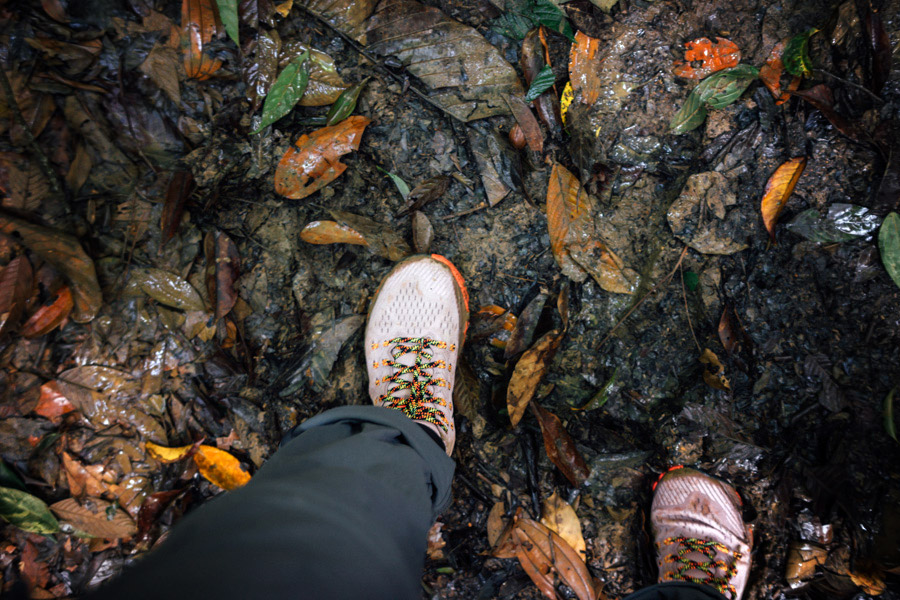
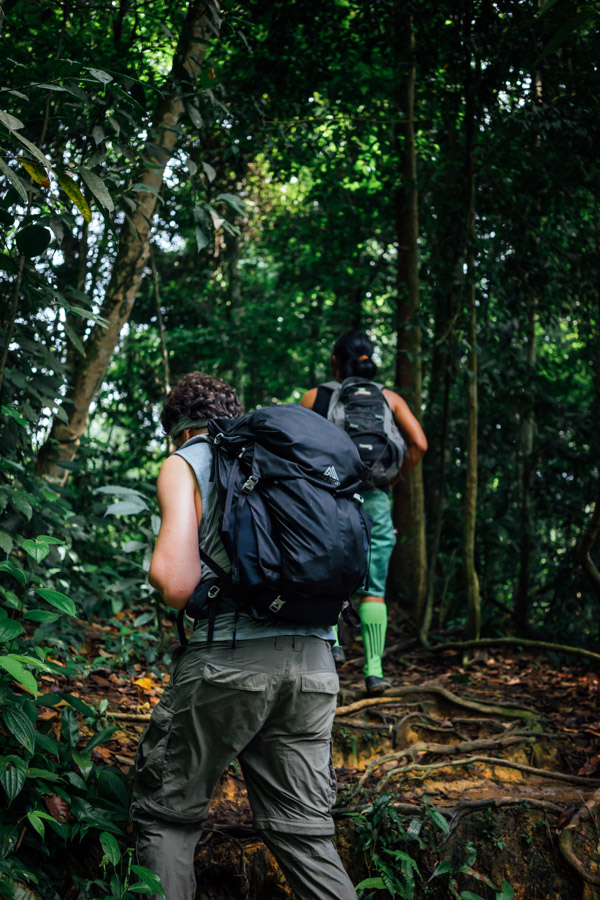
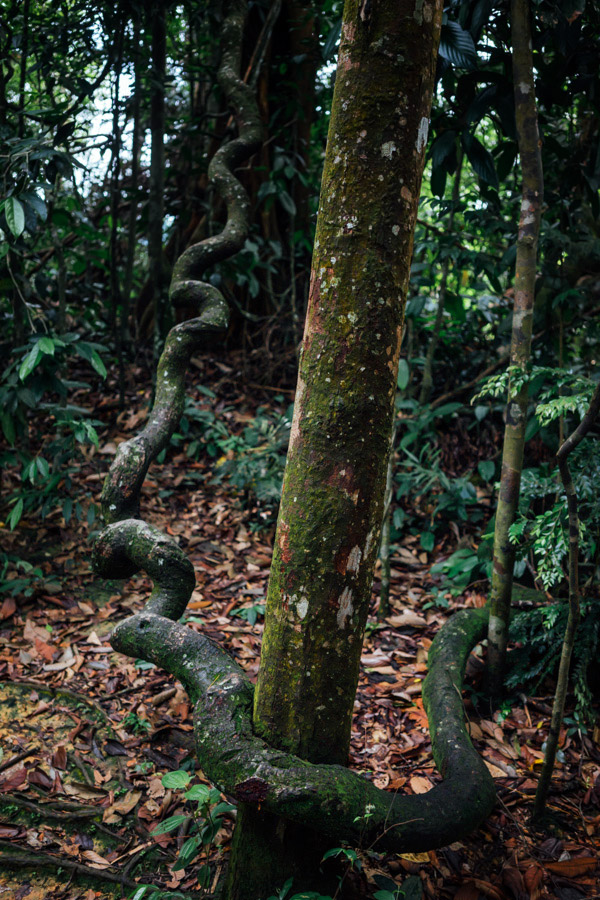
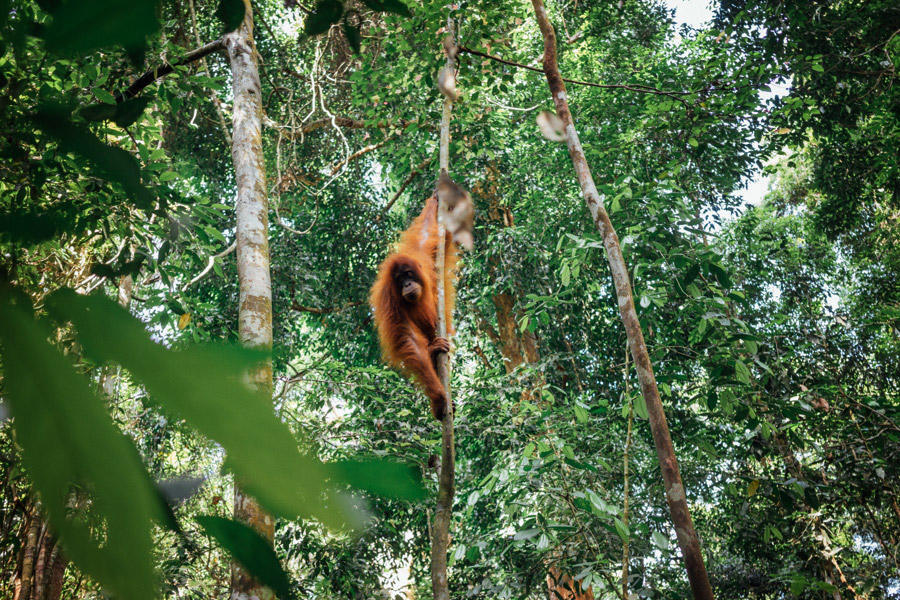

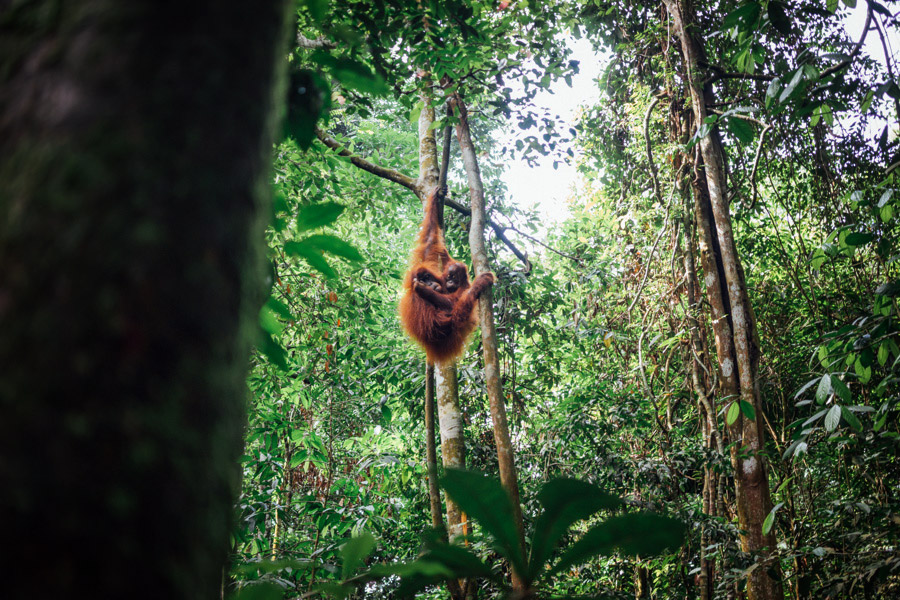
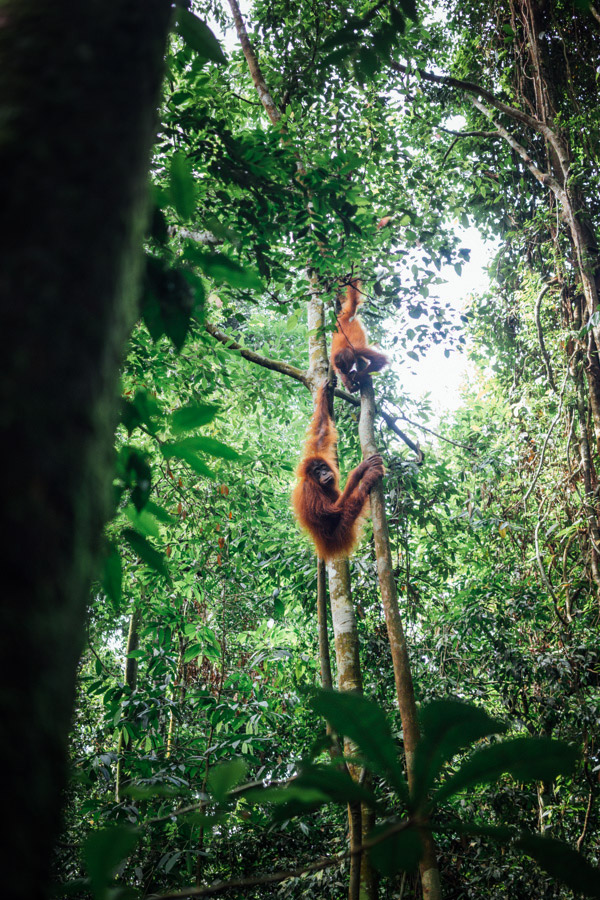
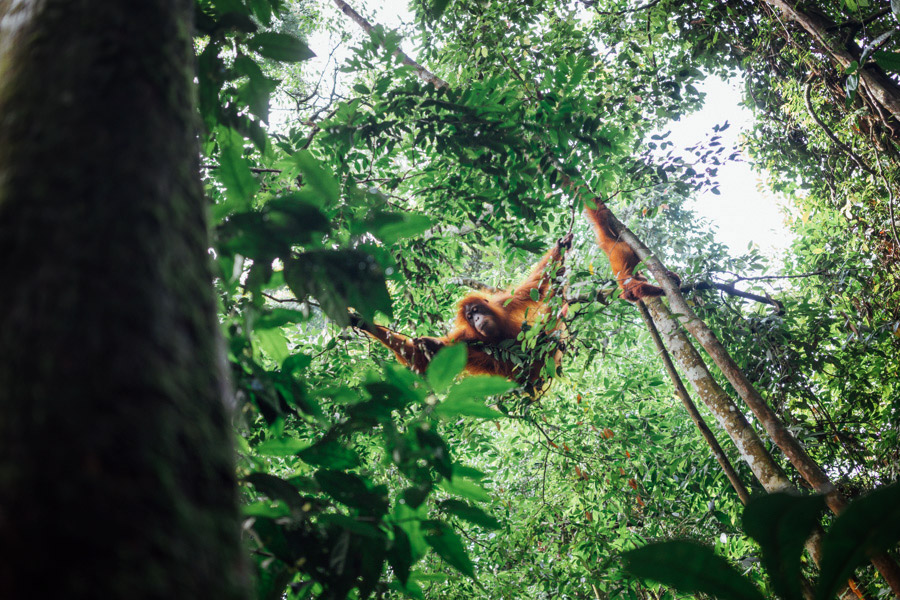
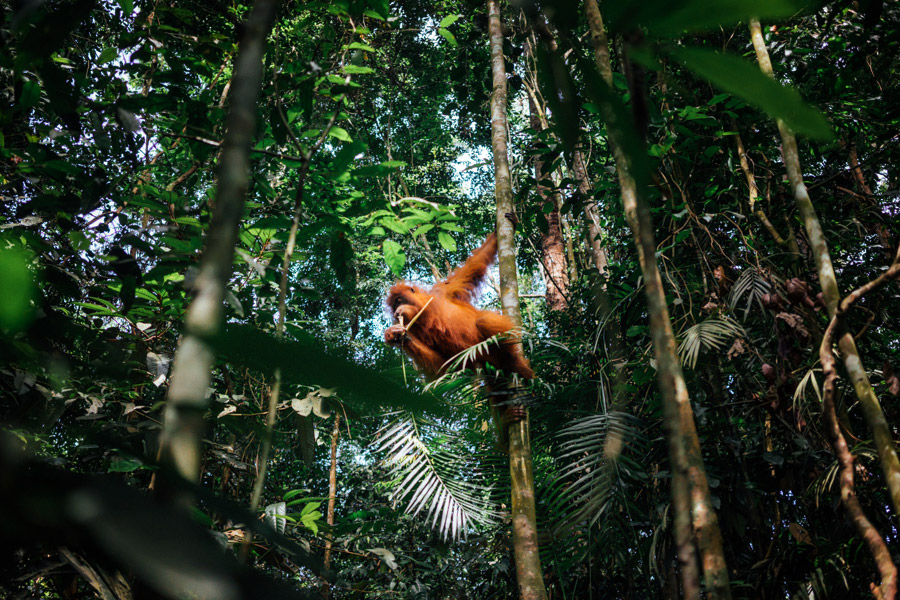

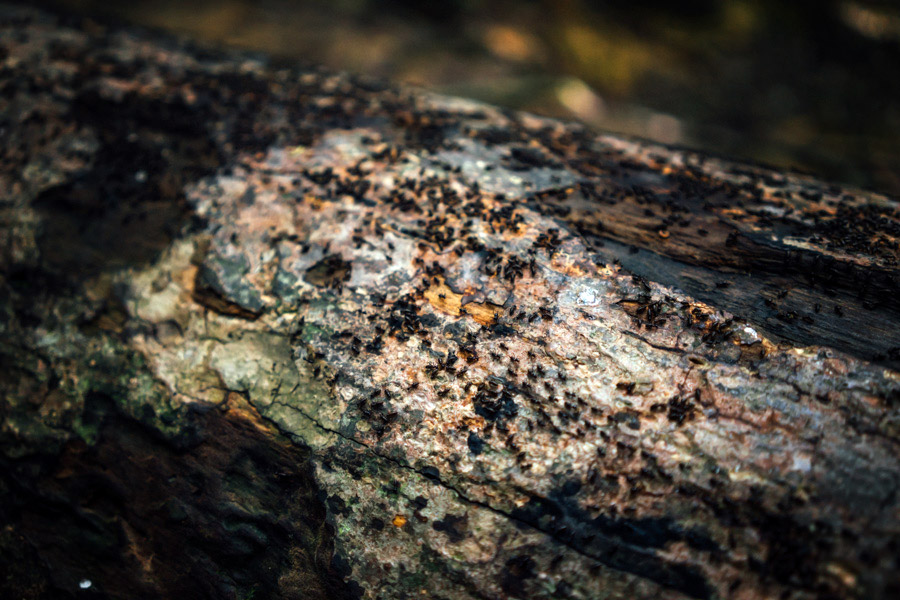
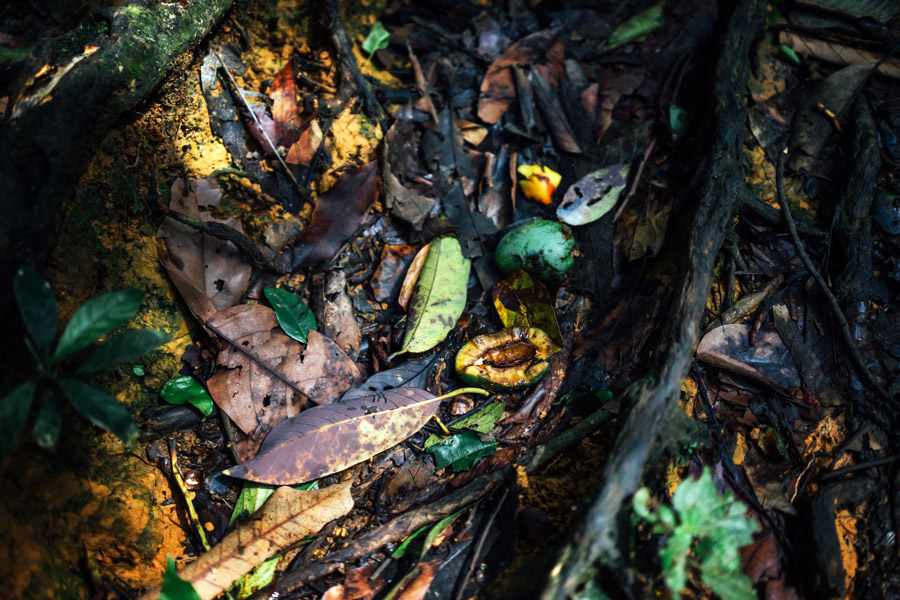
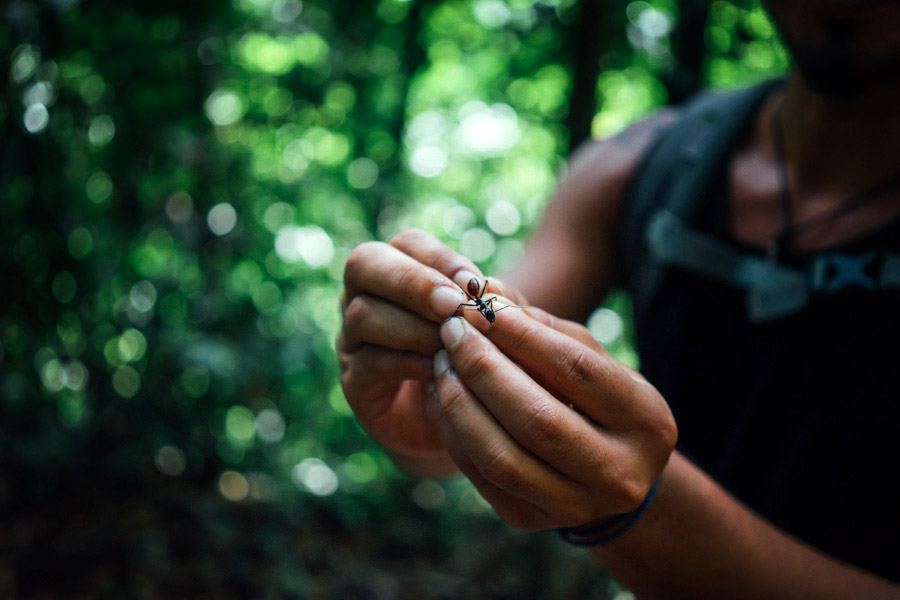

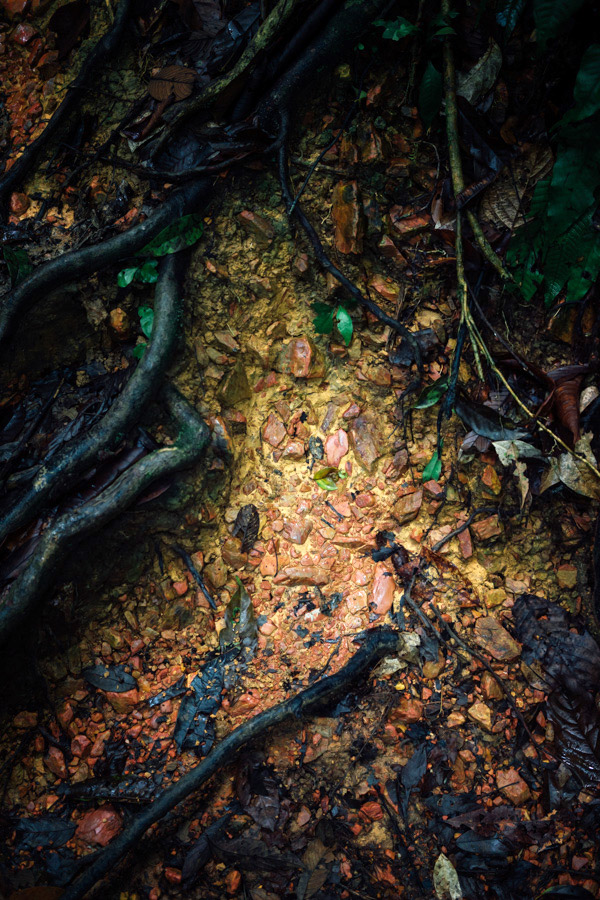
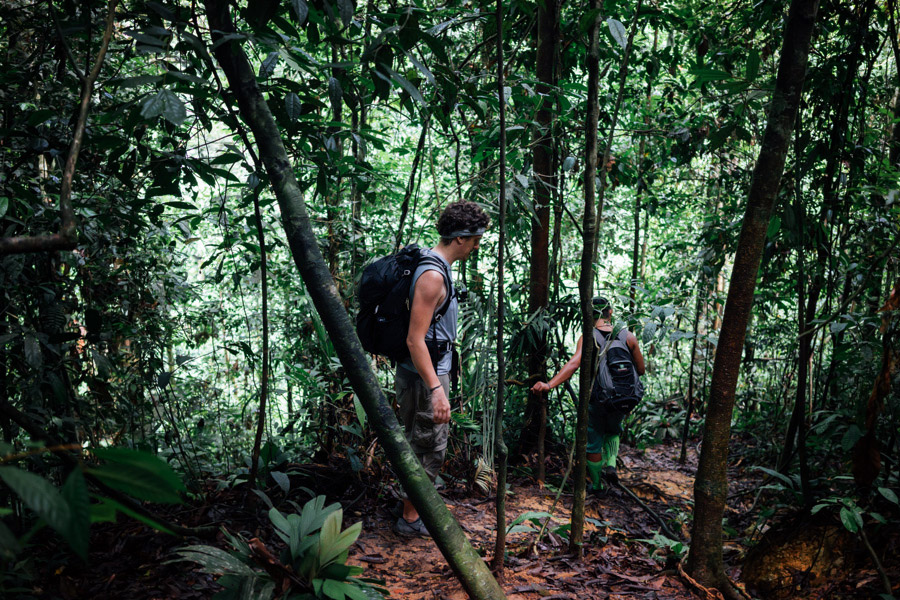
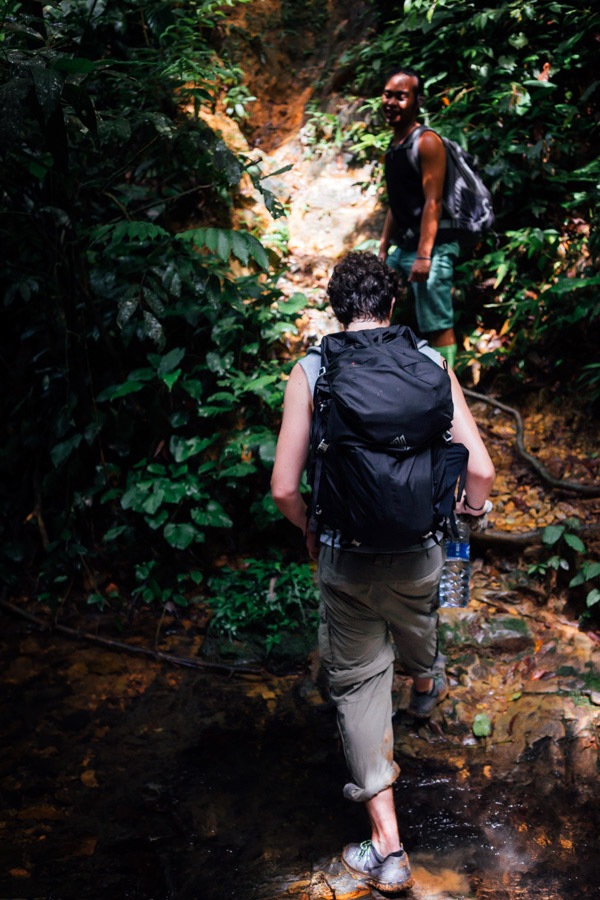
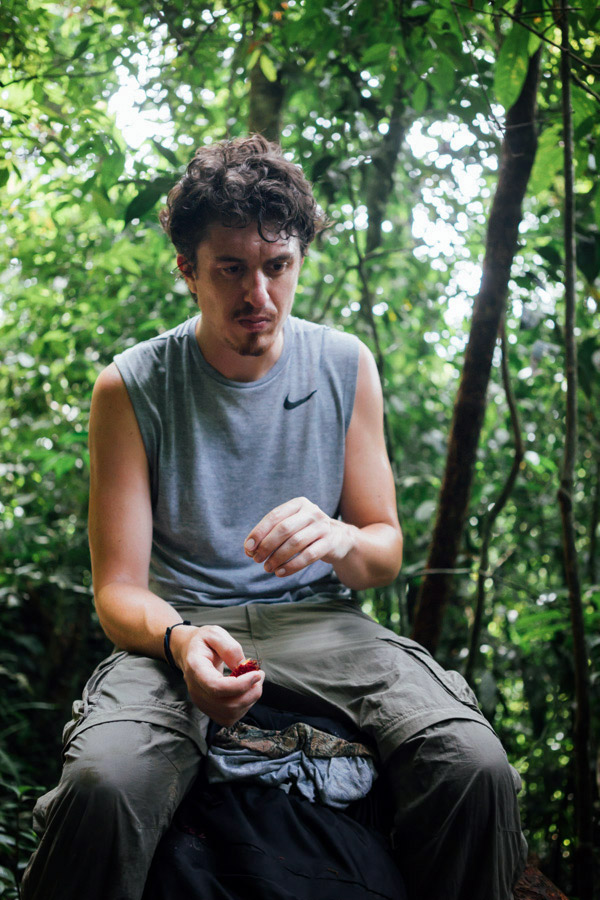
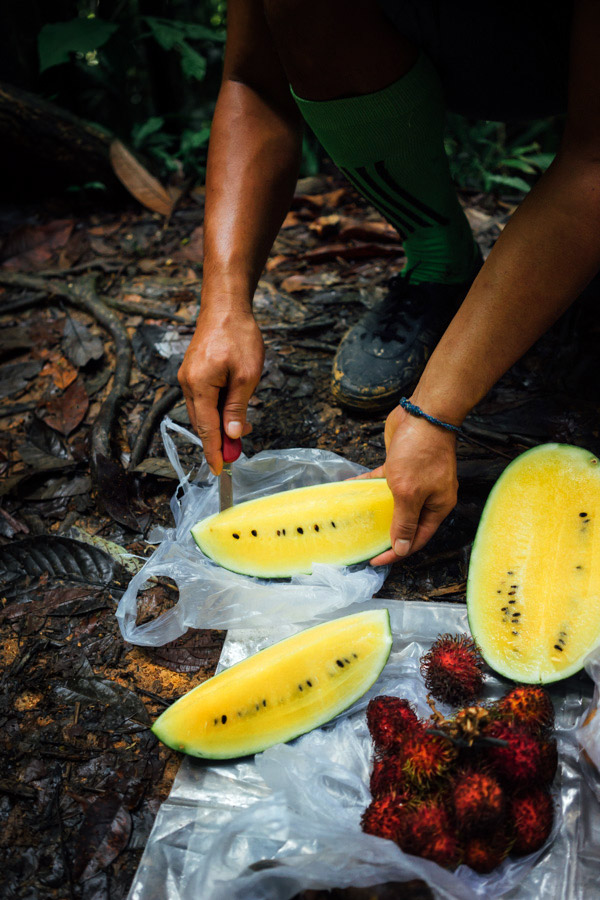
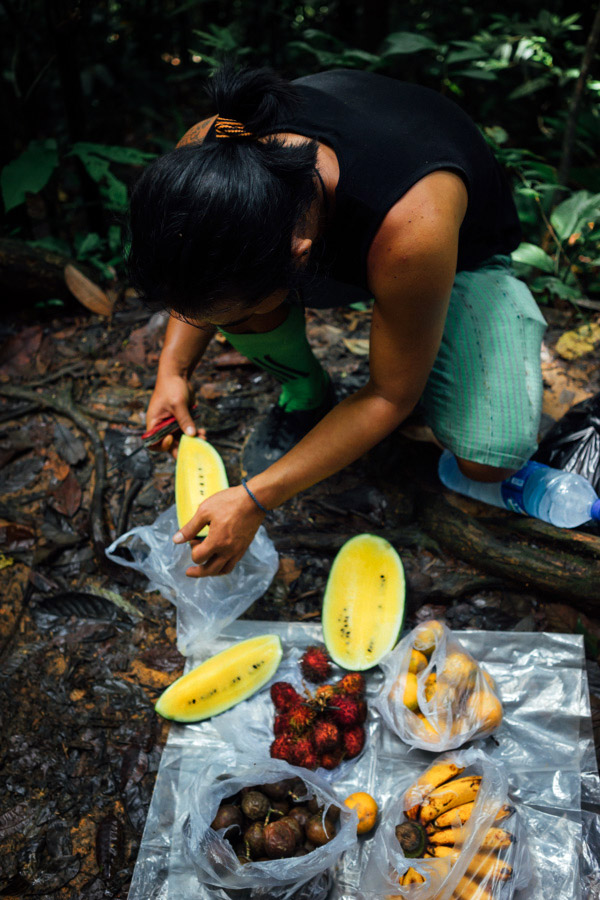
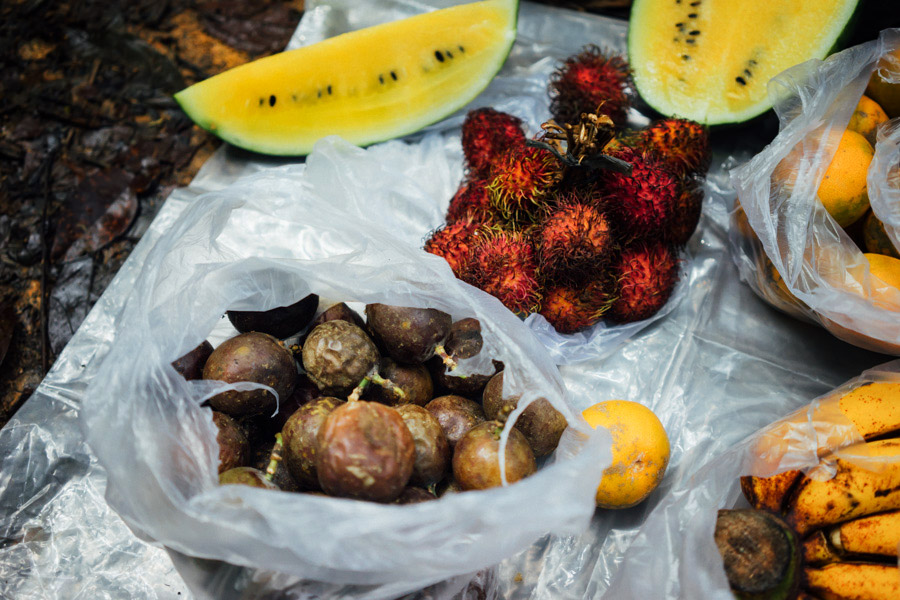


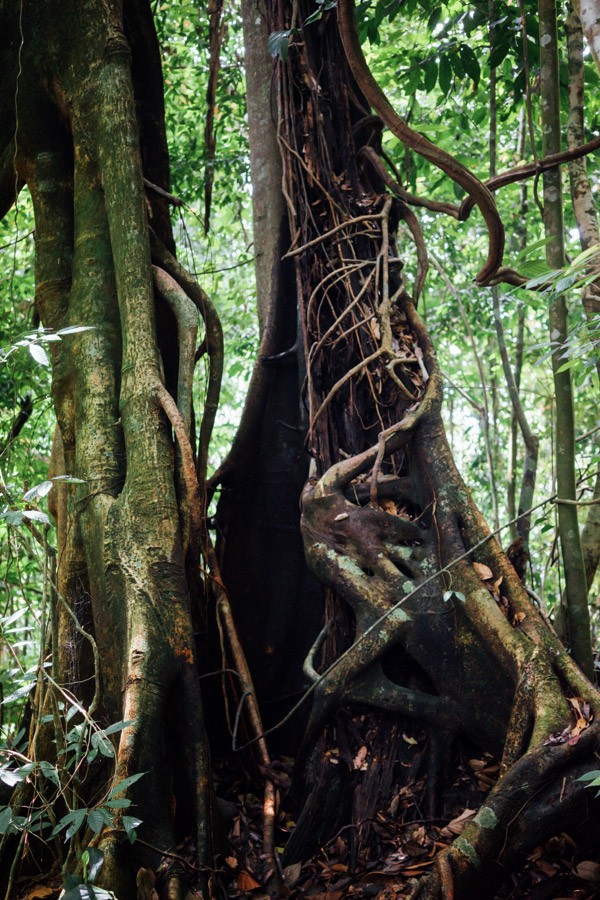
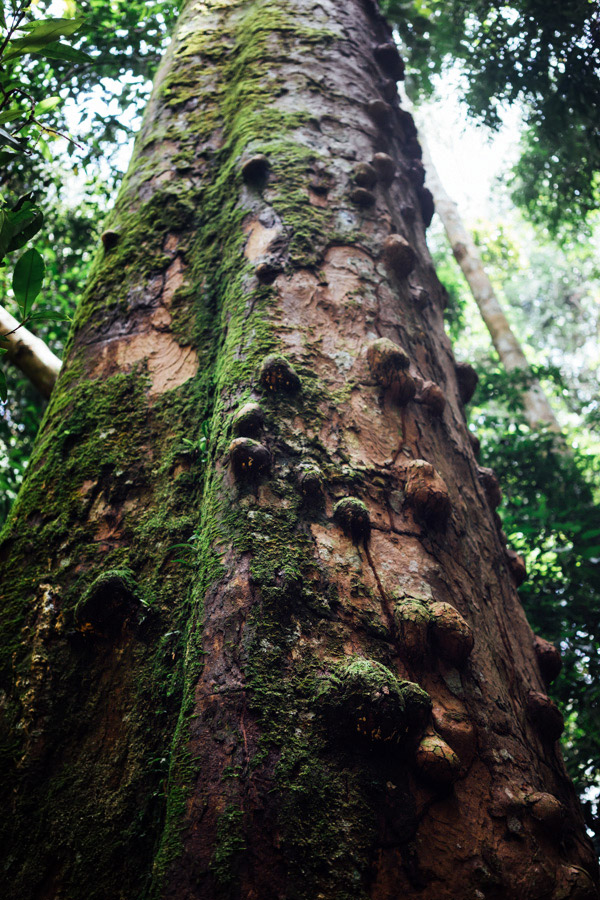
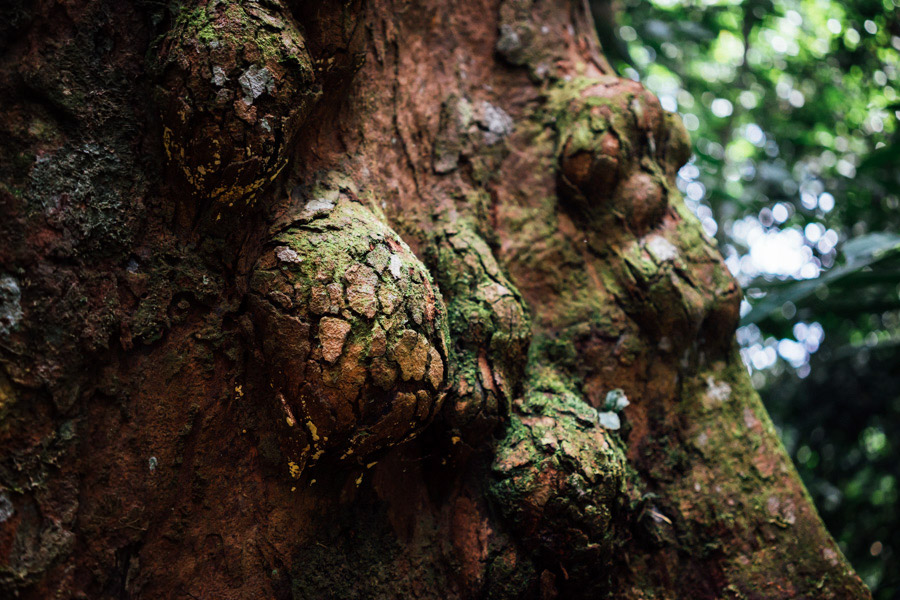

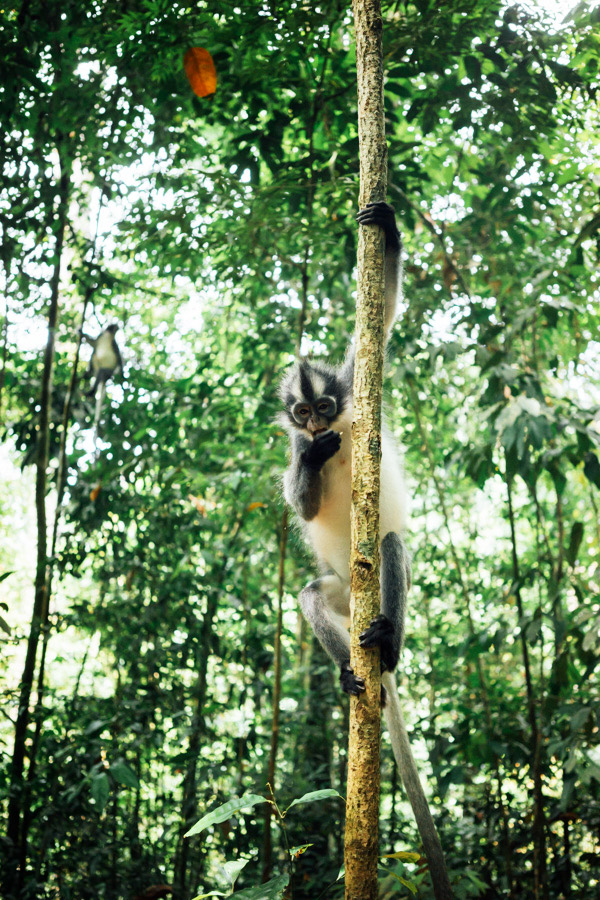
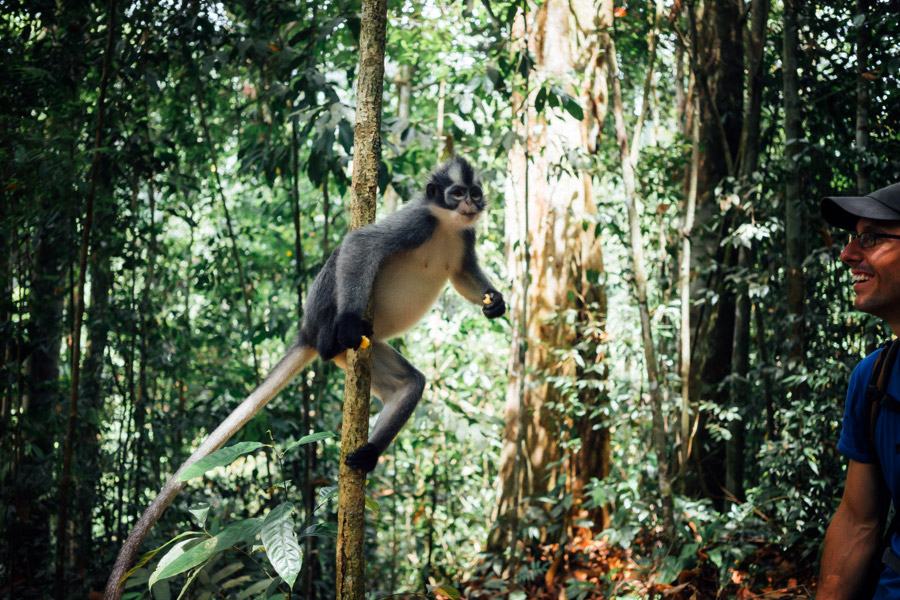
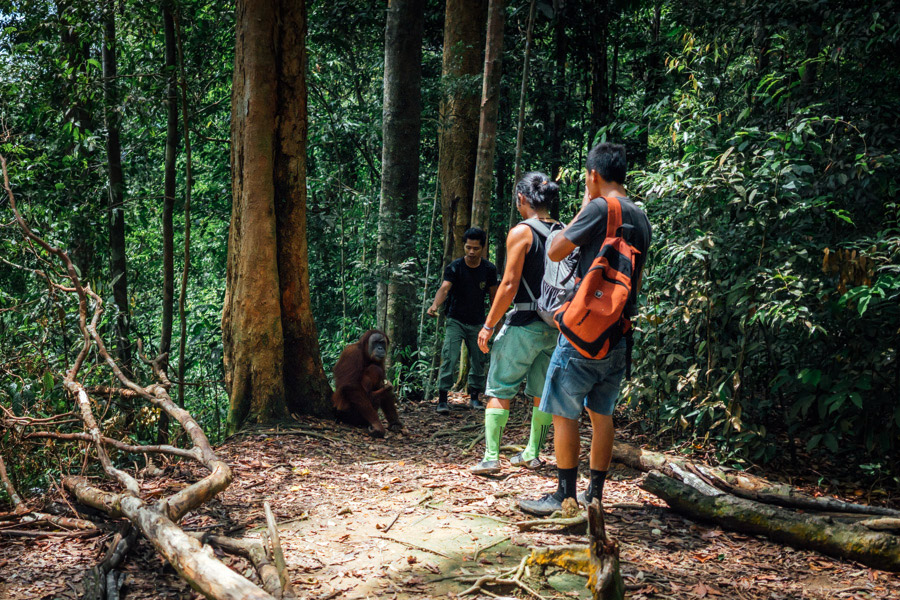


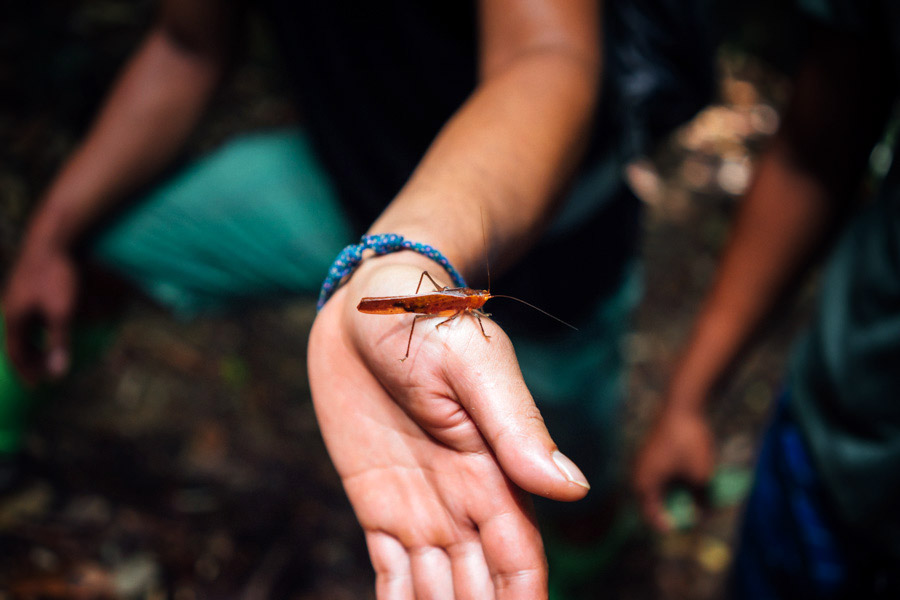

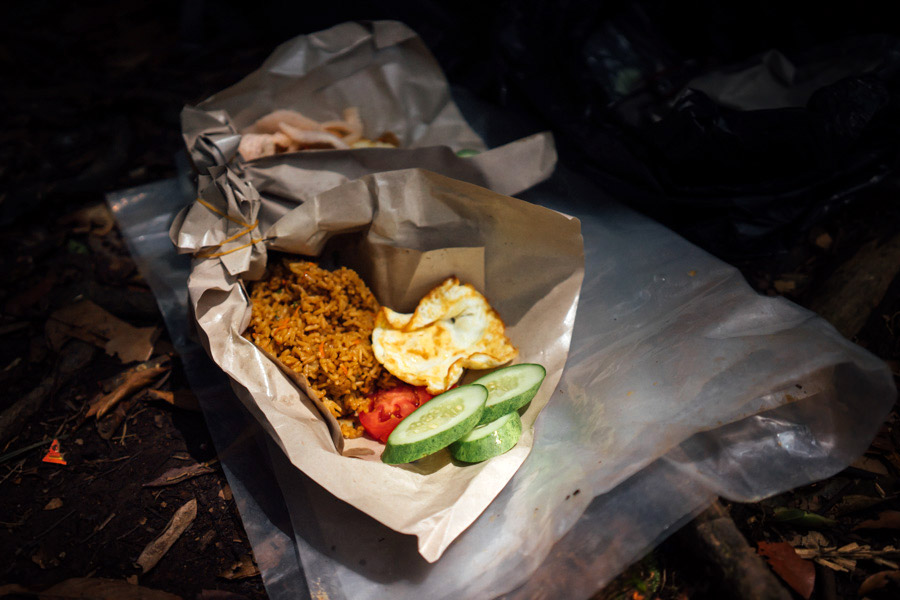
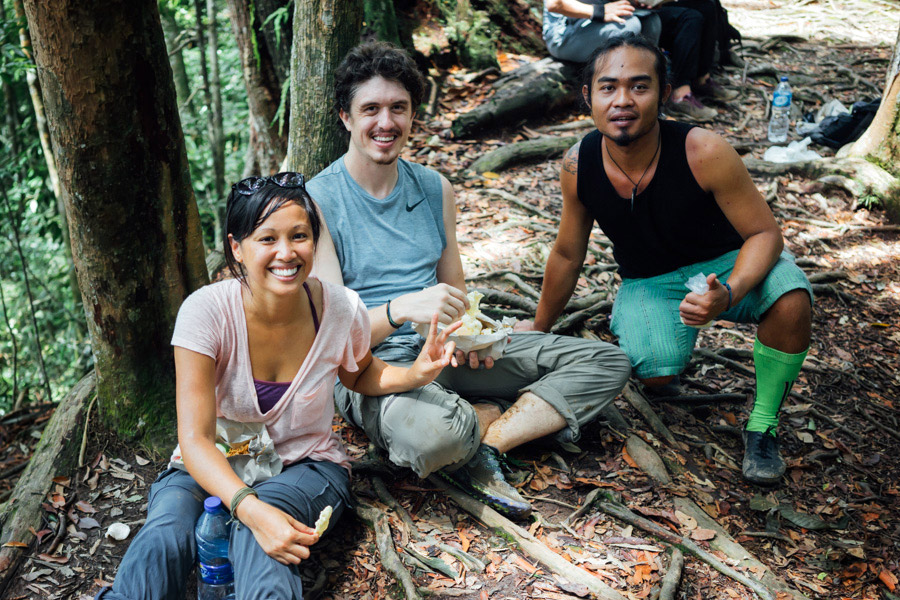
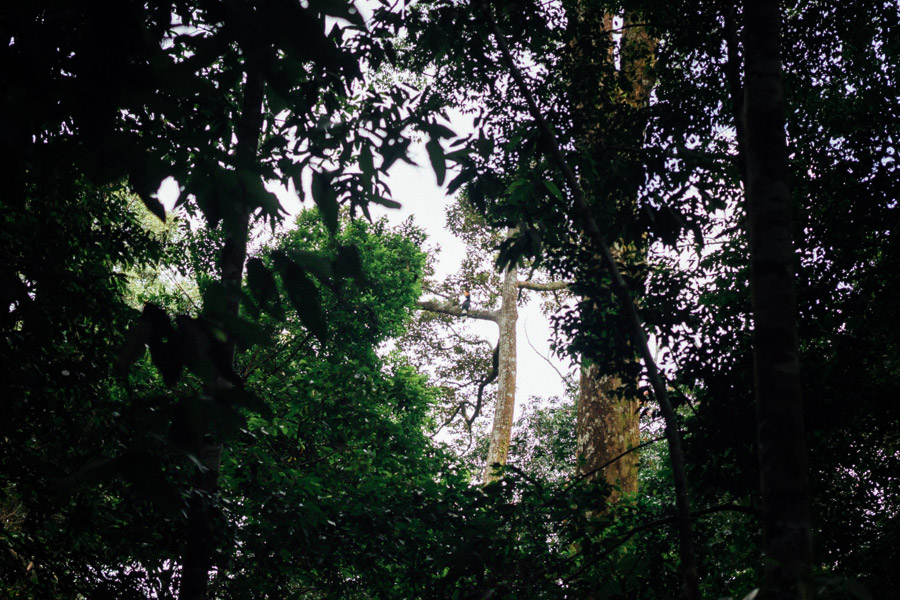

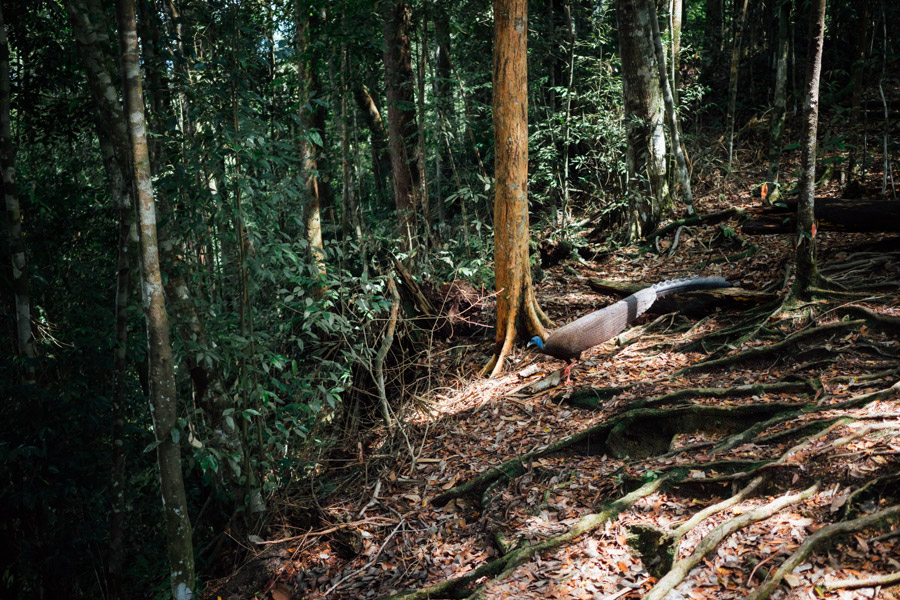
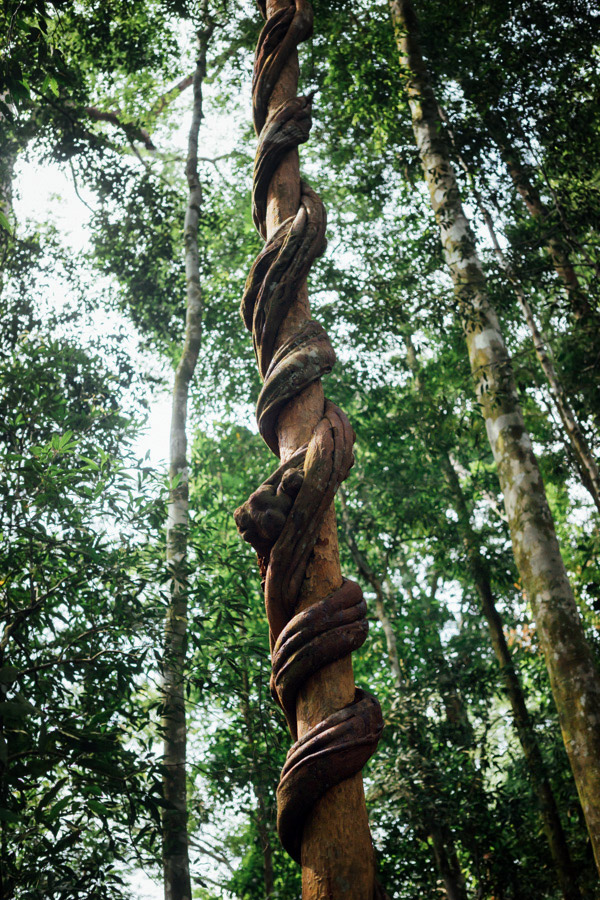
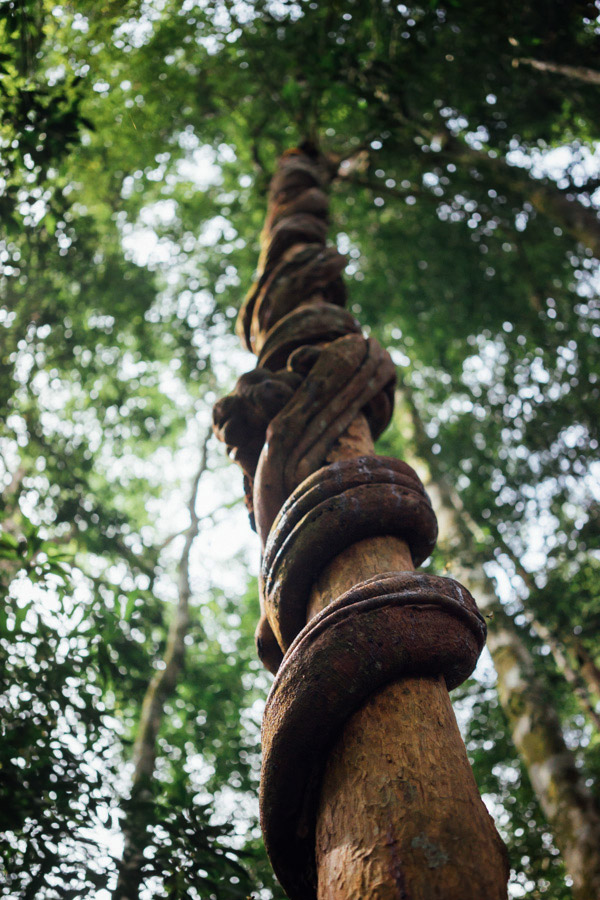
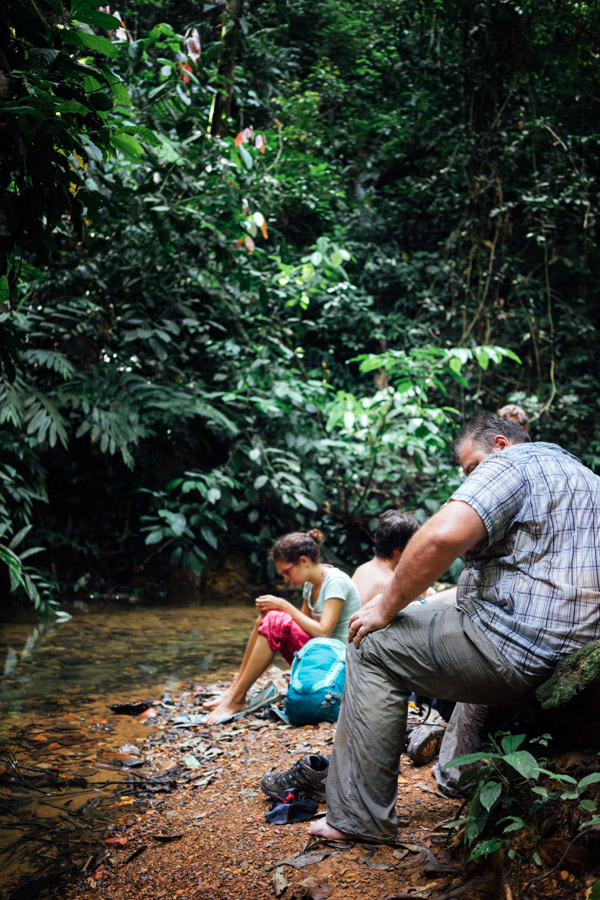
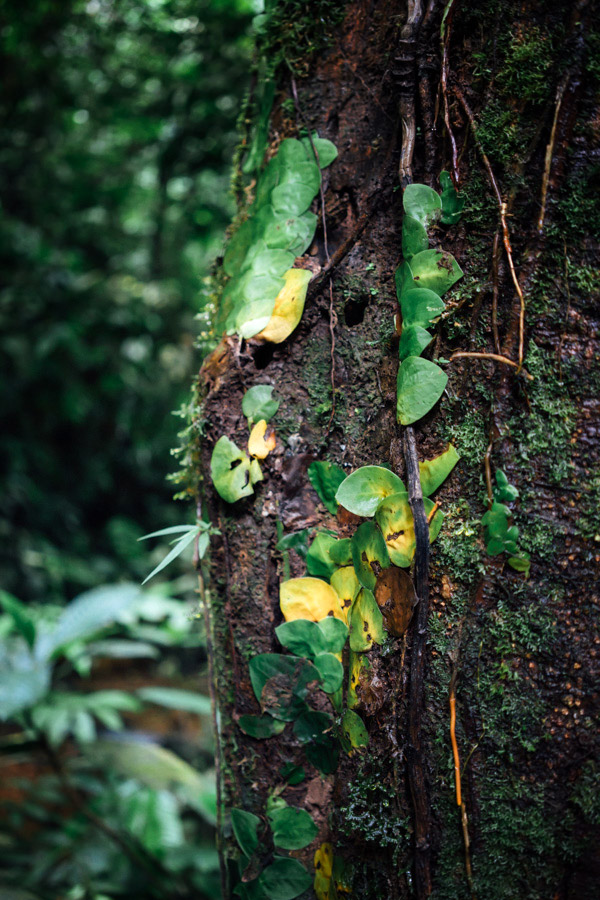
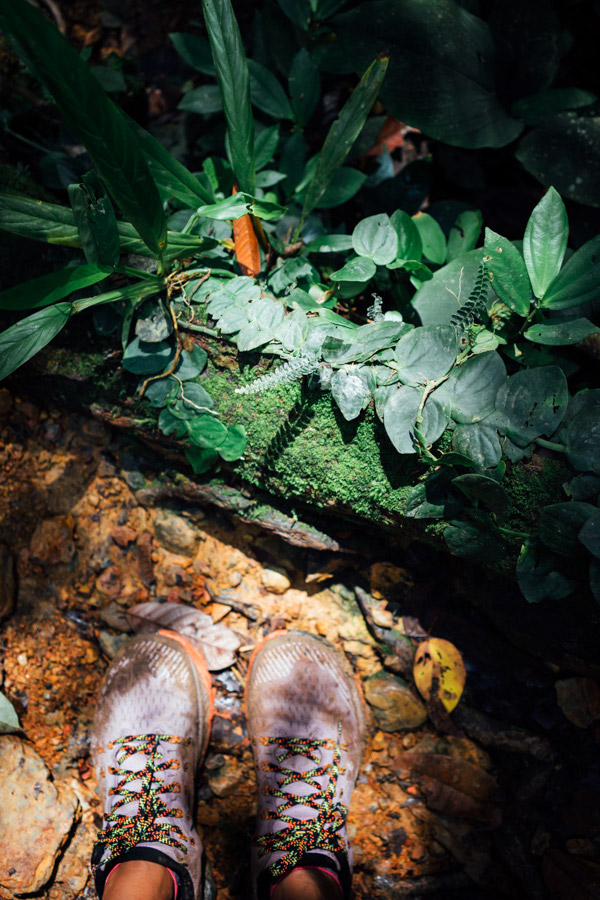
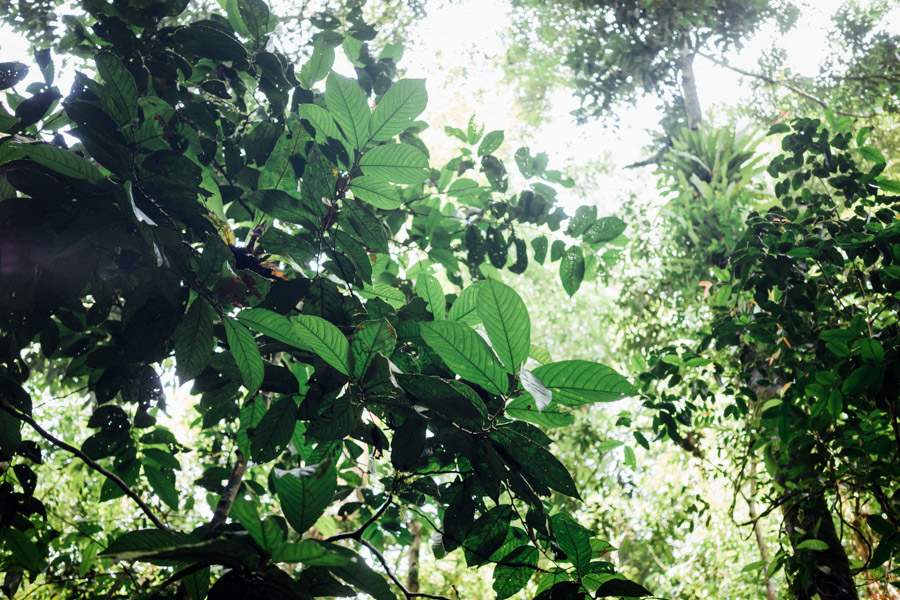
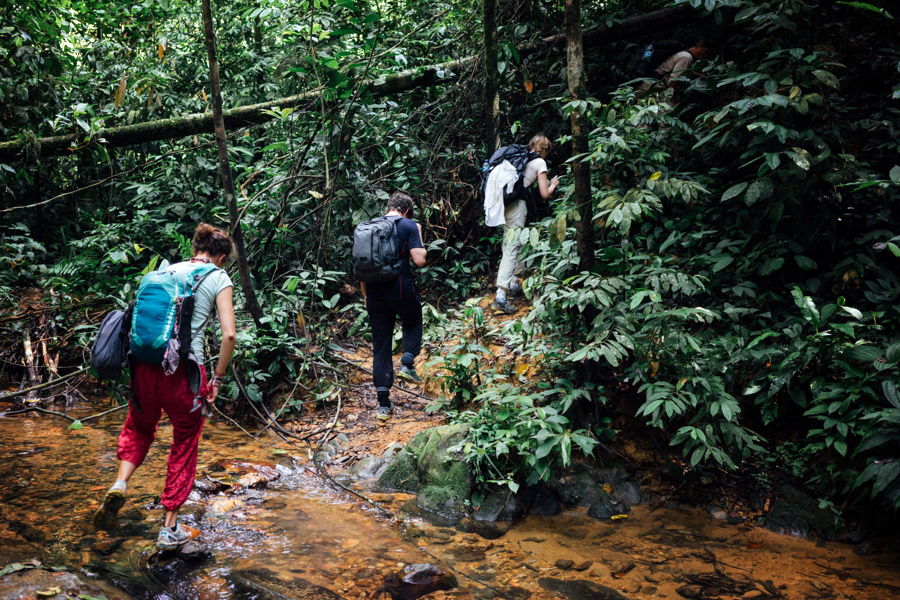
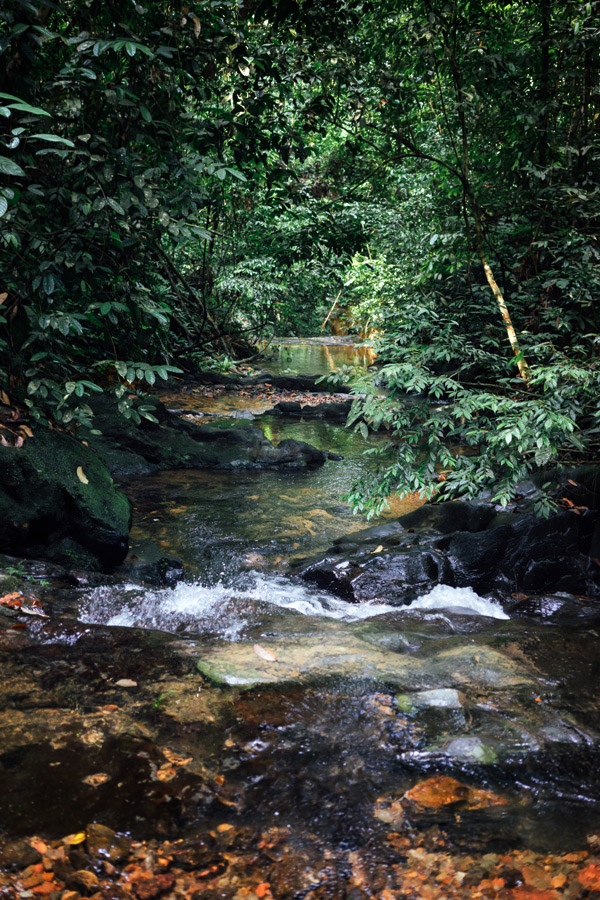

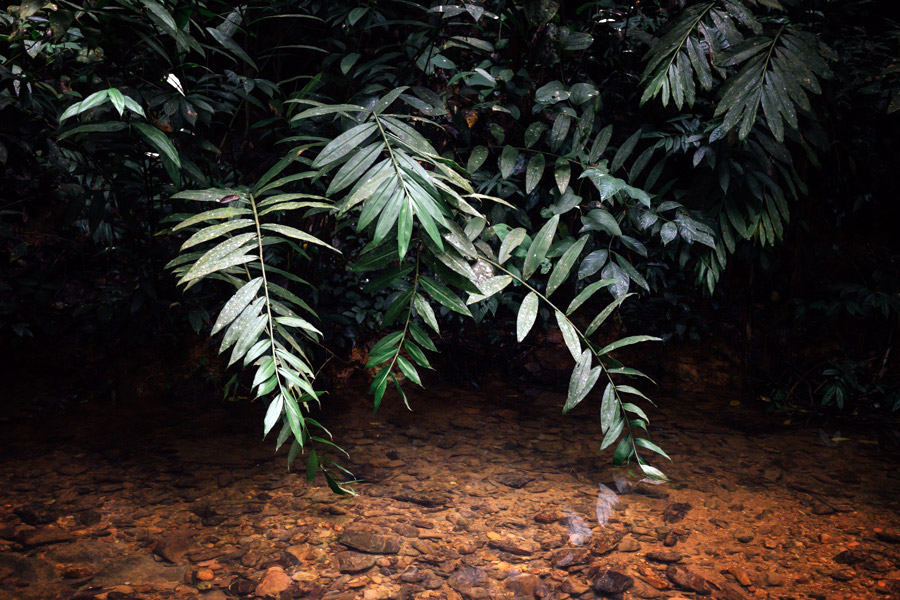

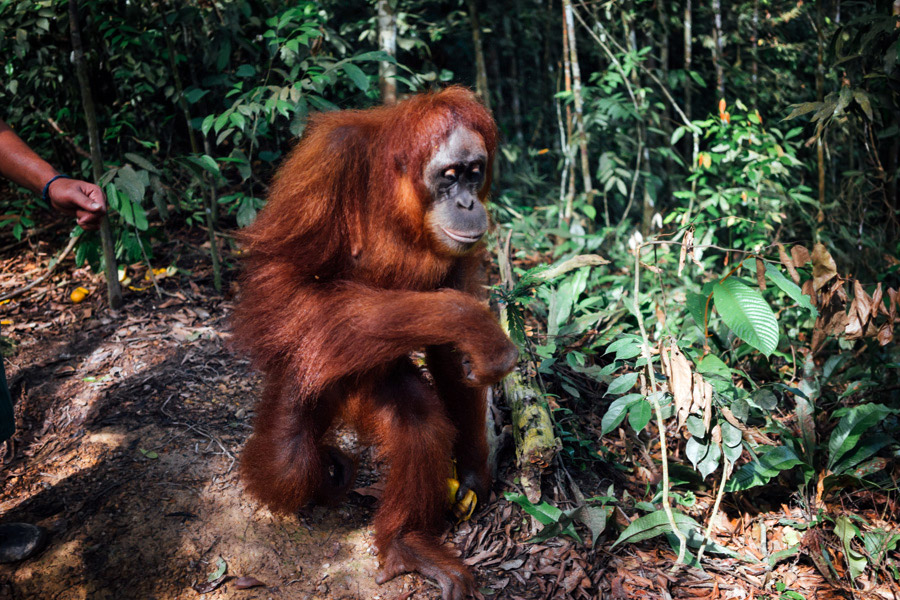

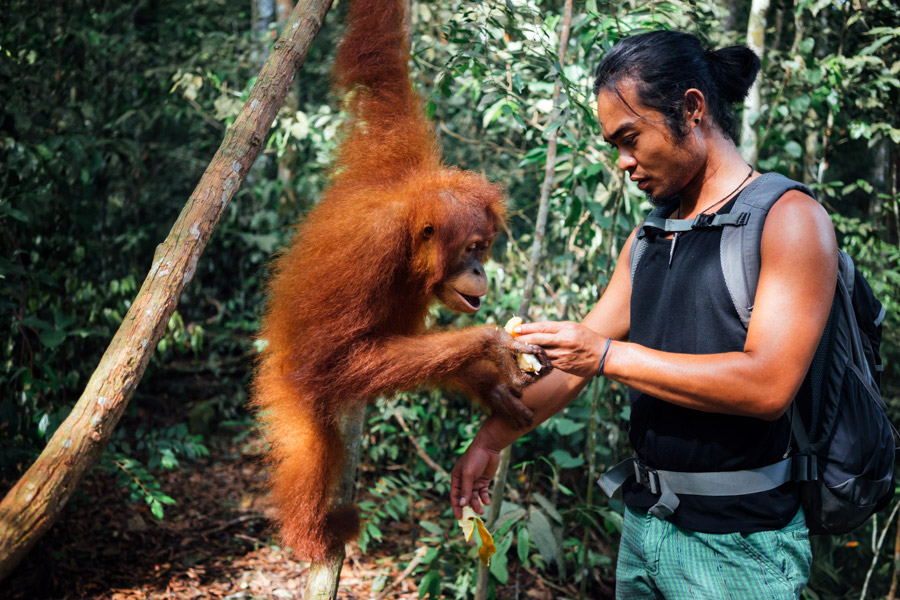

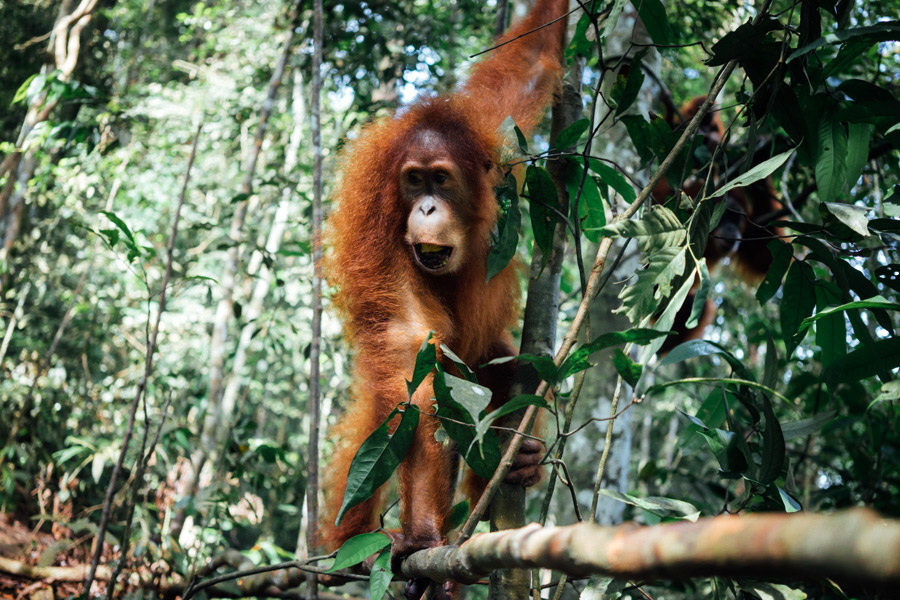
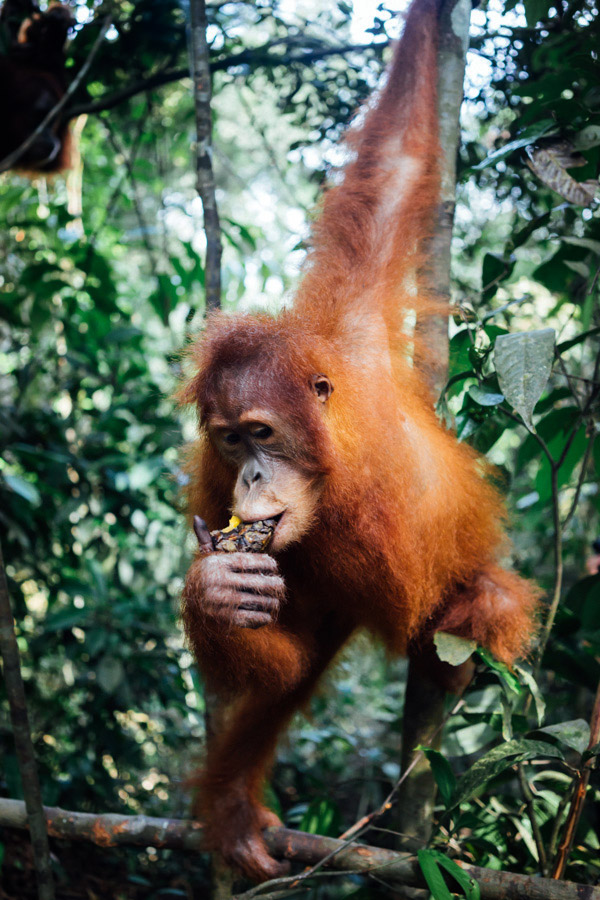
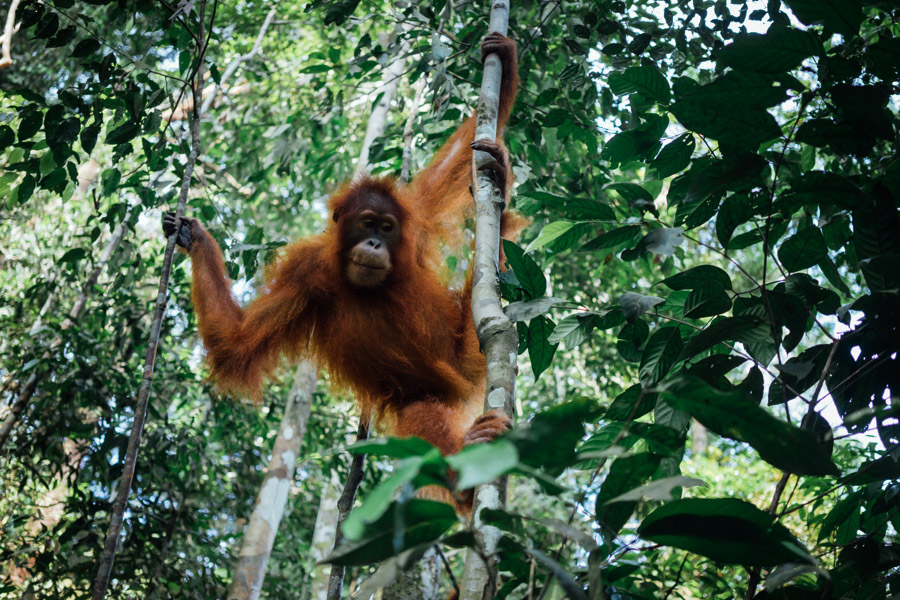
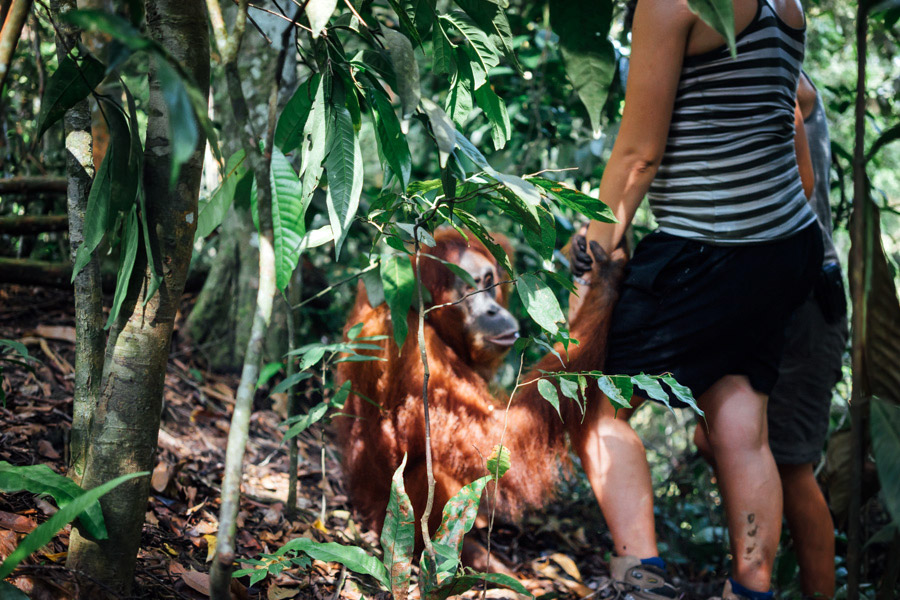
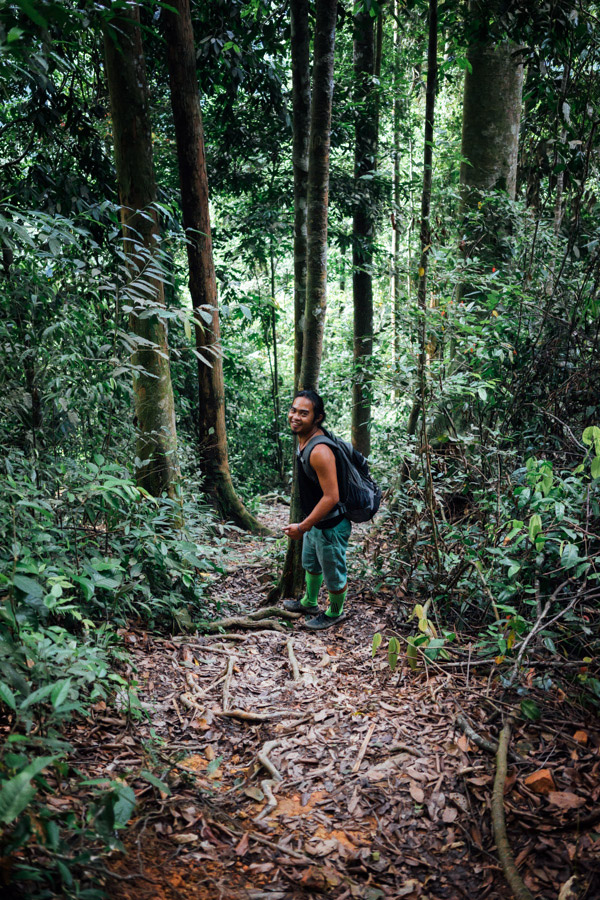
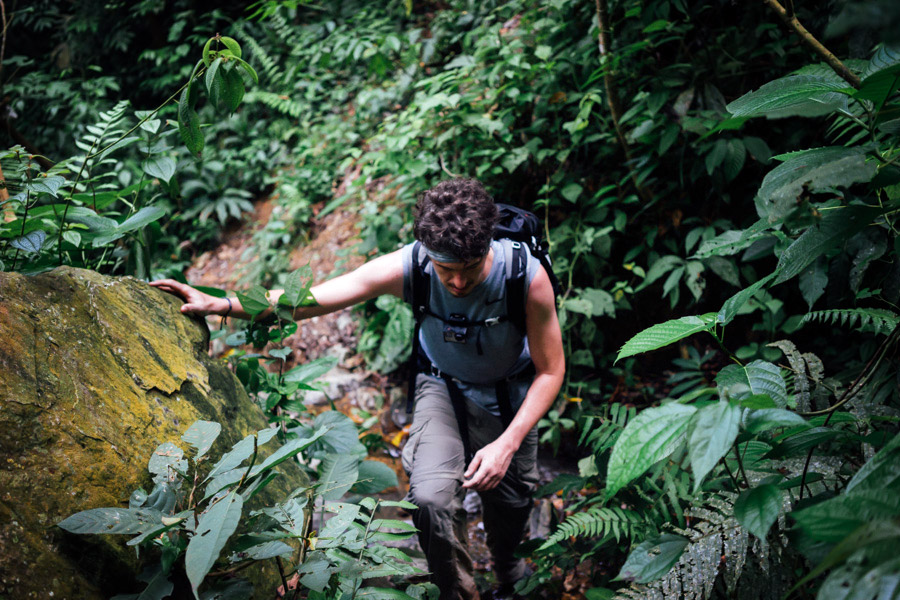
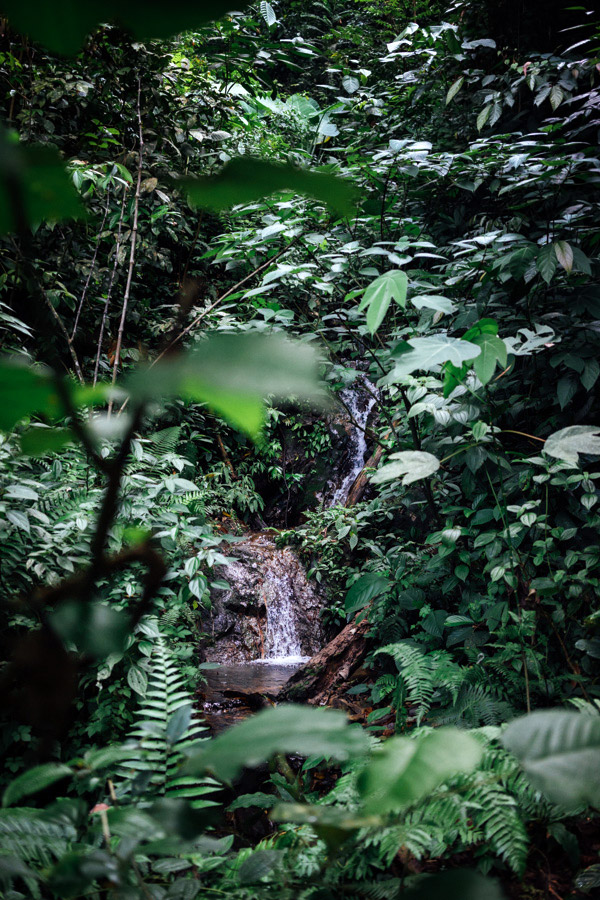
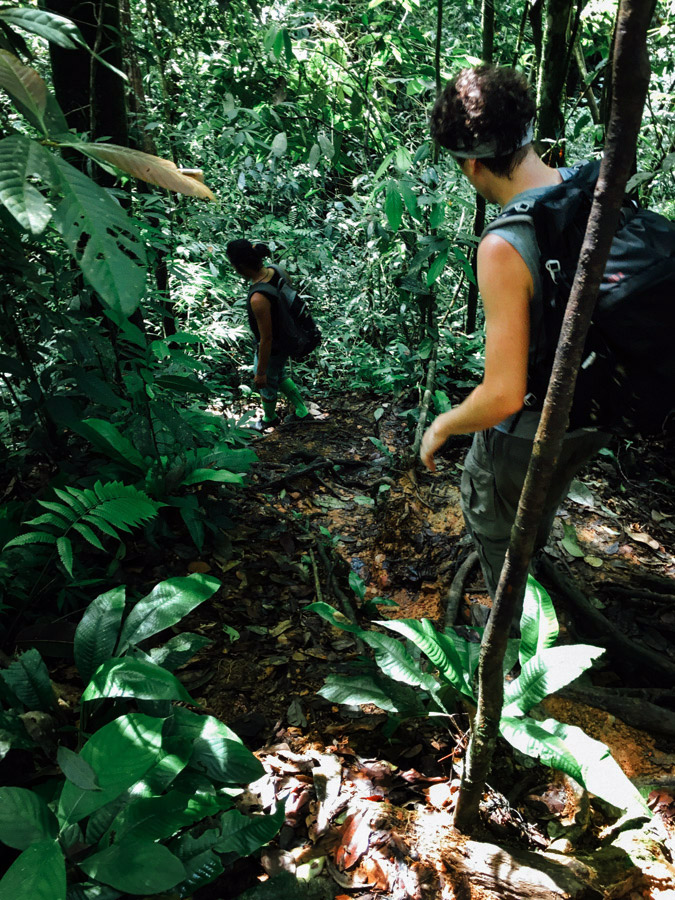
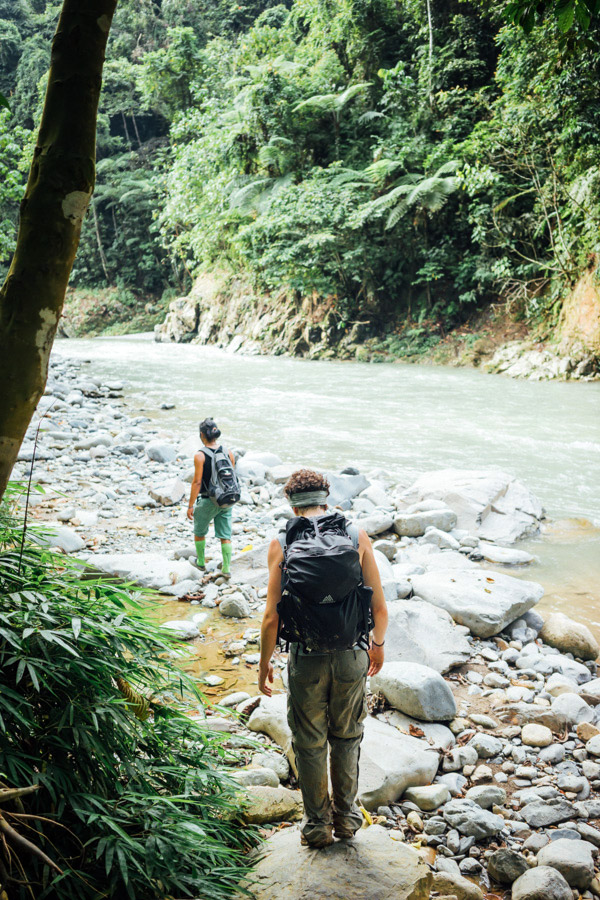
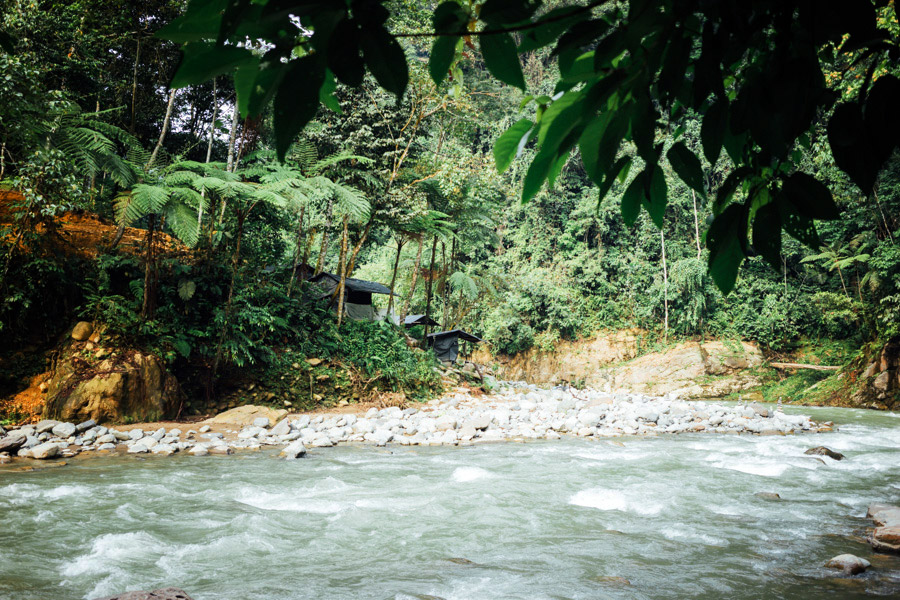
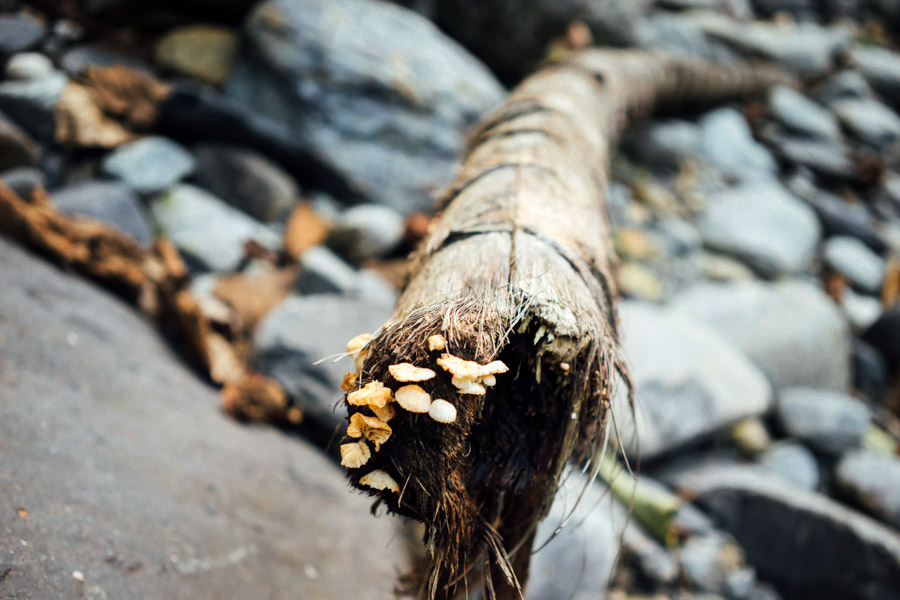
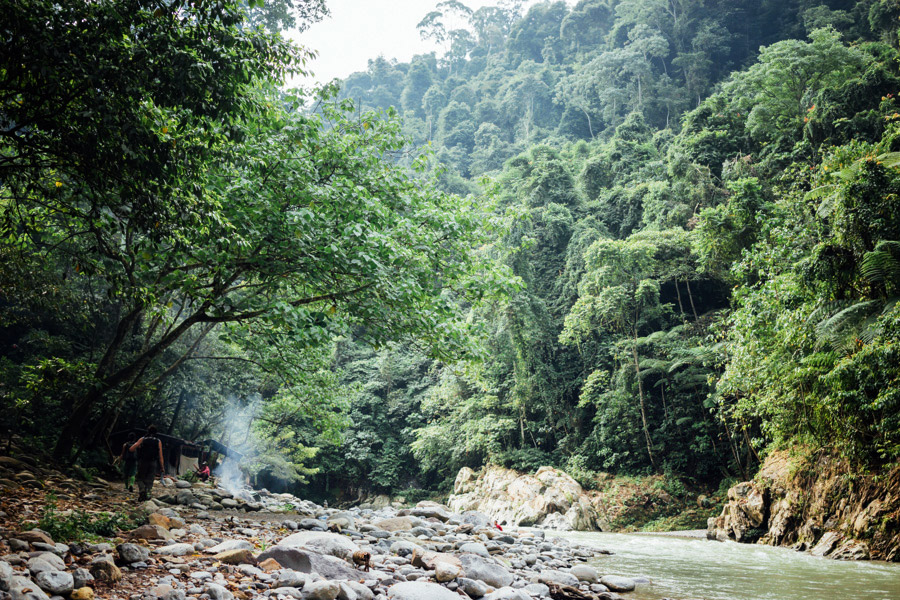
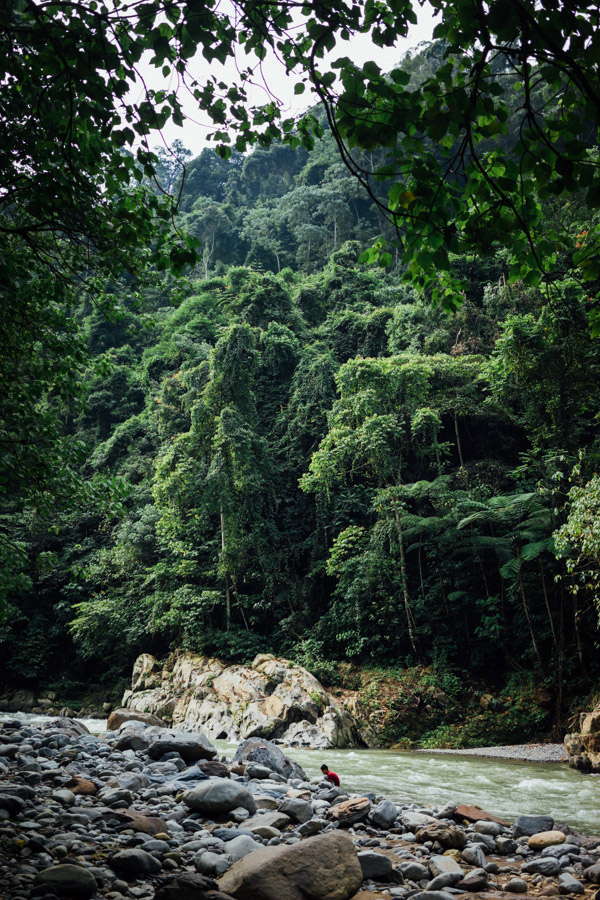
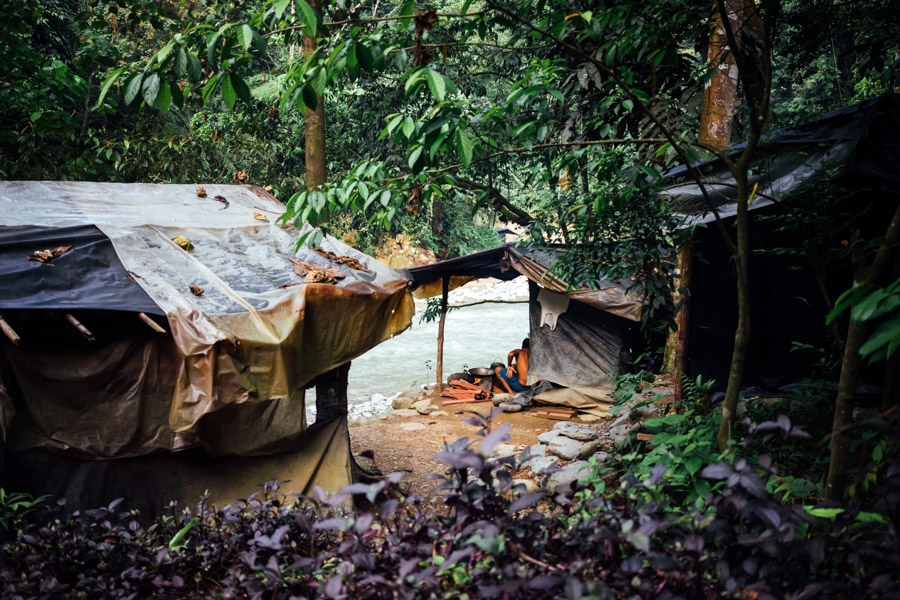
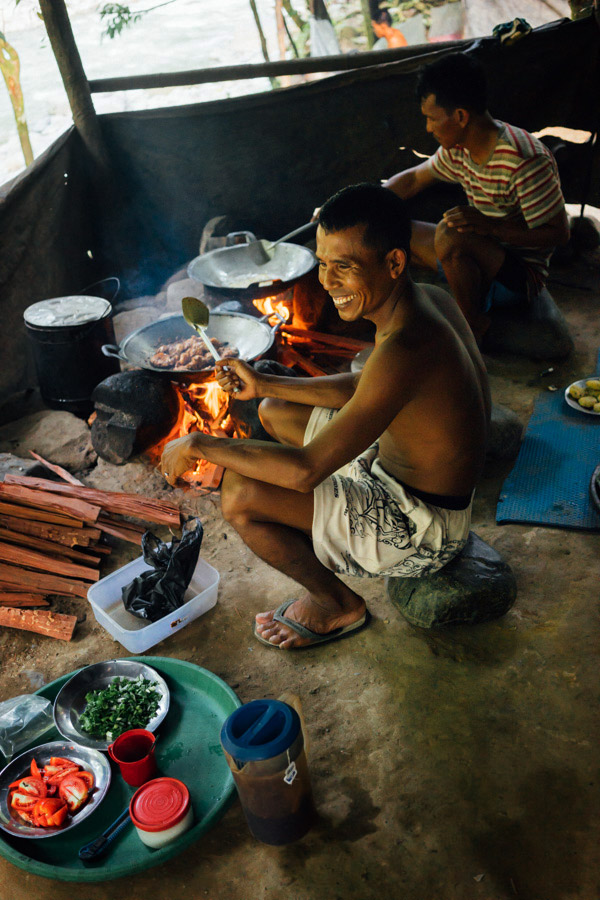
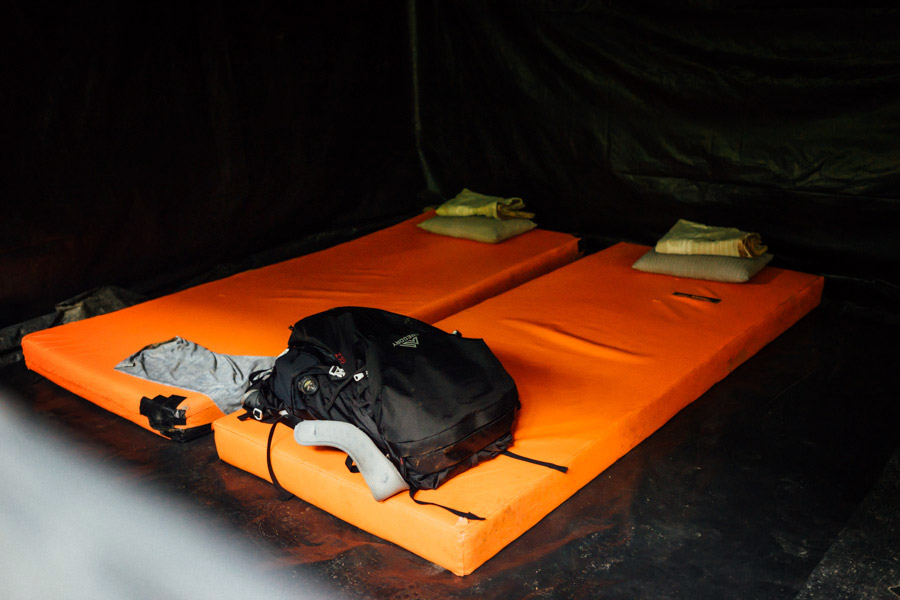
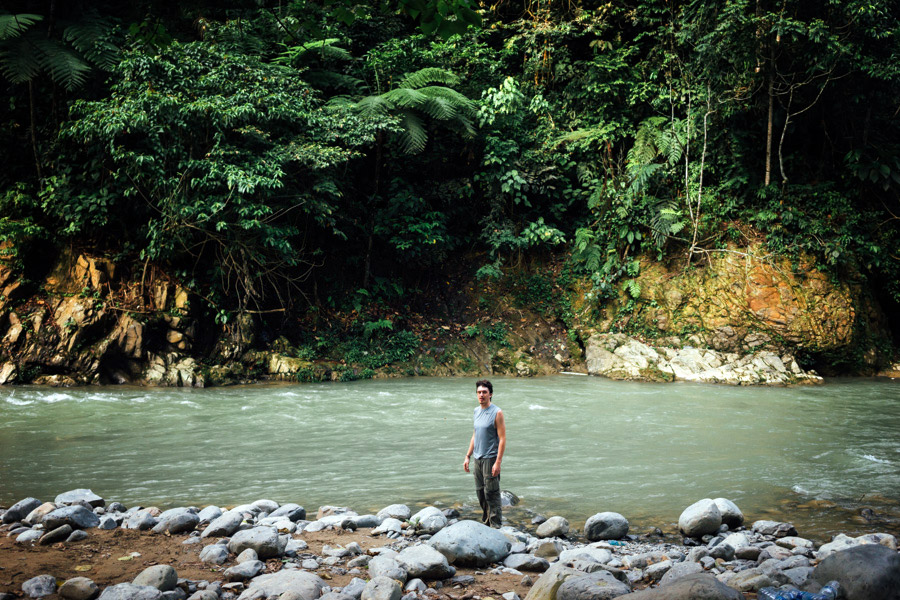

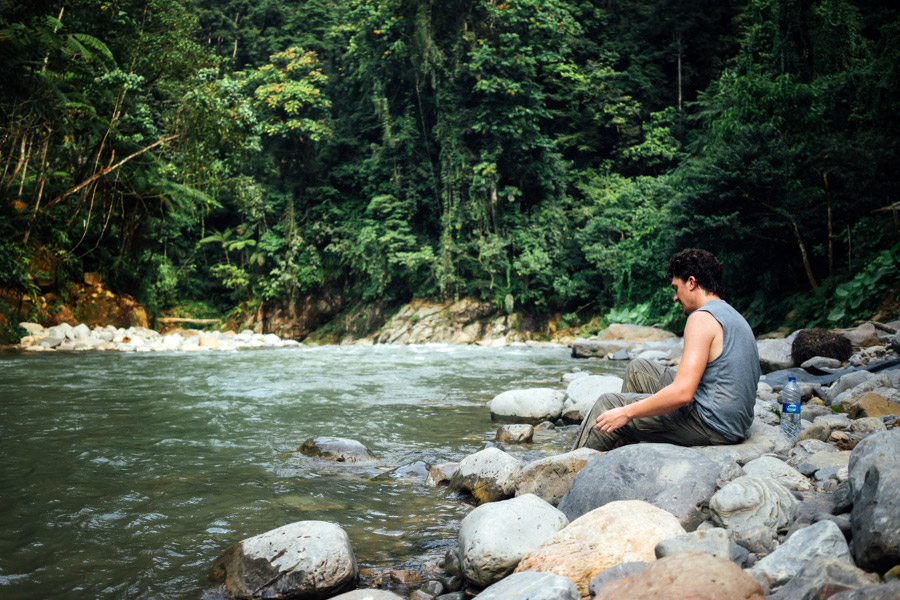
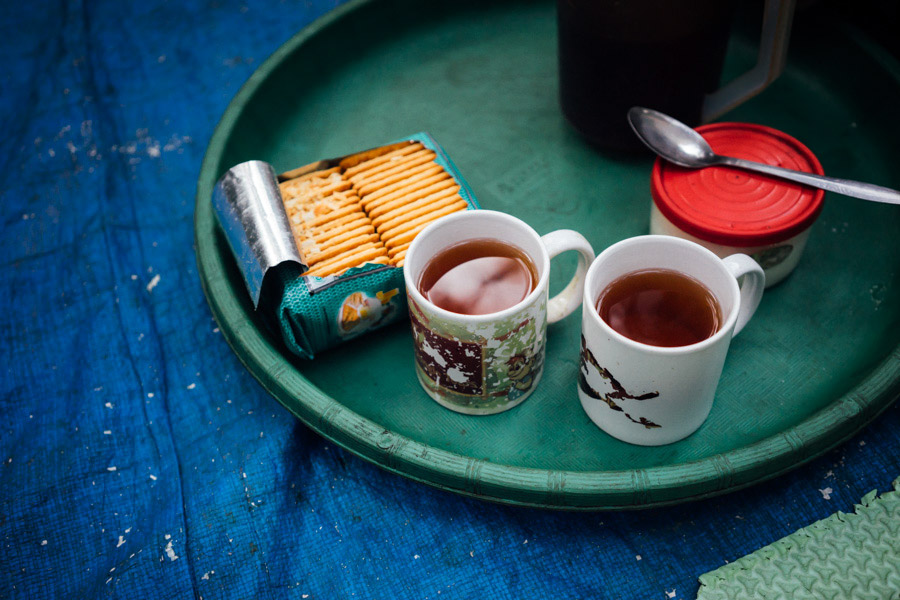

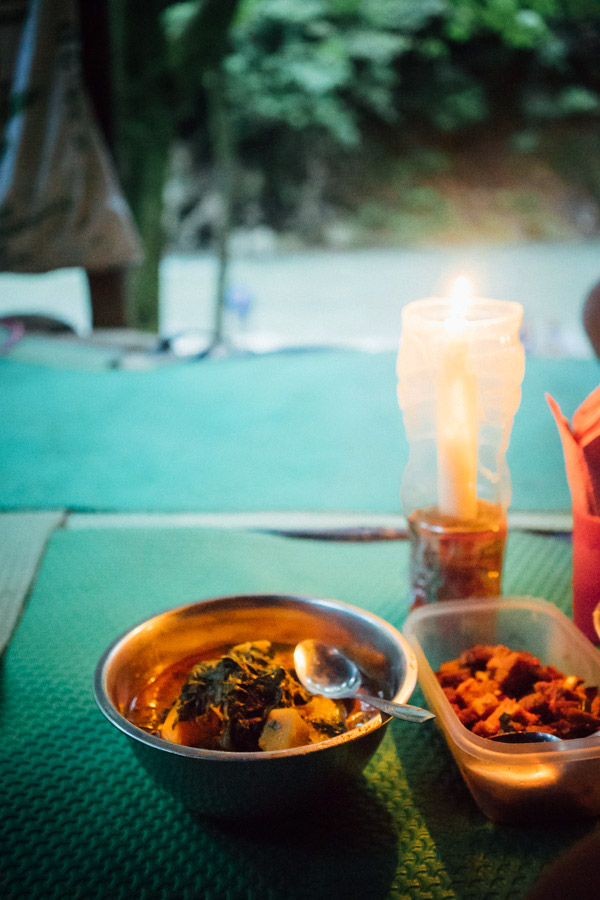
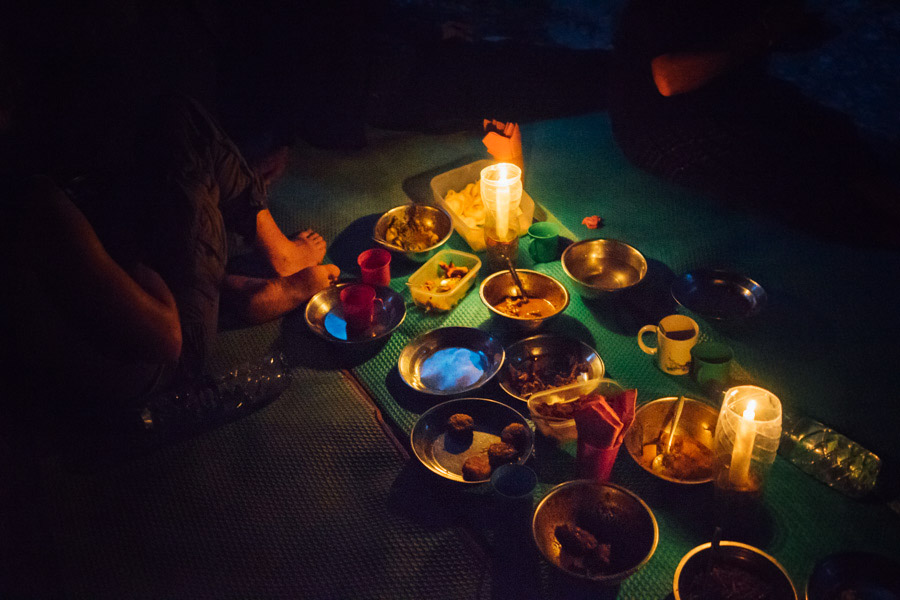
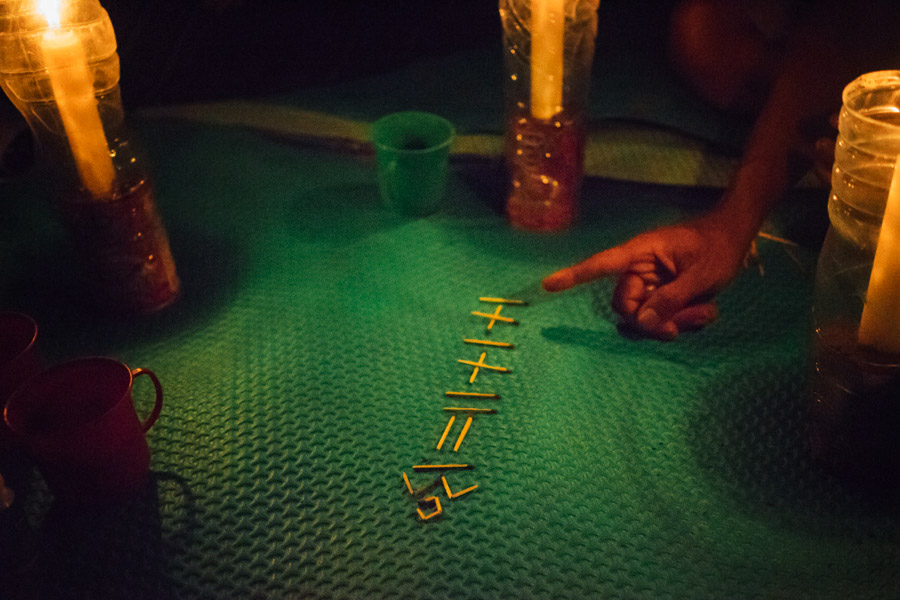
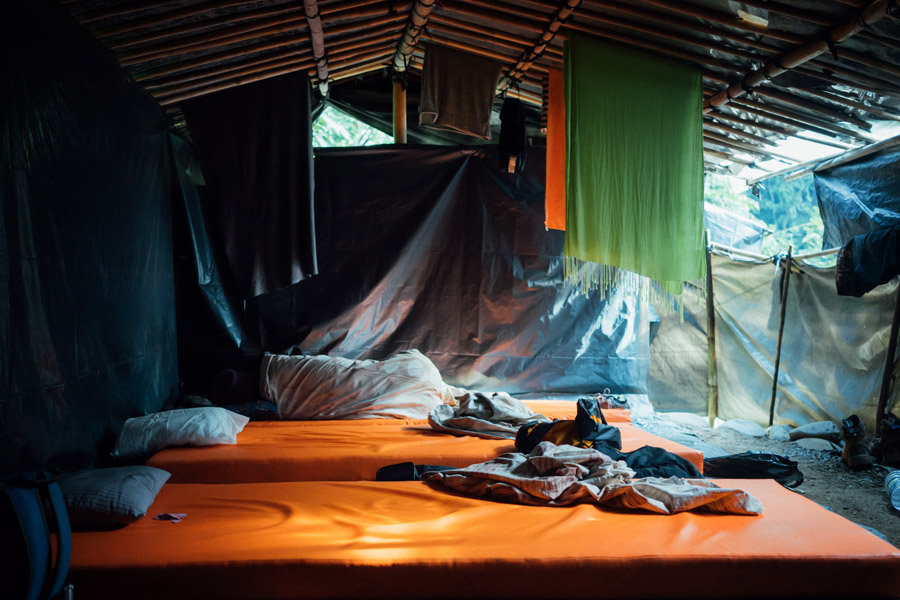

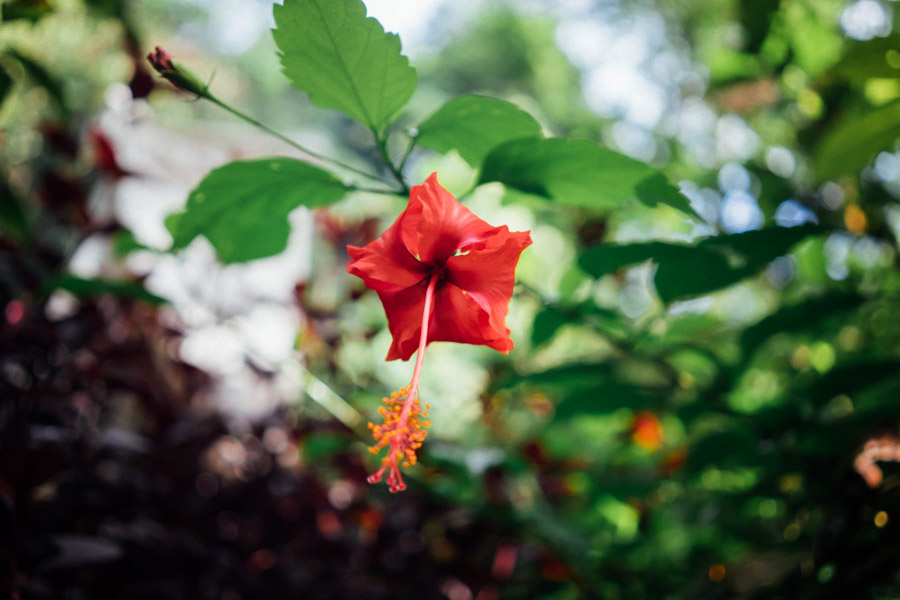
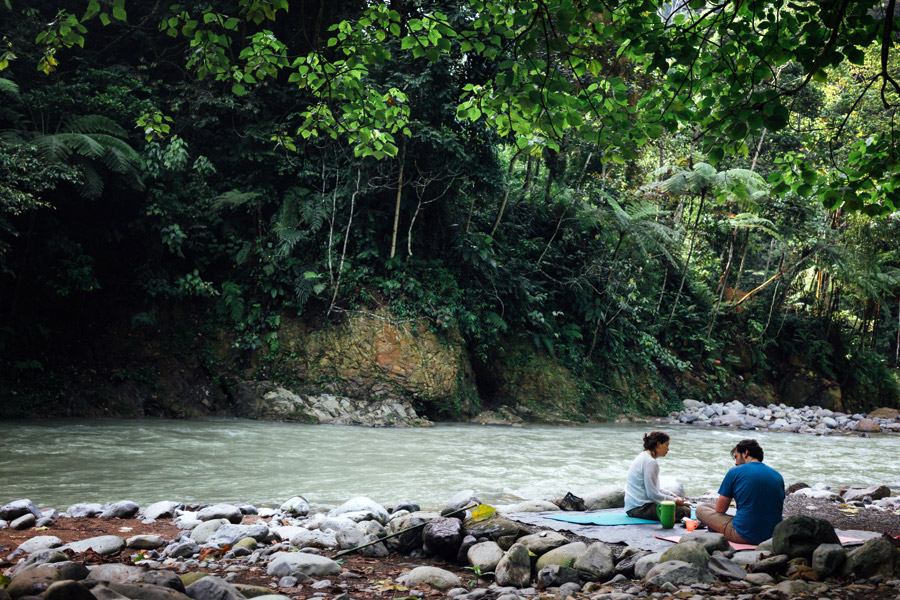
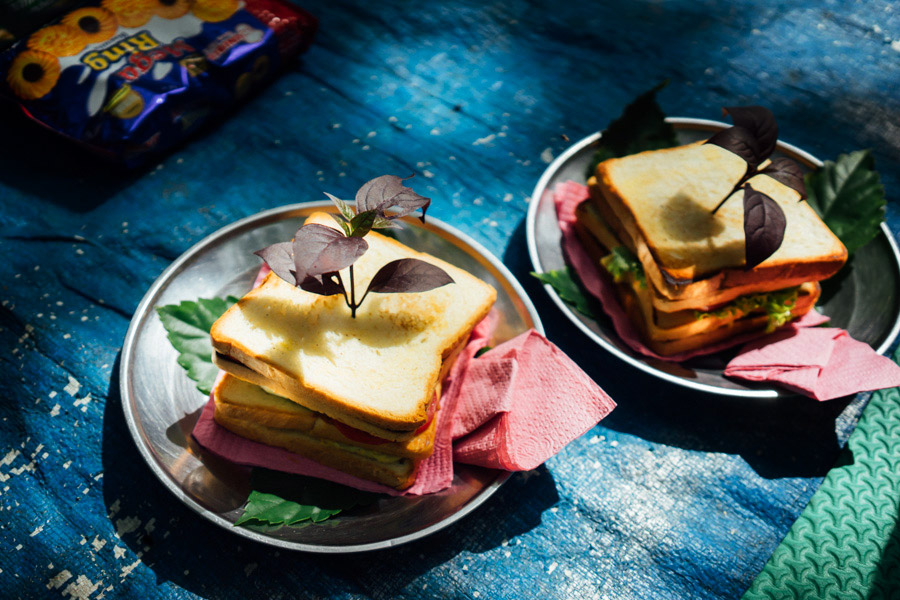
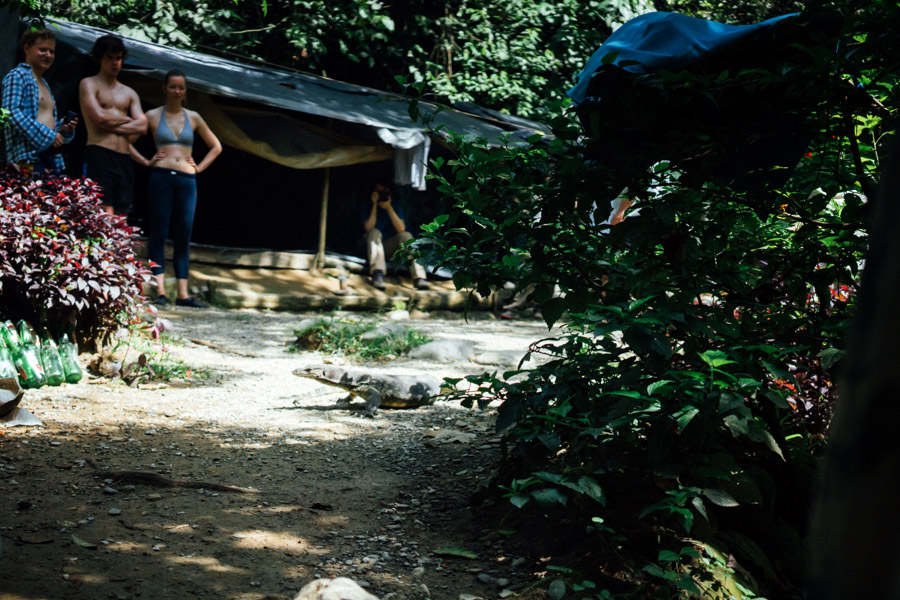
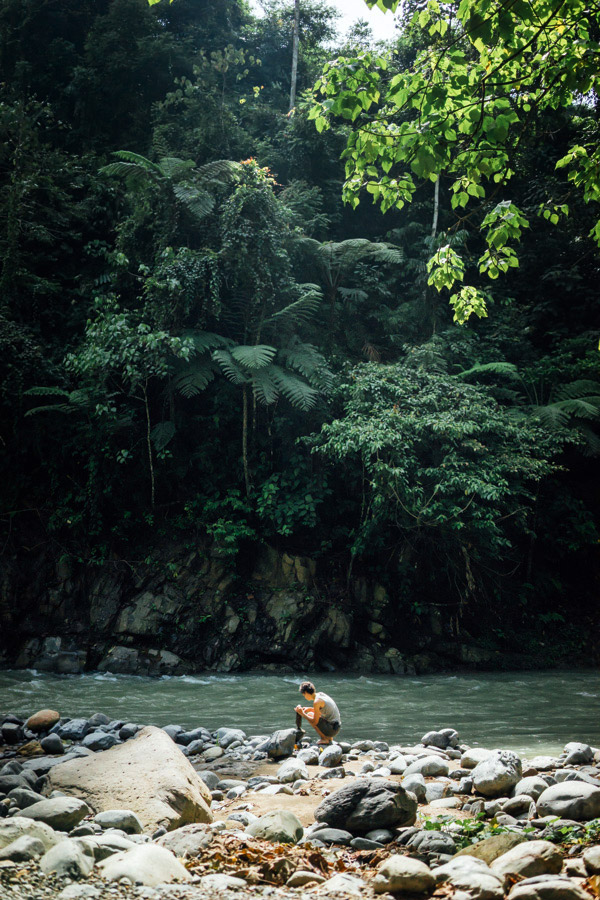
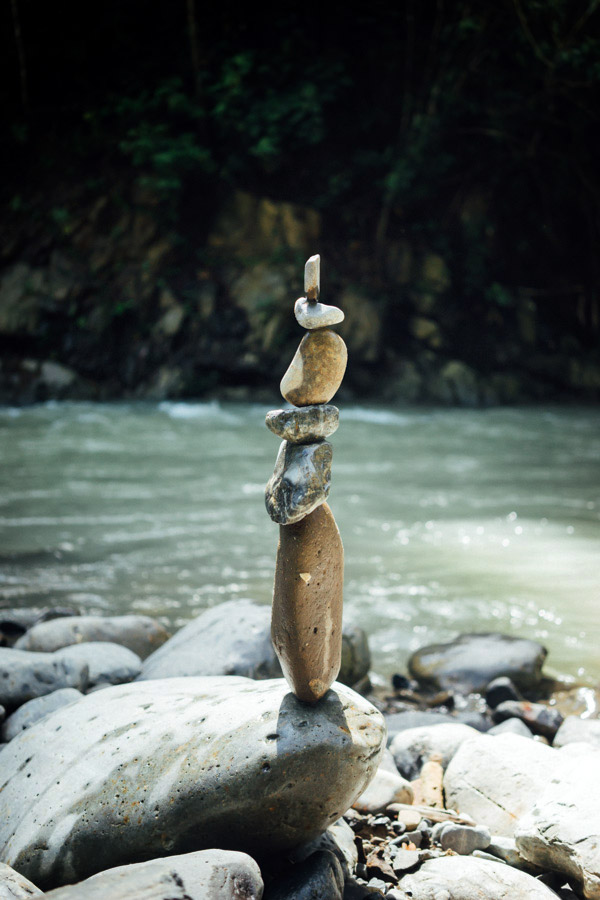
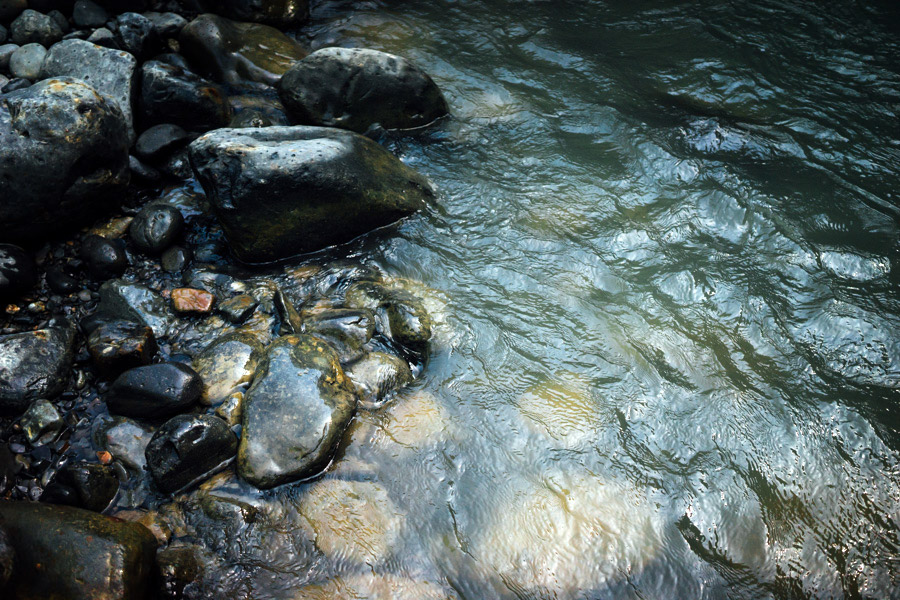
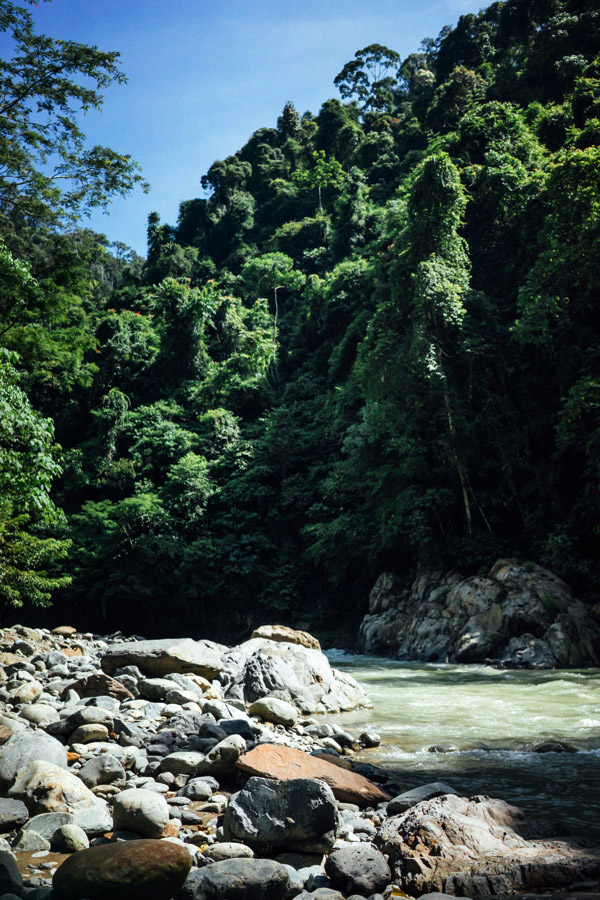
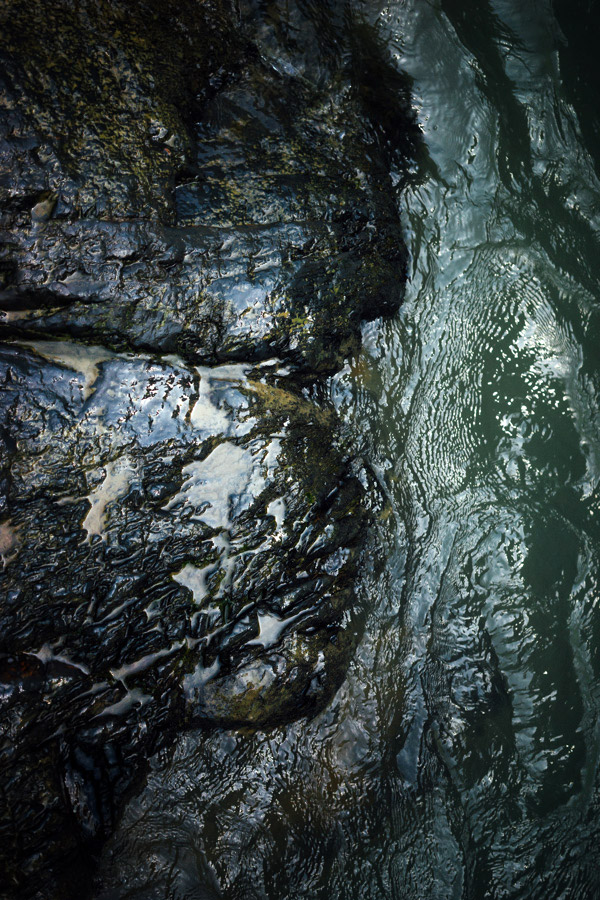
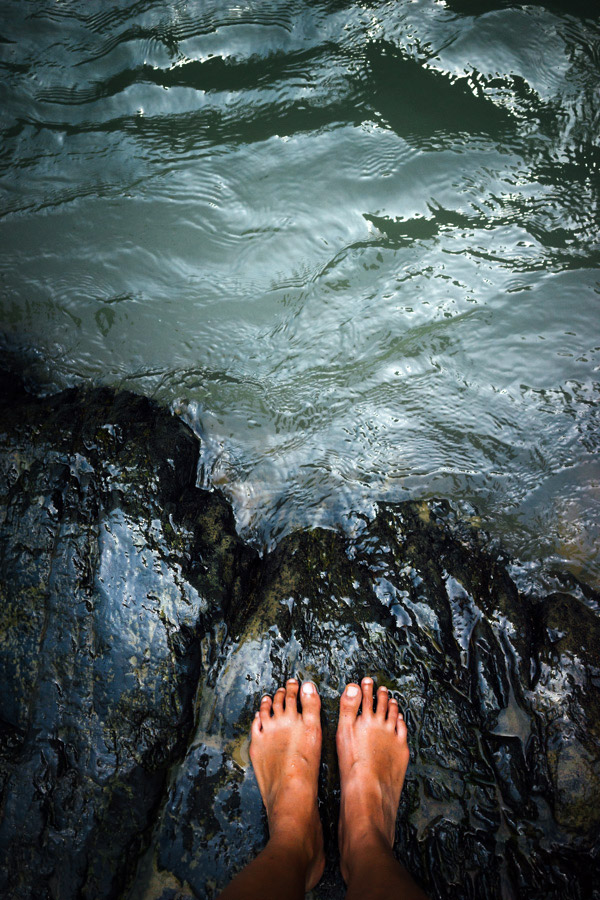
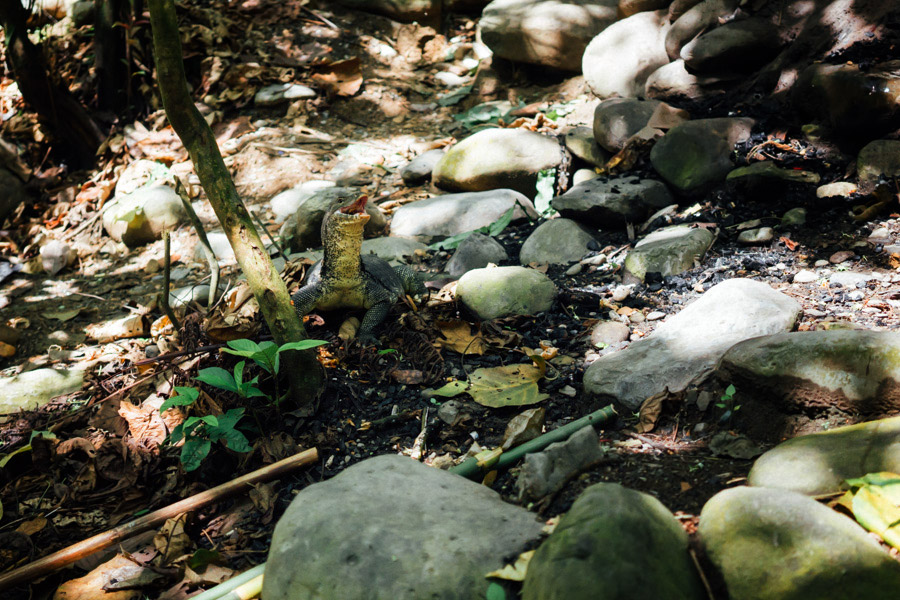
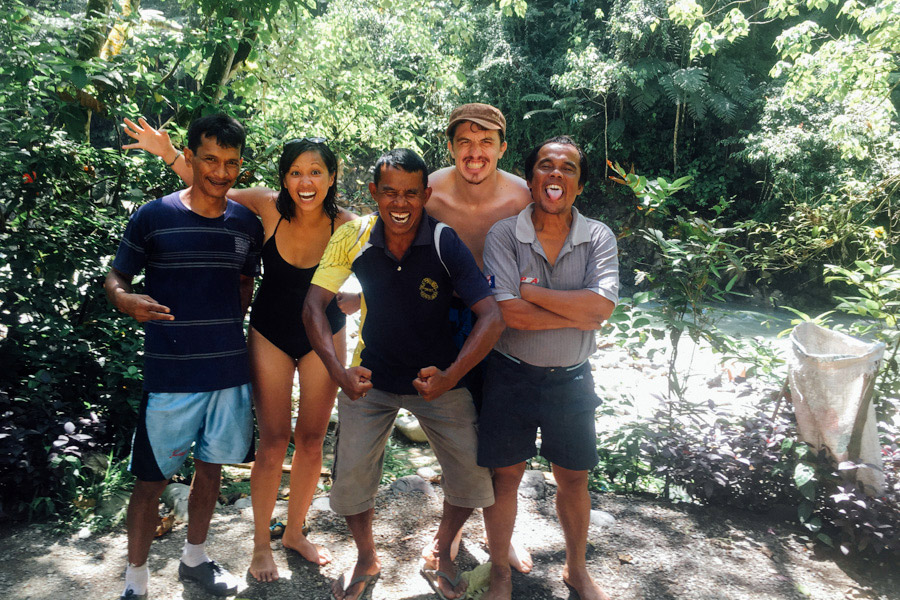

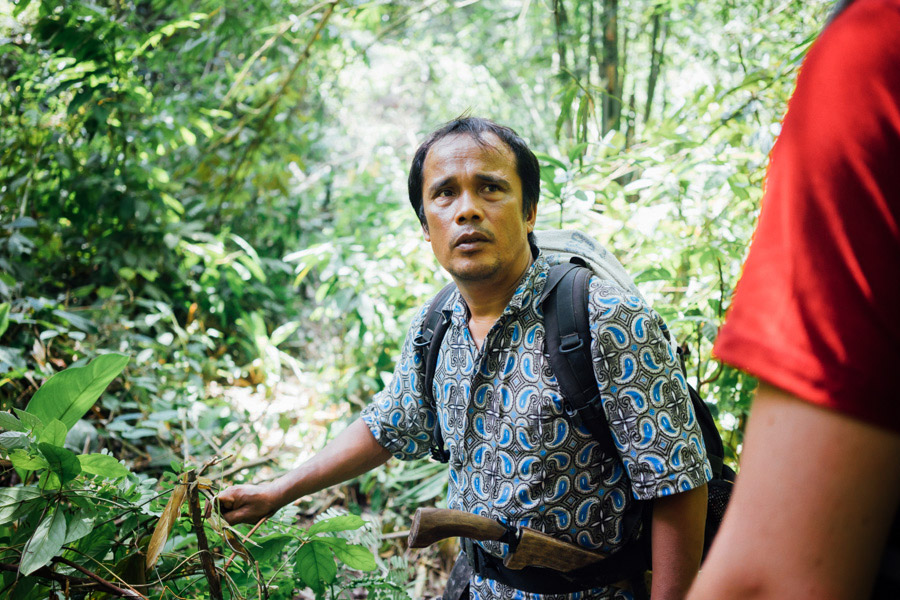


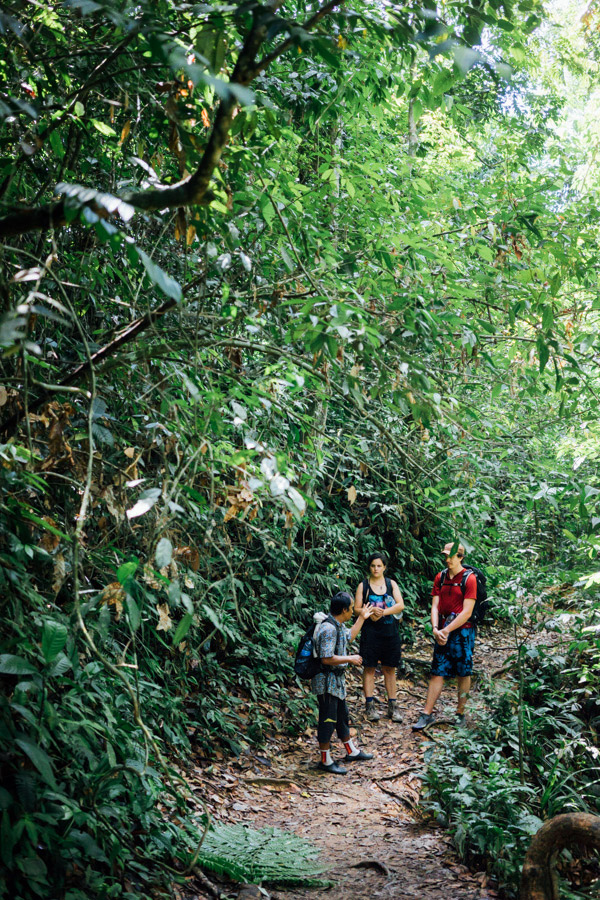
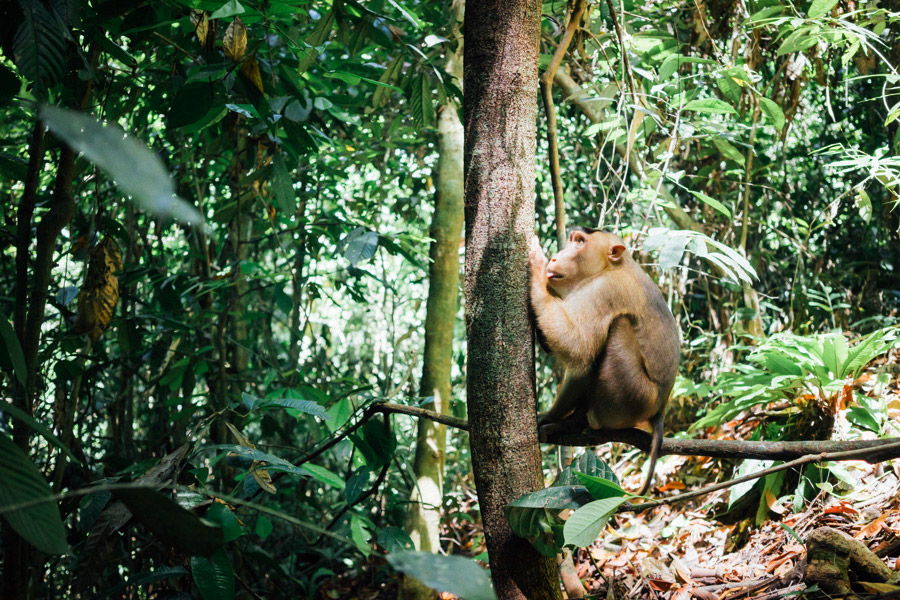
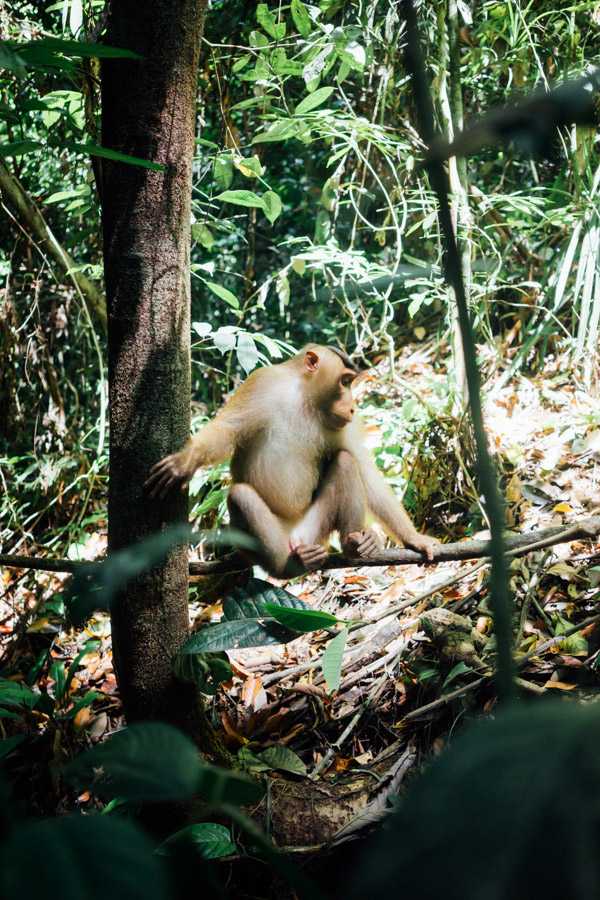
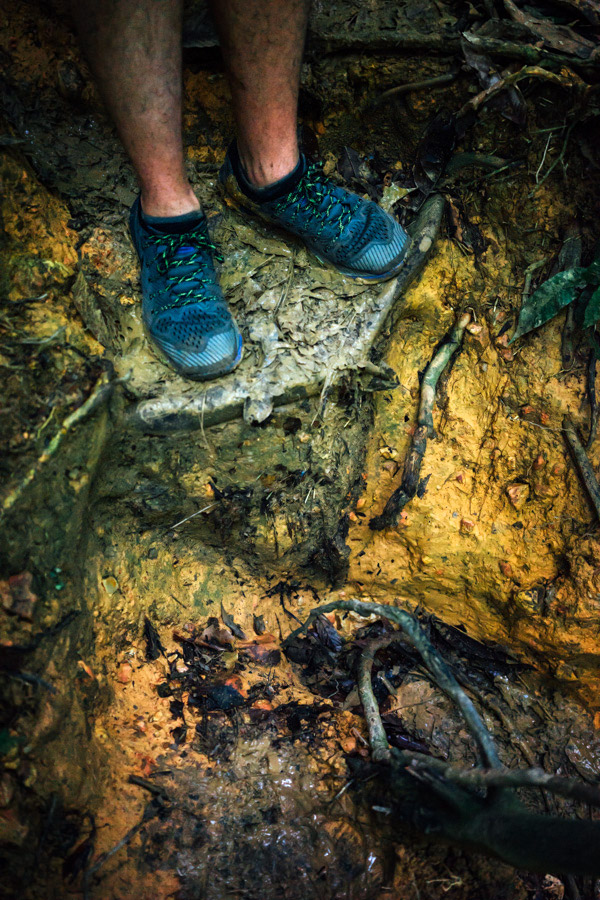
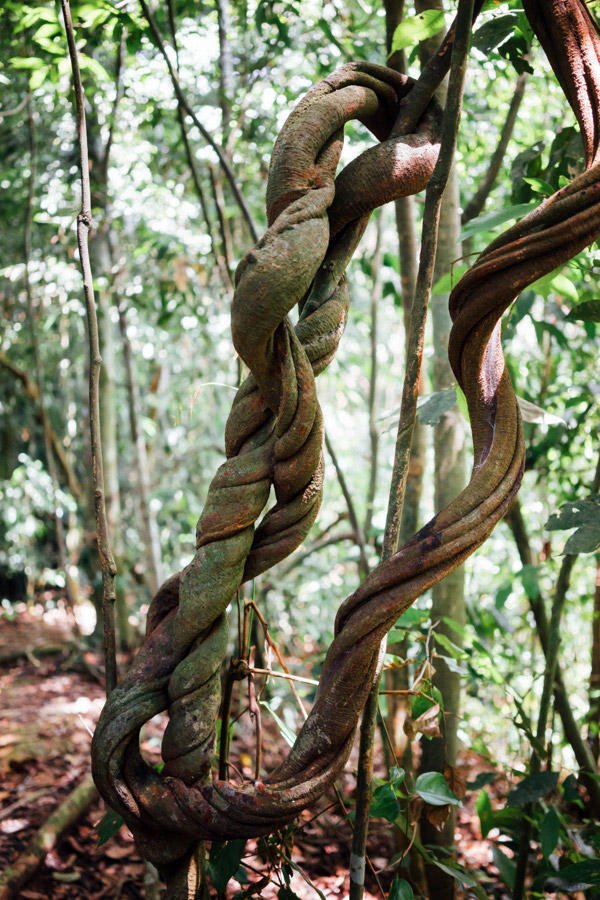
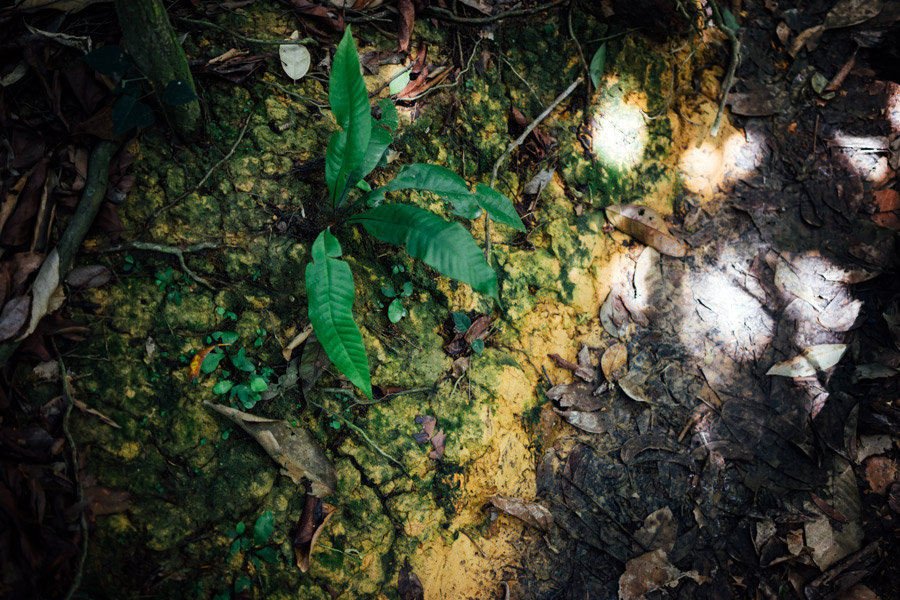
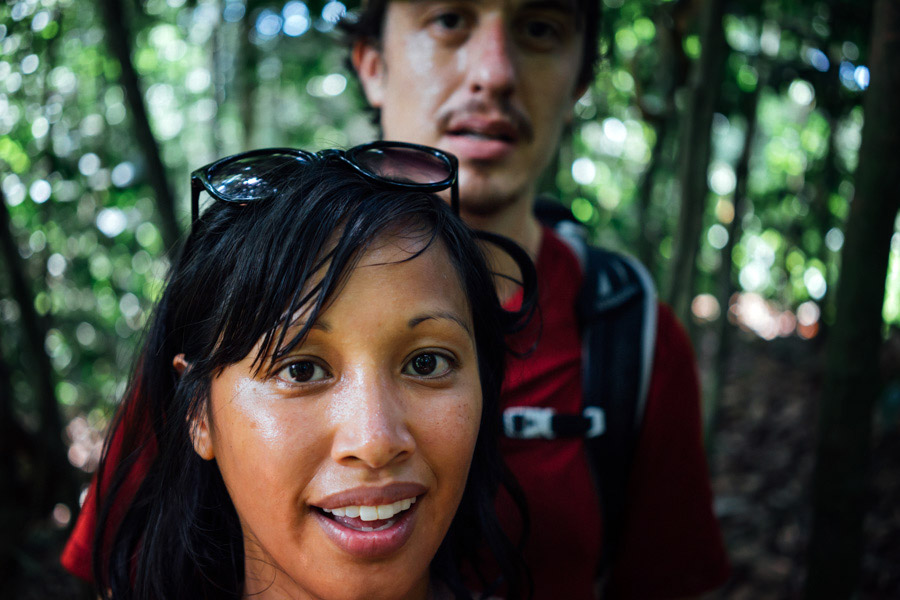
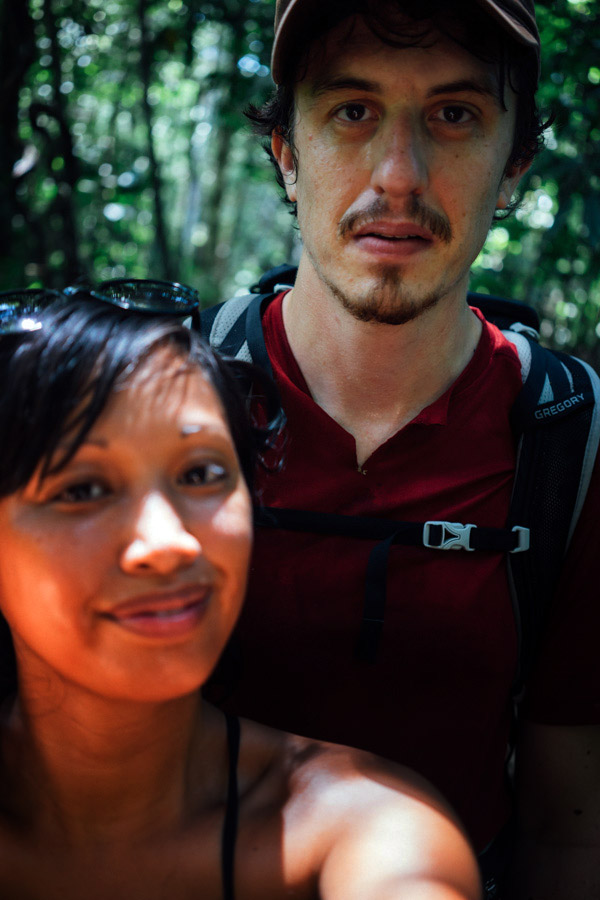


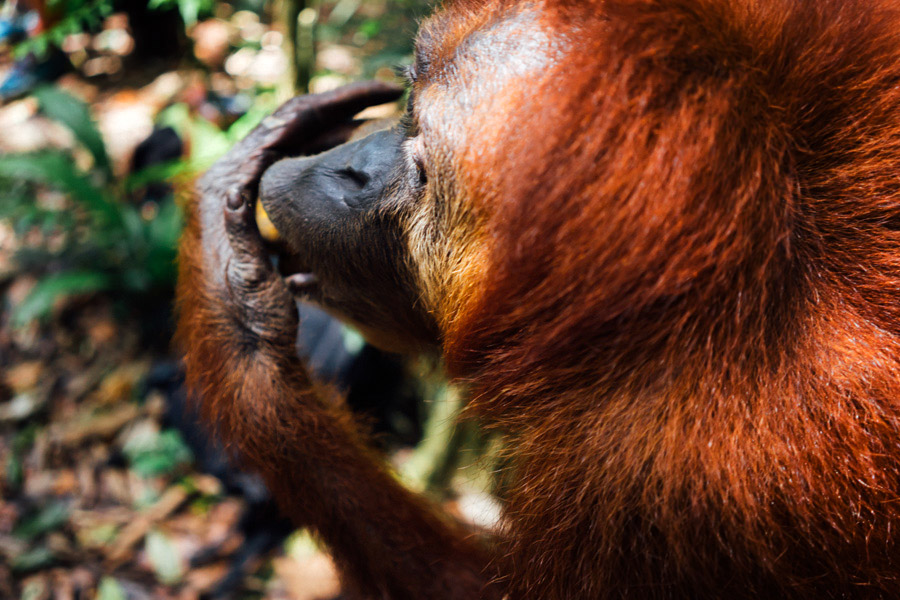
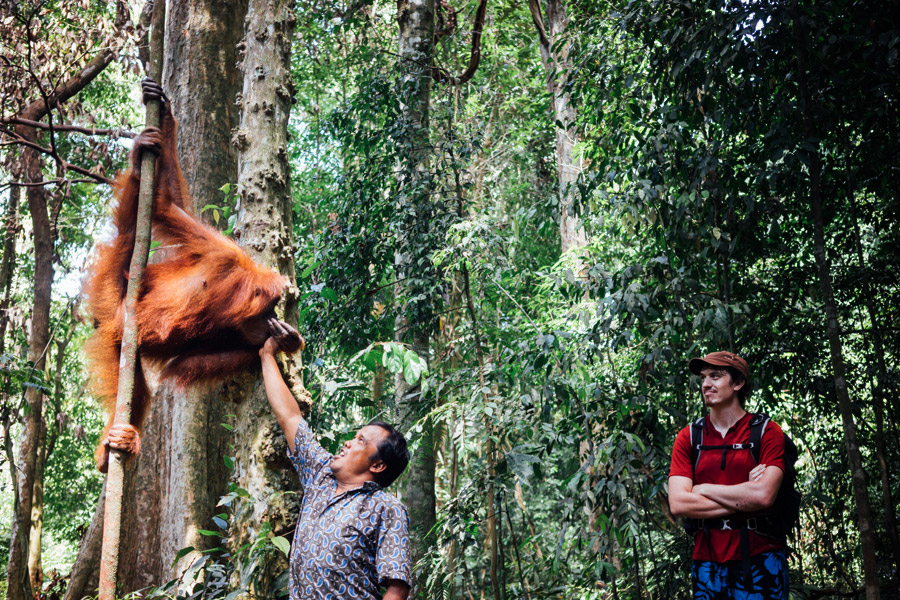
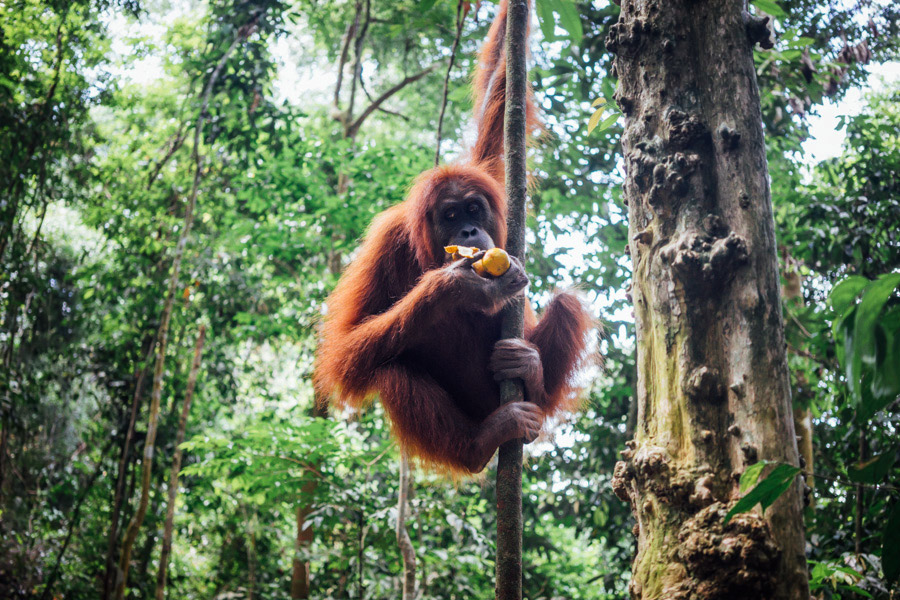

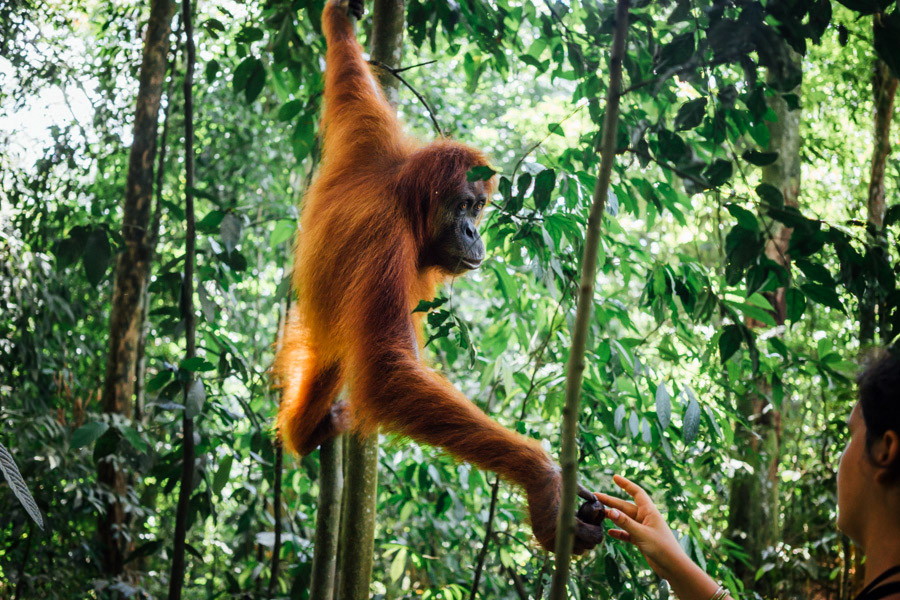
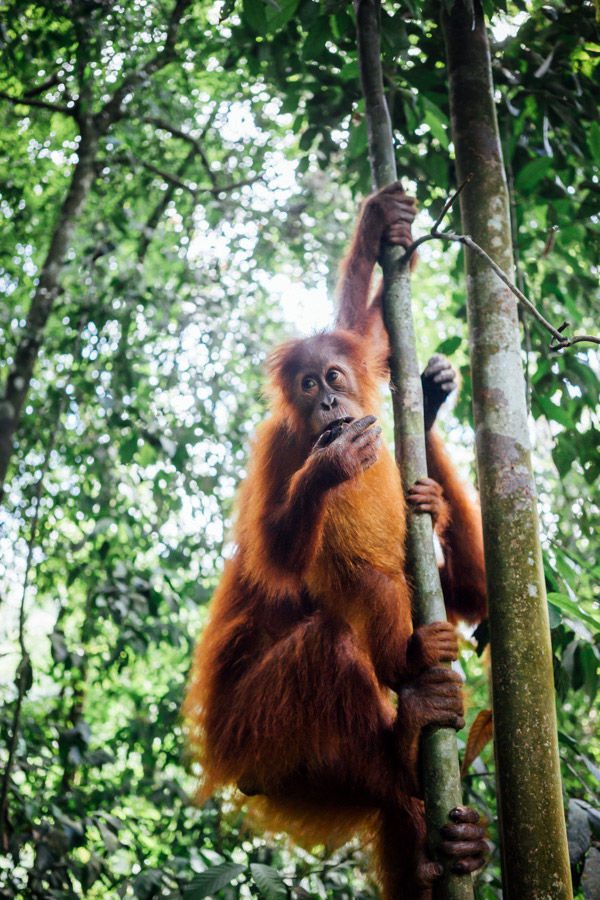
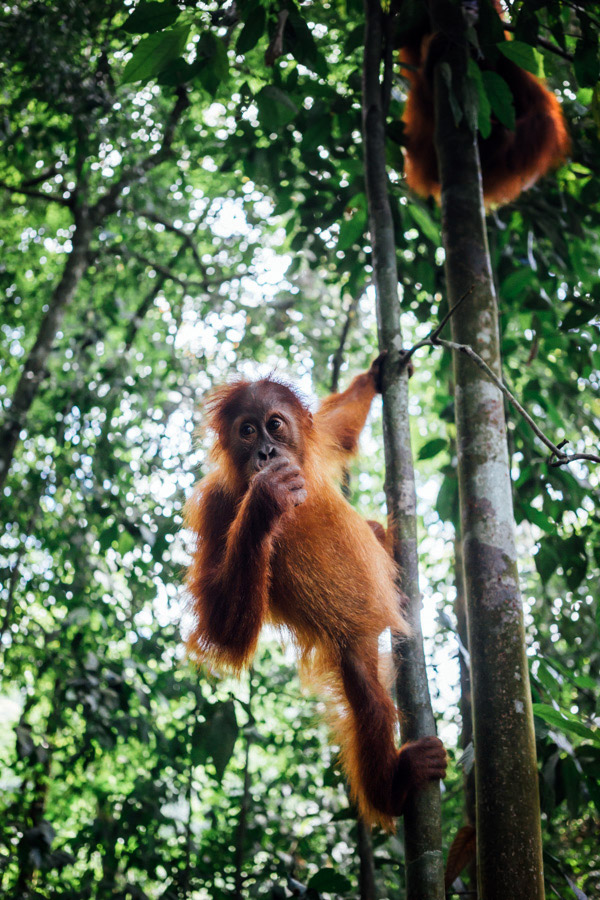
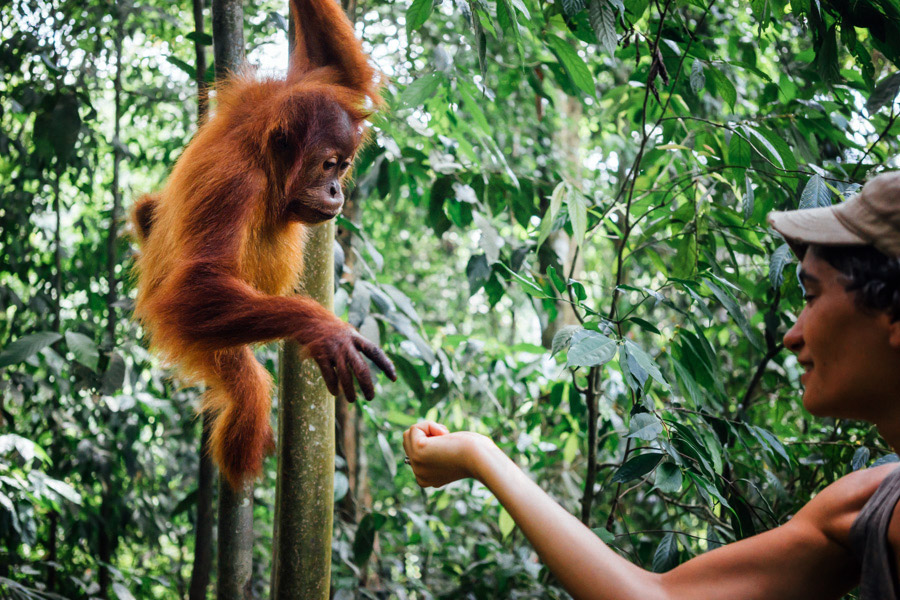
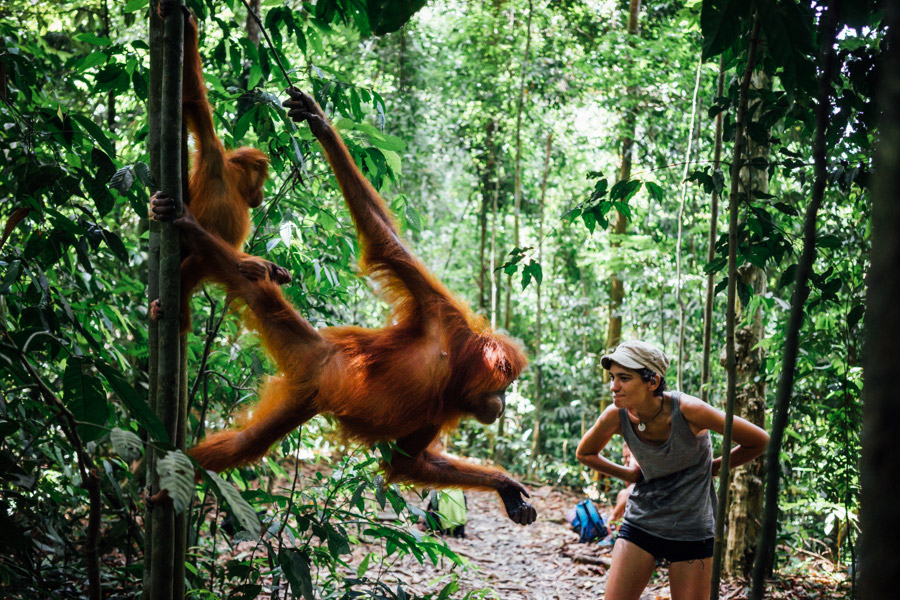

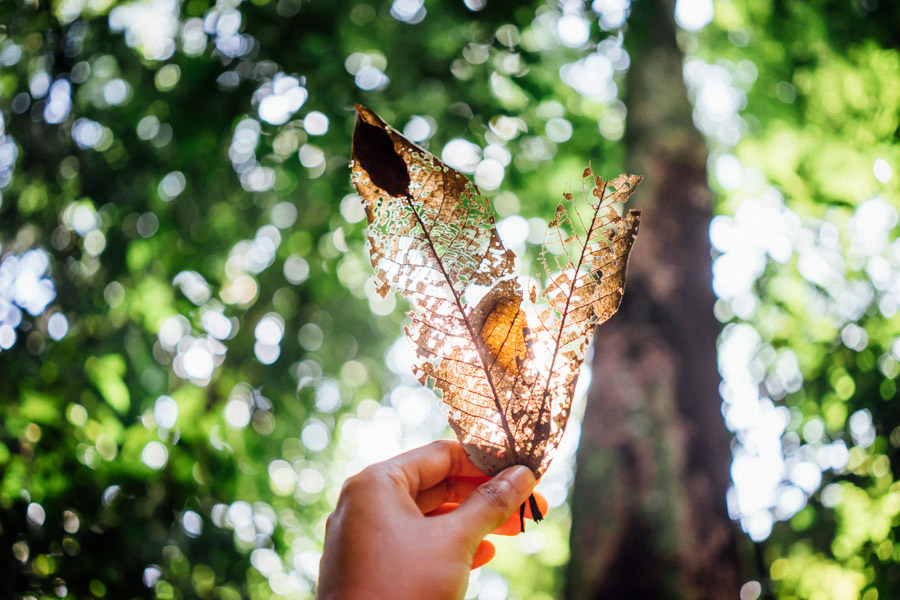
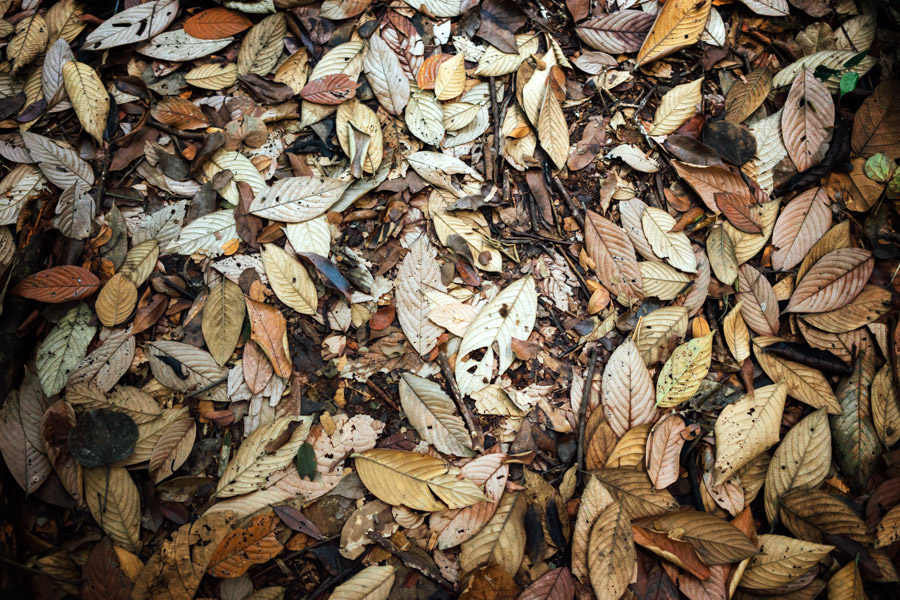
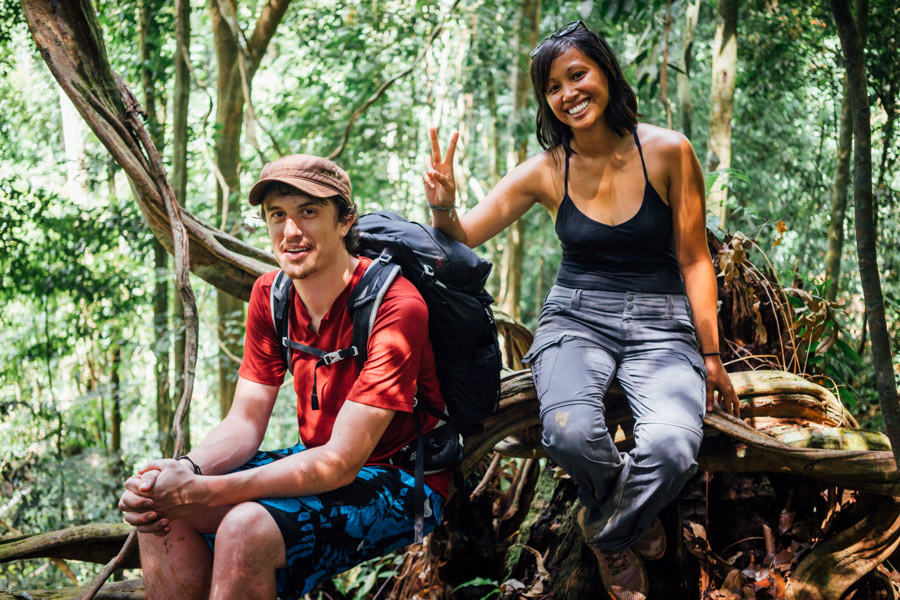
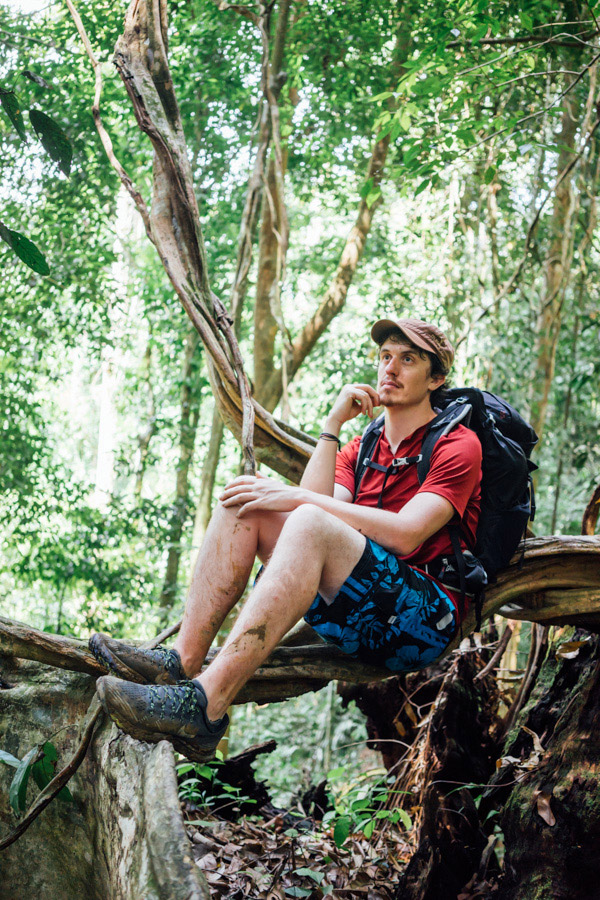
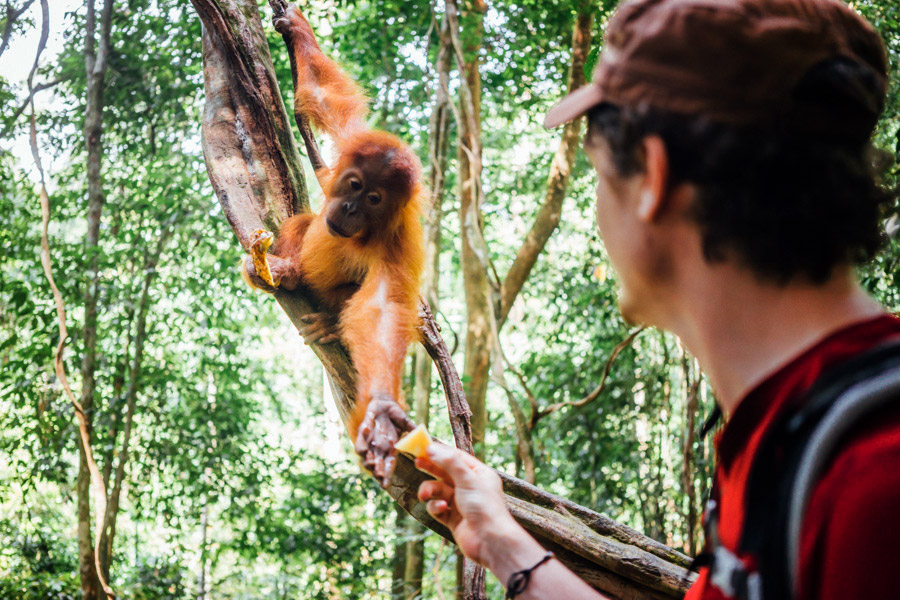

After the blues of Komodo and Kawah Ijen, after the bright colors and pretty pastels of Bali and Yogyakarta, Sumatra and Bukit Lawang took us to verdant greens and bright oranges. In Indonesia, we saw nature as we never imagined, from the depth of Komodo to the lush jungle of Gunung Leuser; we swam with manta rays and counted oranges with orangutans. We explored the Hindu and Buddhist past in Bali and Yogyakarta, marveled at the vibrant canang saris and waterworn walls of the water palace. We lived Ramadan in the streets of many cities, listening to the Muezzin’s song, getting filled with street food at the wrong time. We went up the raw paths of volcanoes at dark hours to tickle our throats; we drove on a motorcycle in the pouring rain. We haggled, avoided tourist traps, still paying too much the scammers. But maybe more importantly, we went through it all with the warmth of the Indonesians, guiding our way to make sure we saw the beauty of their country. There would be too many names to write and to thank, but we remember all of them, their smiles, laughs and clove cigarettes.
Indah means beautiful in Indonesian, coincidentally giving root to a well-named country. In 28 days, Indonesia took us through quite a trip, with all its colors and characters, each island with its identity and richness. We saw too little of Indonesia in the end, but it will bring us back, cantik Madie and I, to the jungle, the sea or the temples - or maybe next time to the tribes near Papua New Guinea. For now, it’s time for a short flight to Kuala Lumpur in Malaysia.
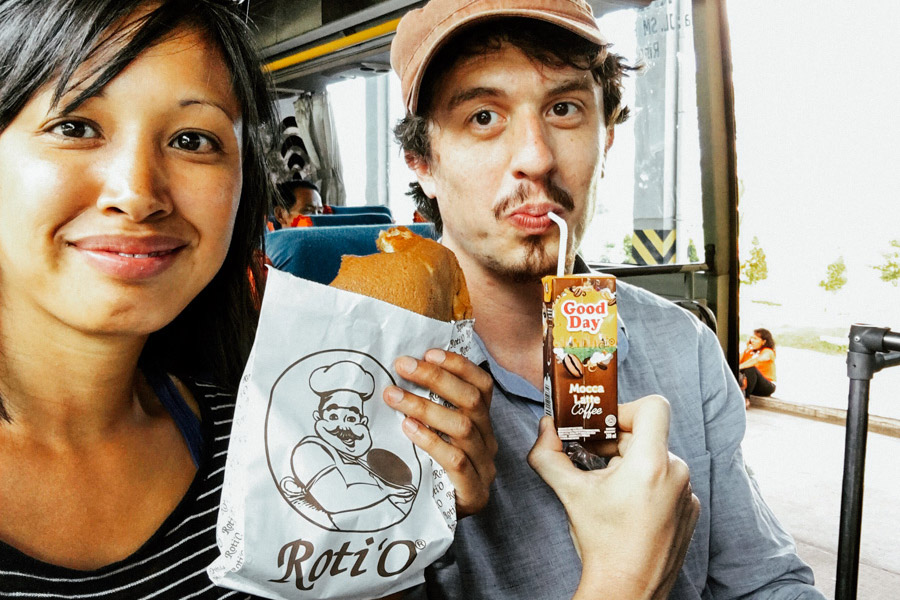
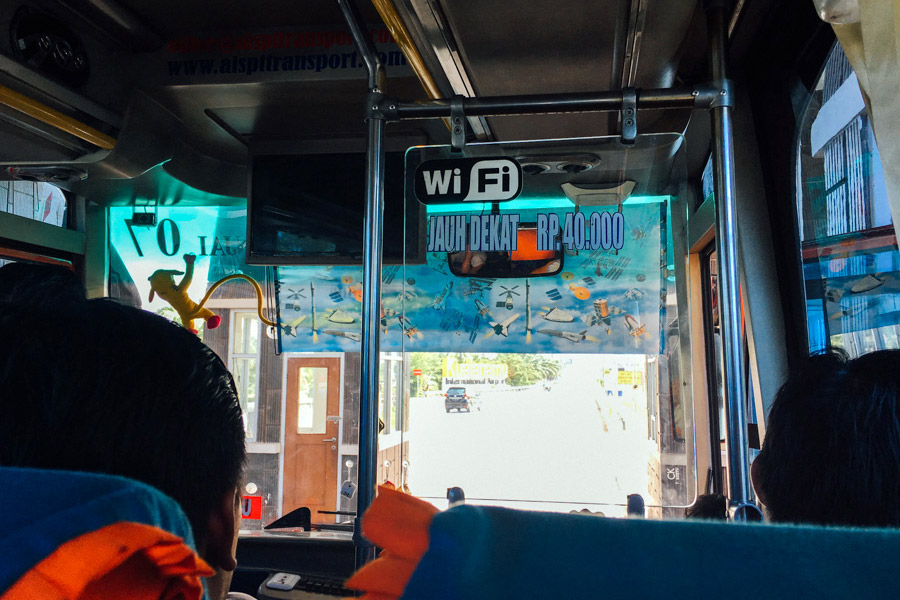
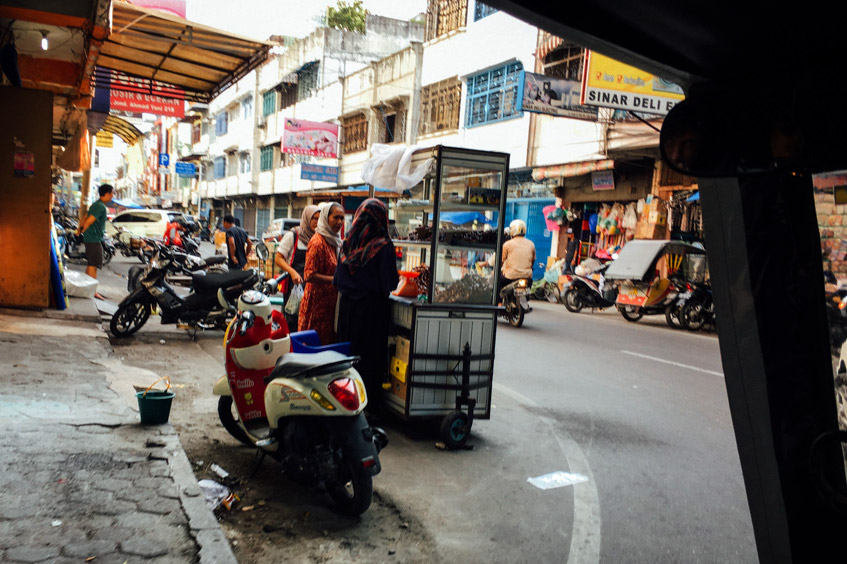
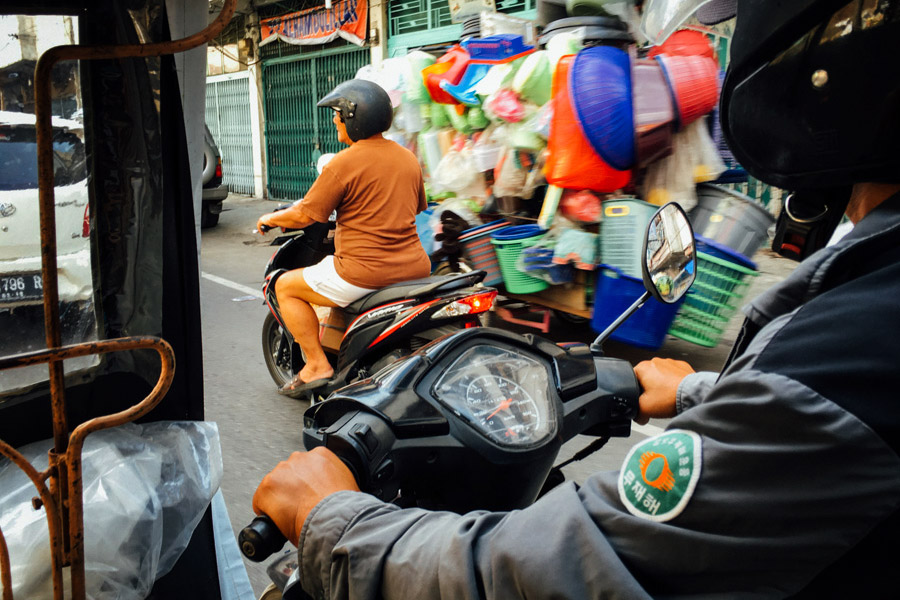
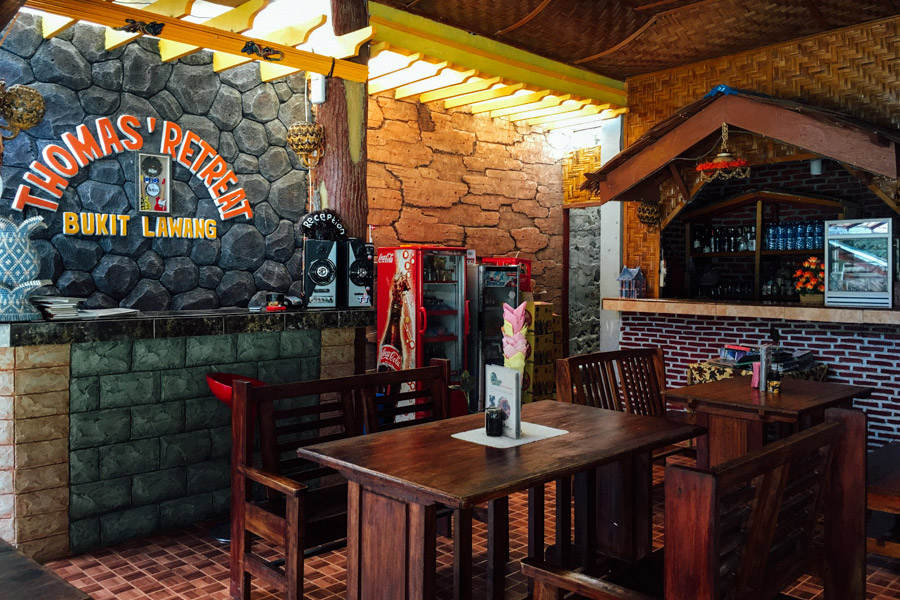
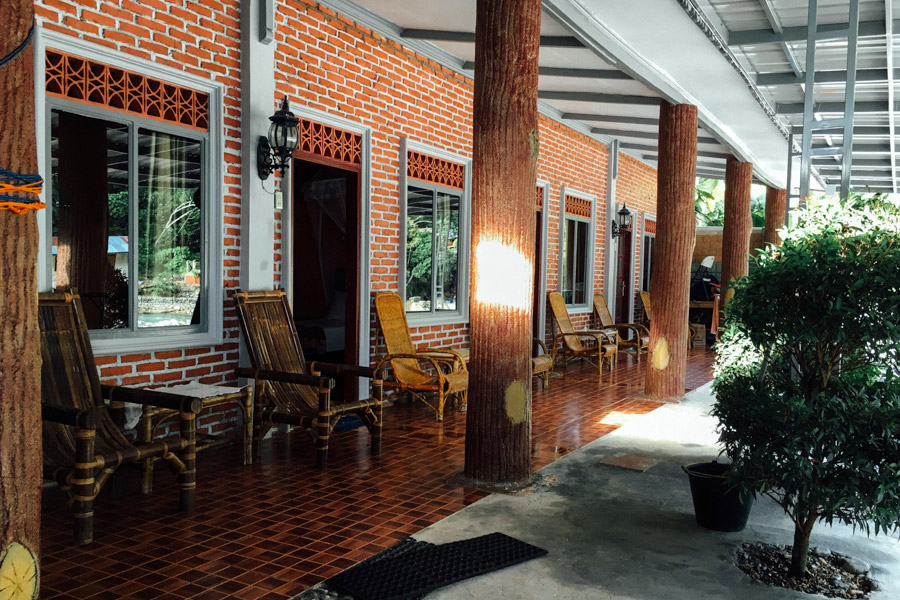
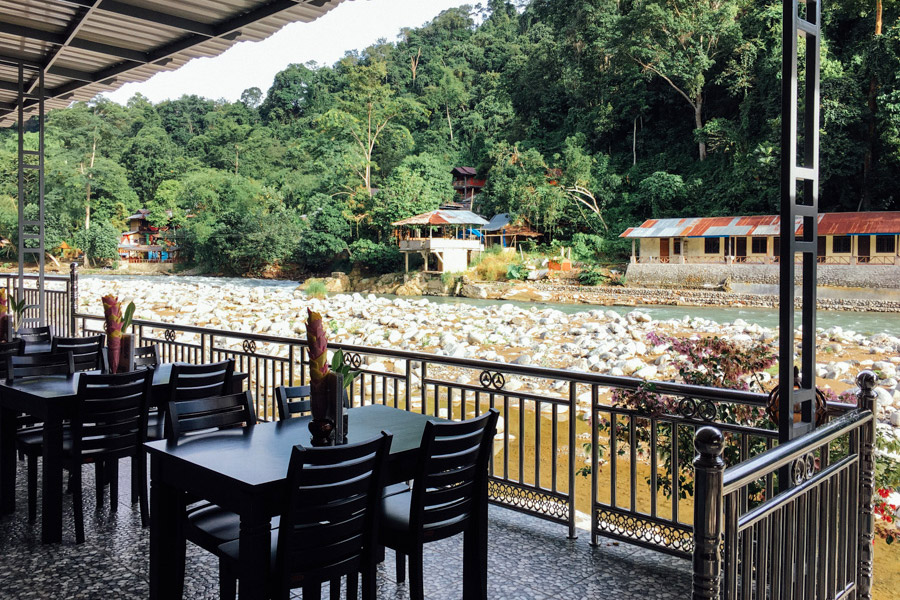
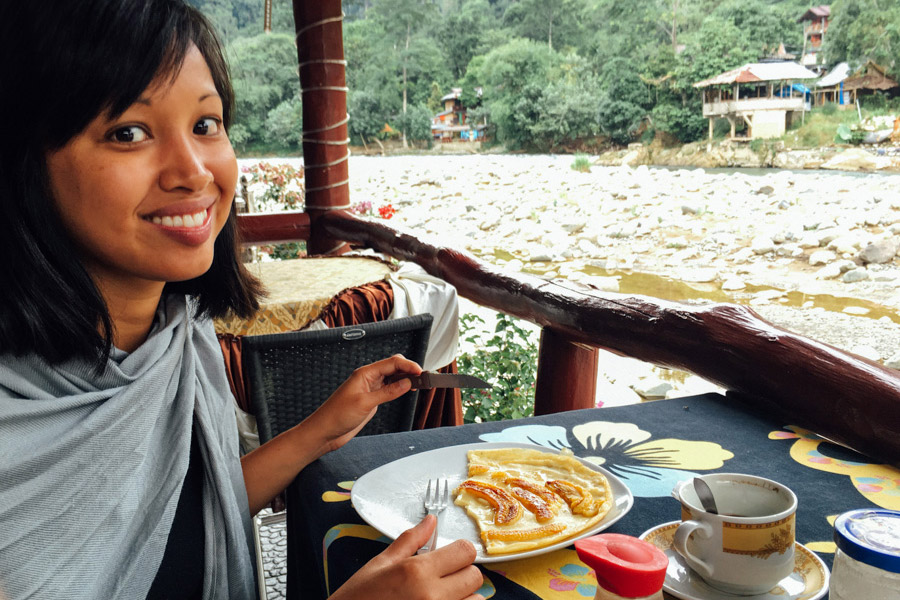


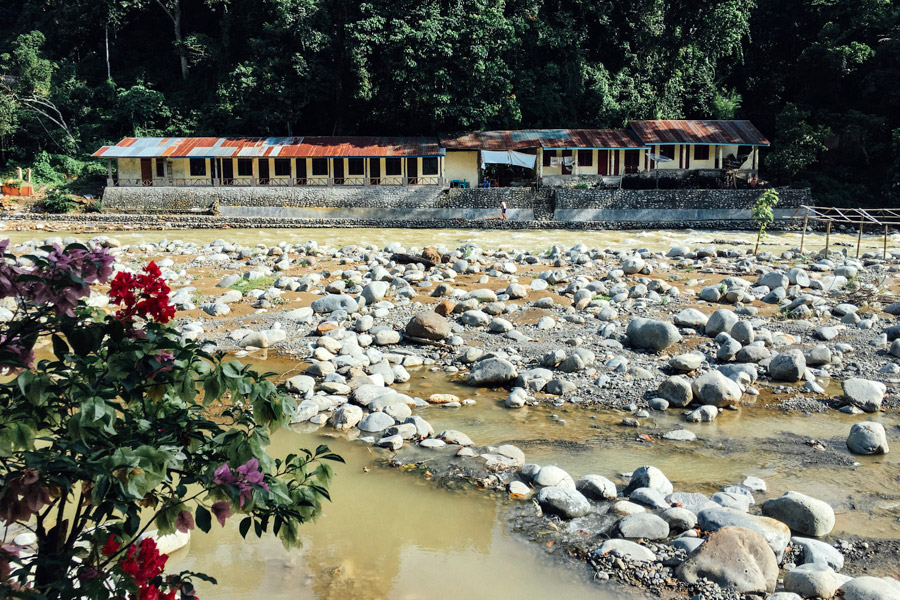
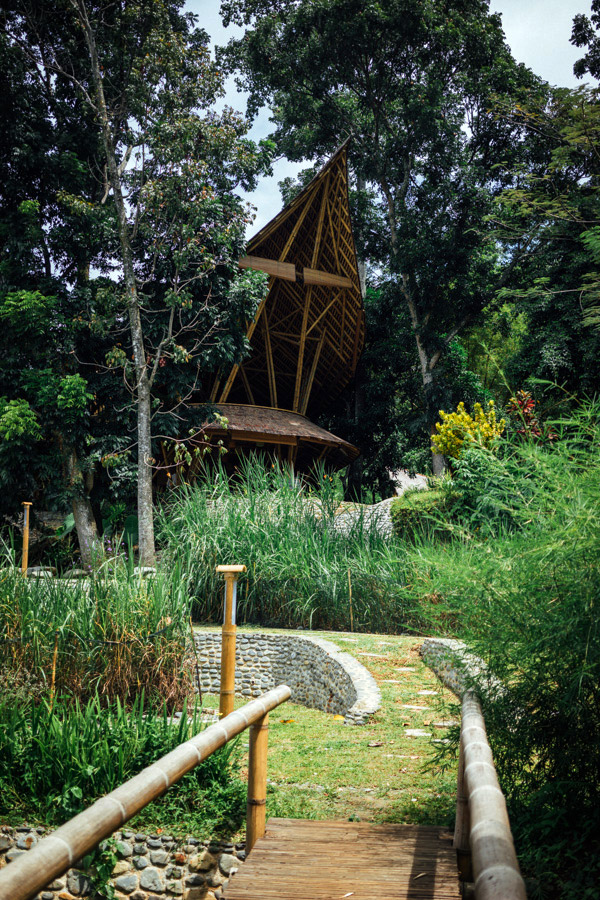
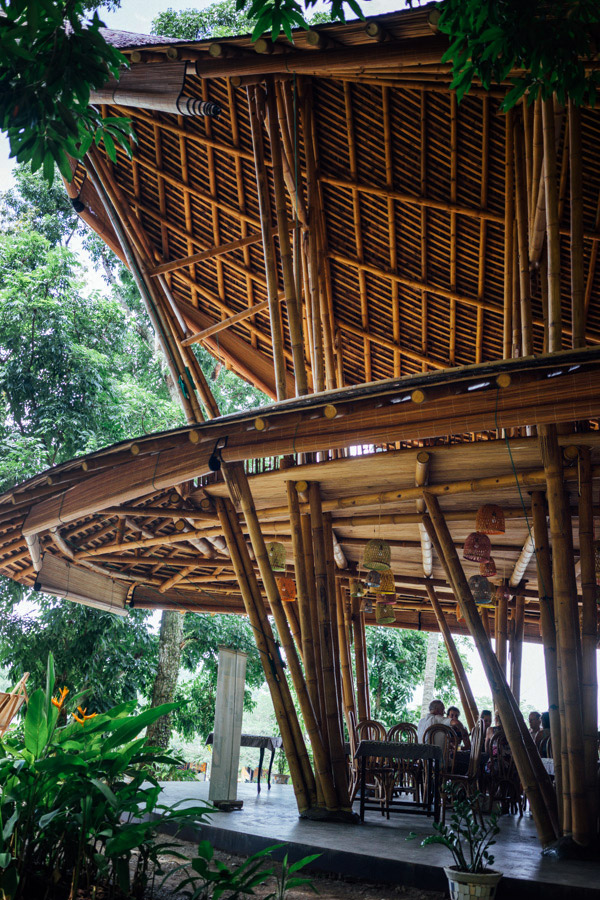
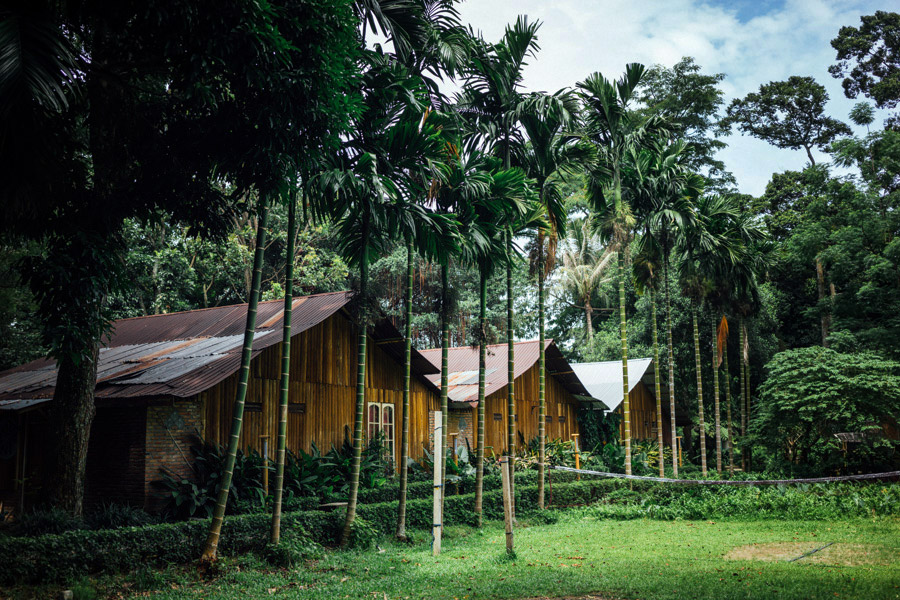

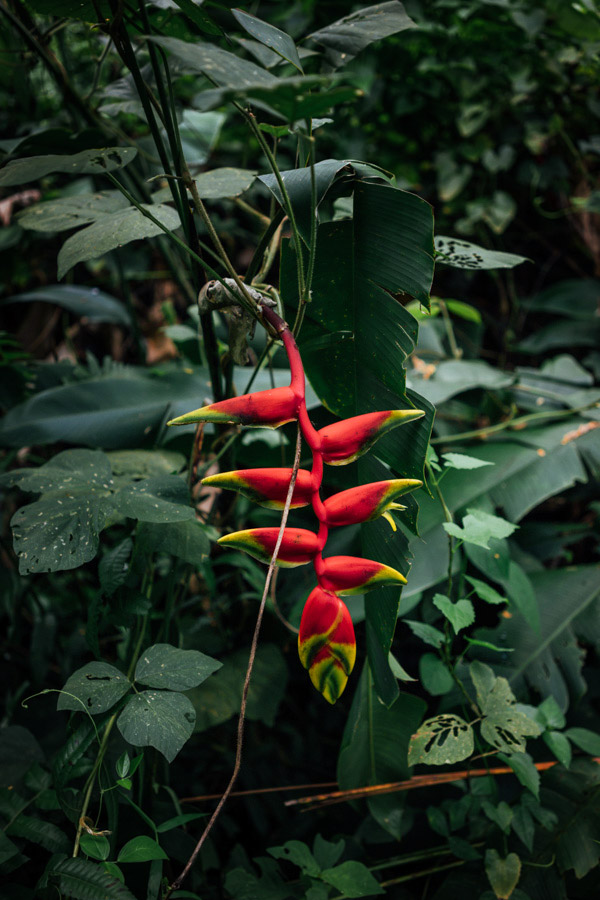
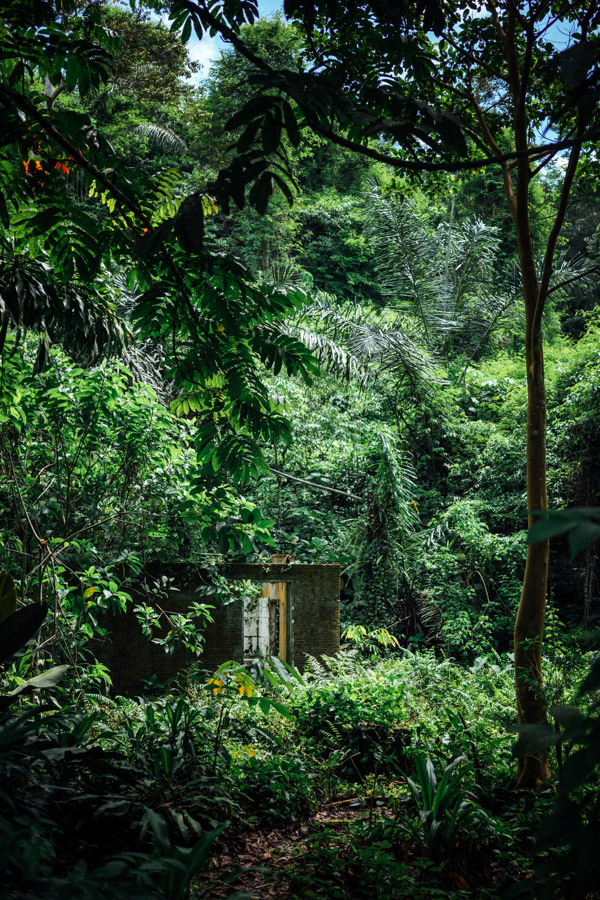
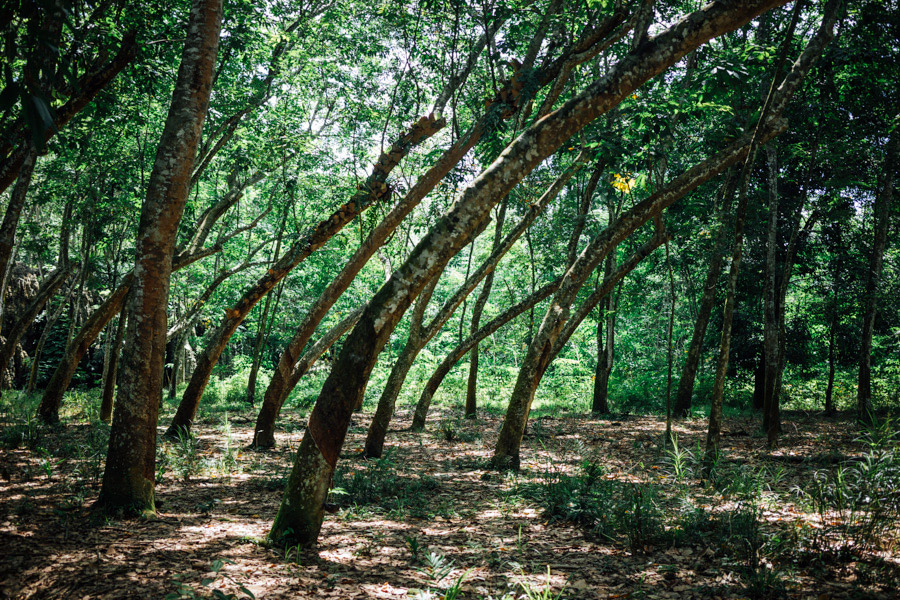
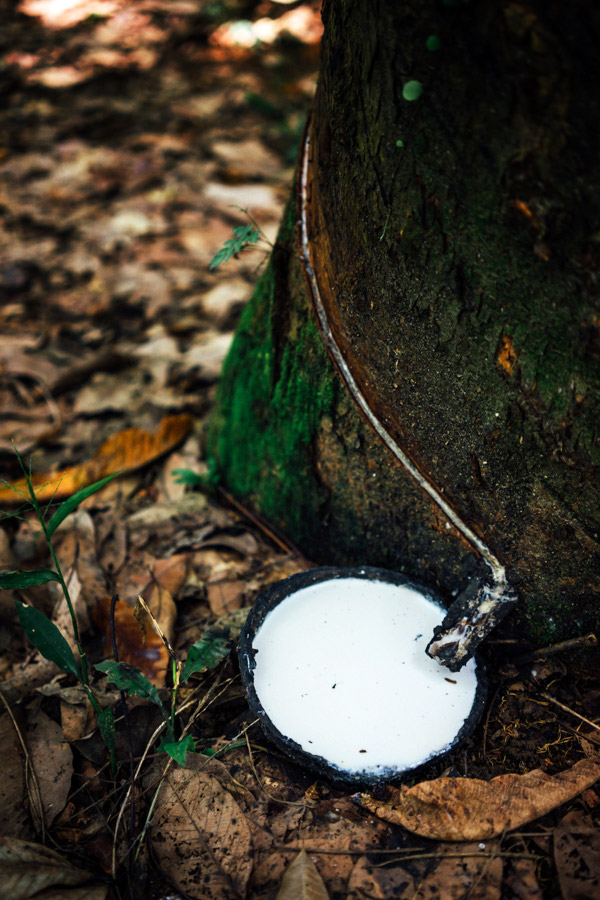
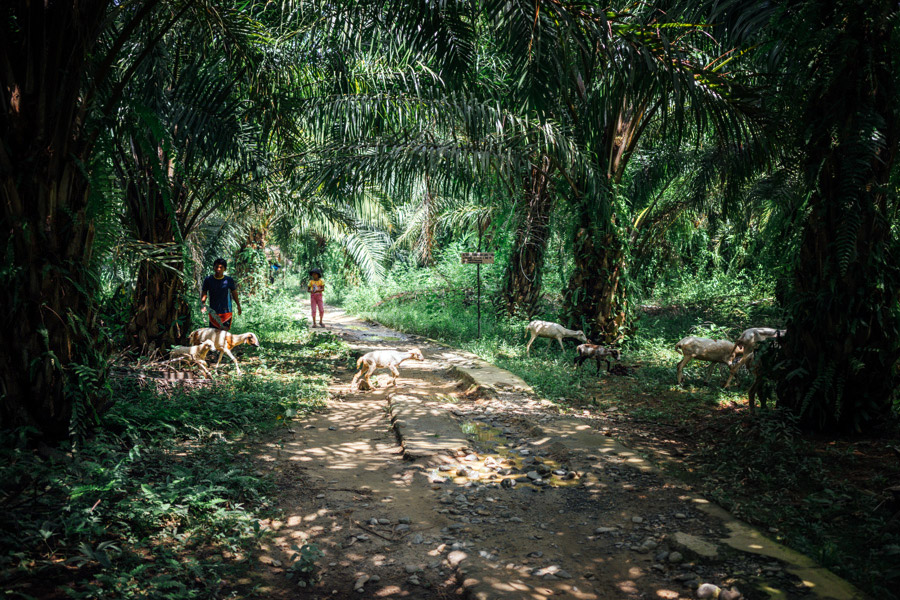
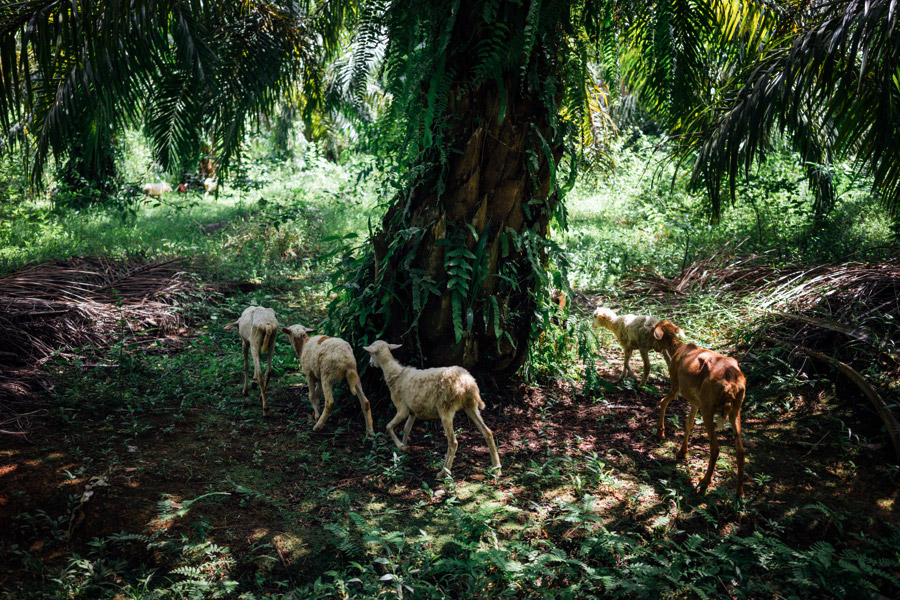

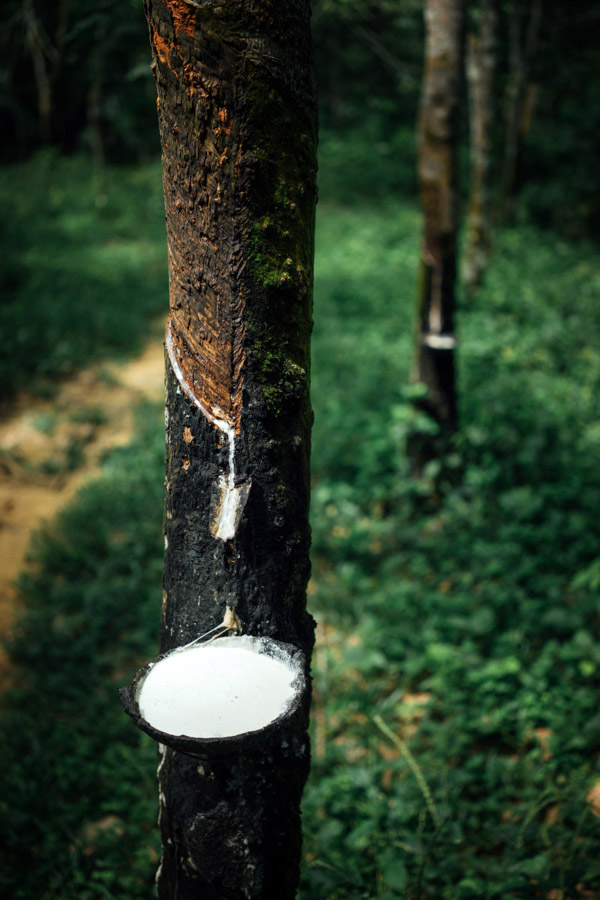

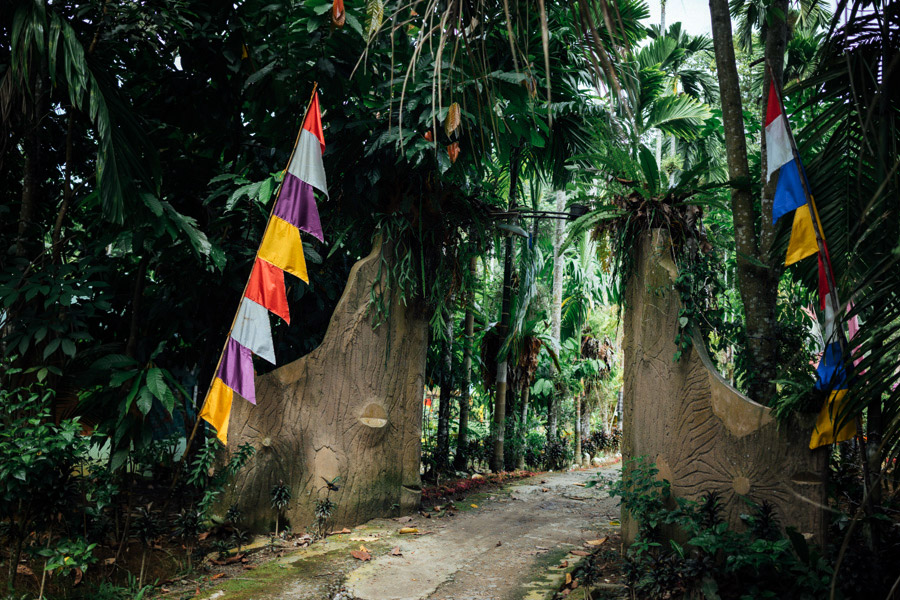
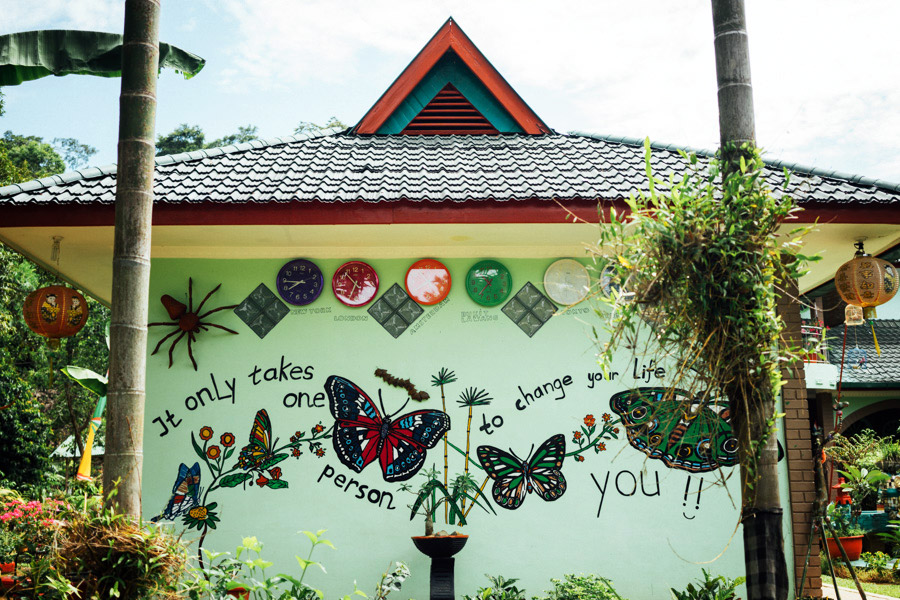
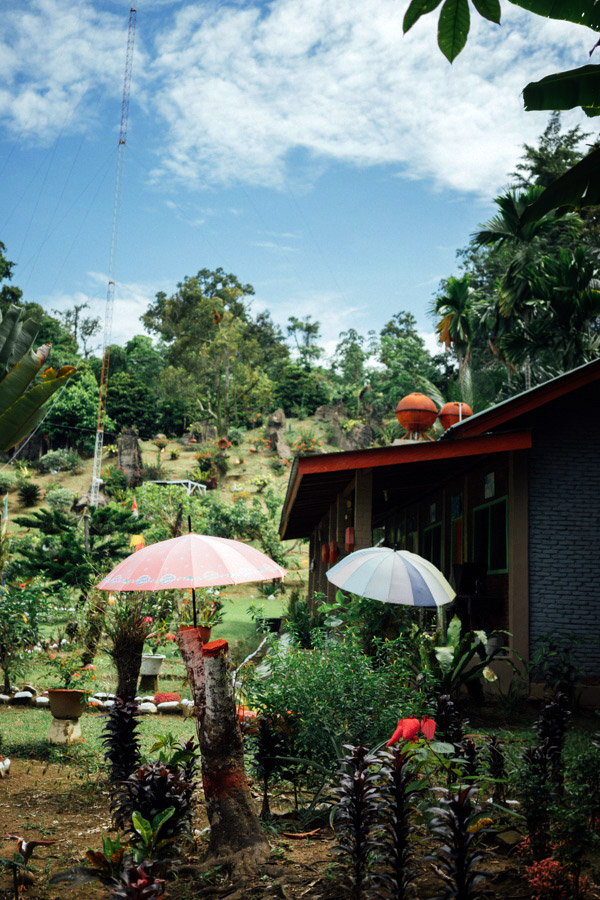
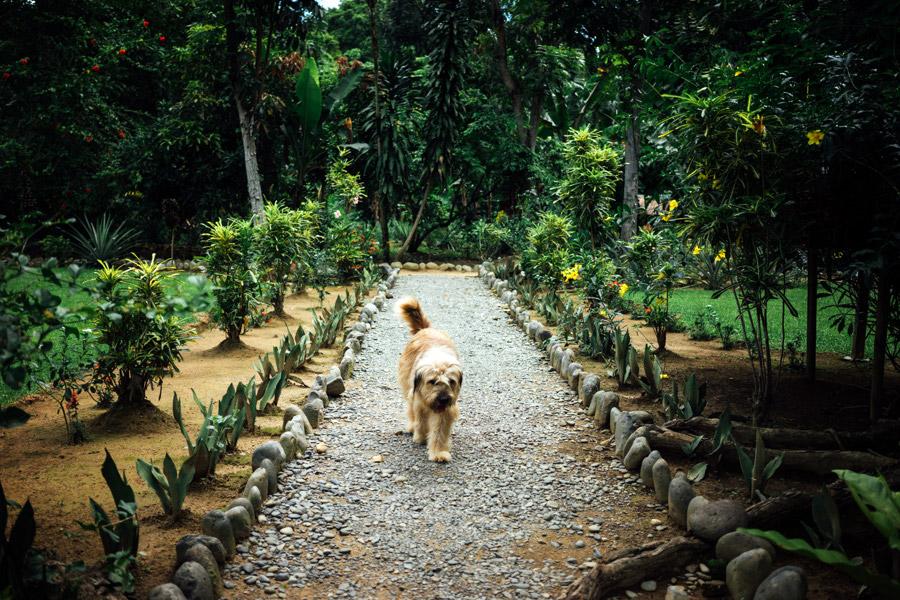
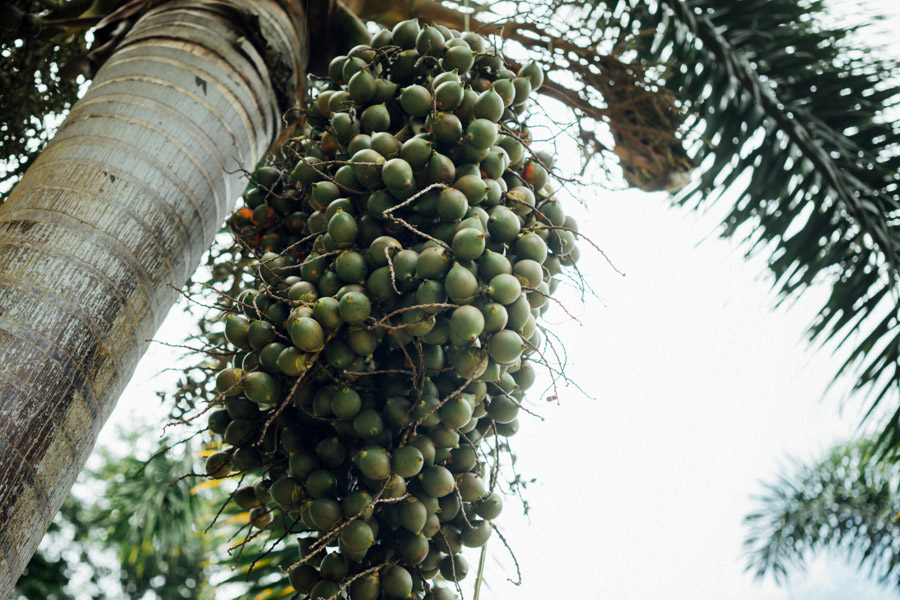
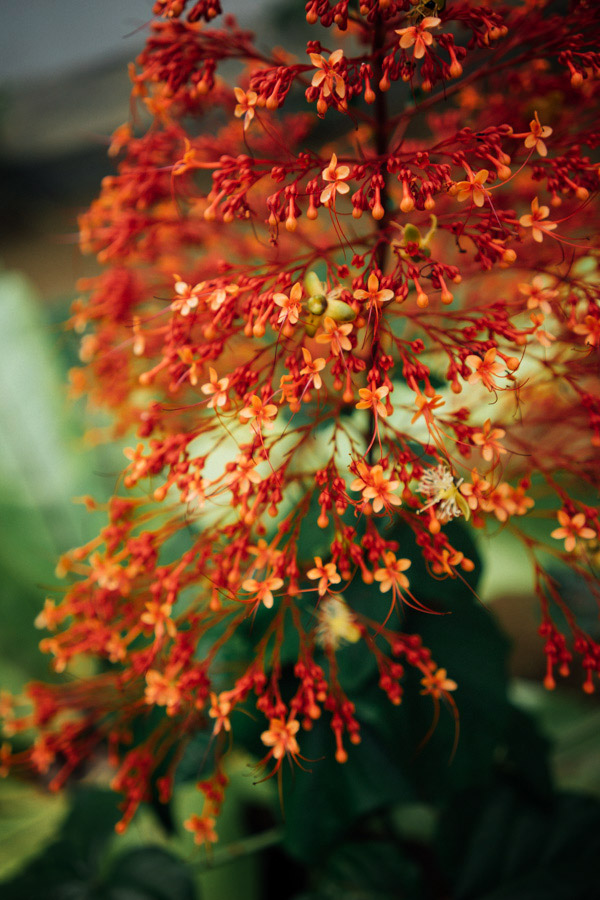
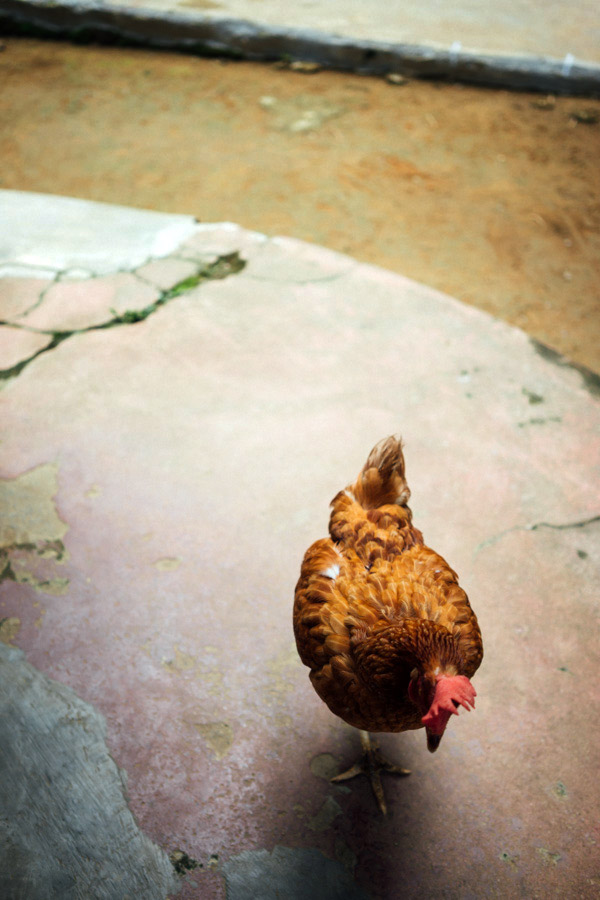
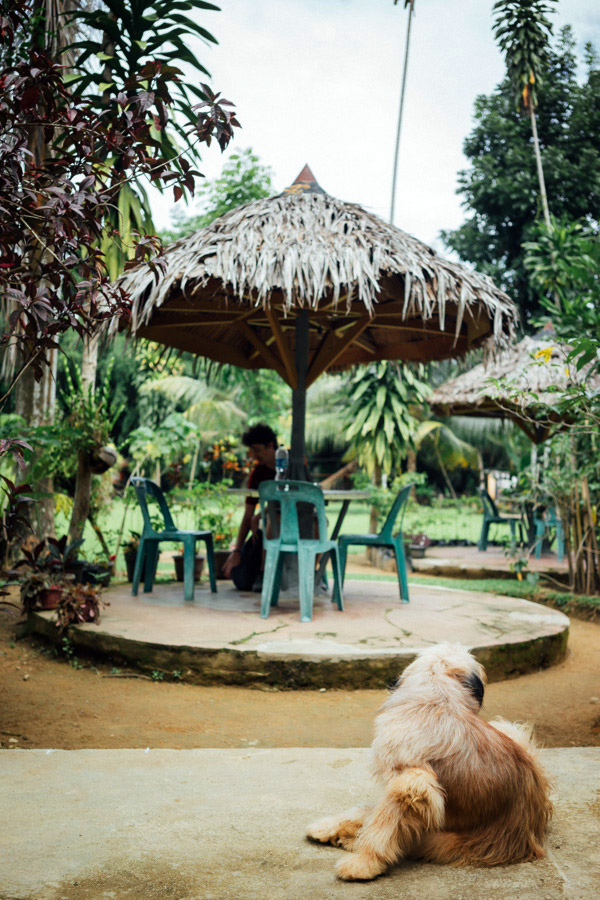
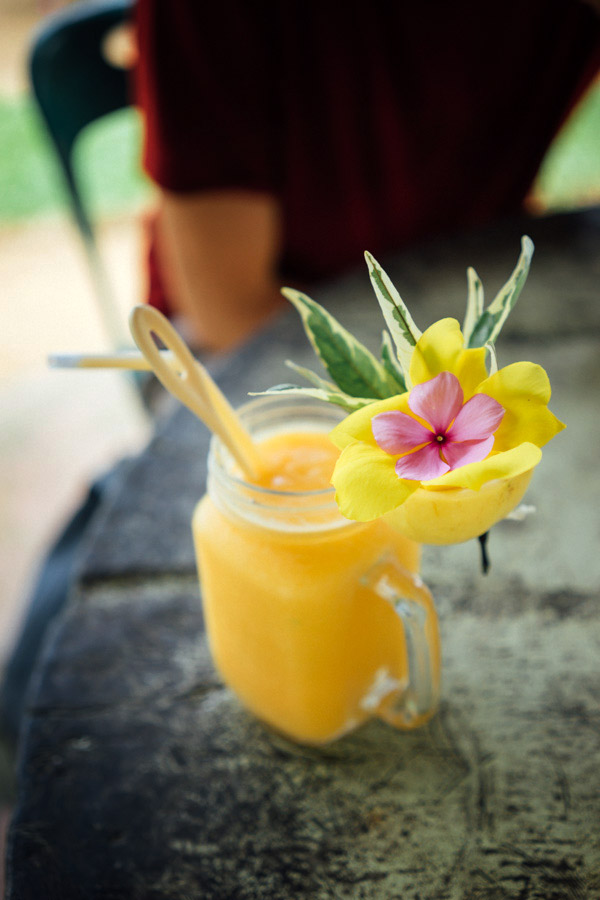
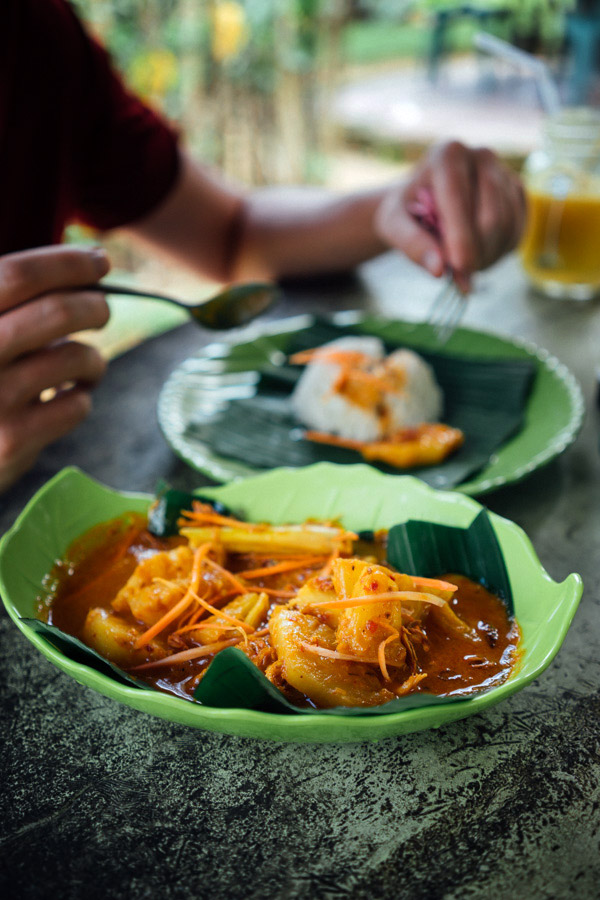
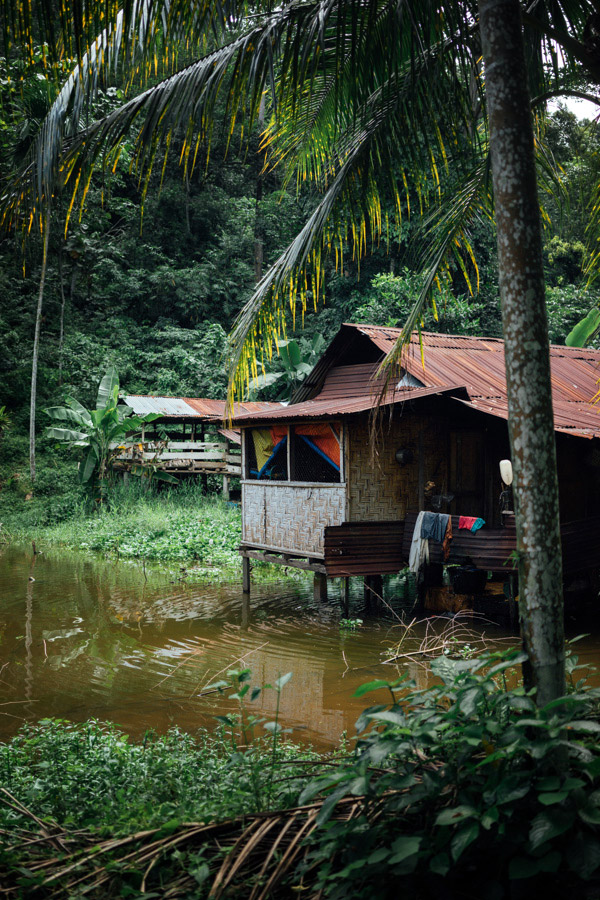
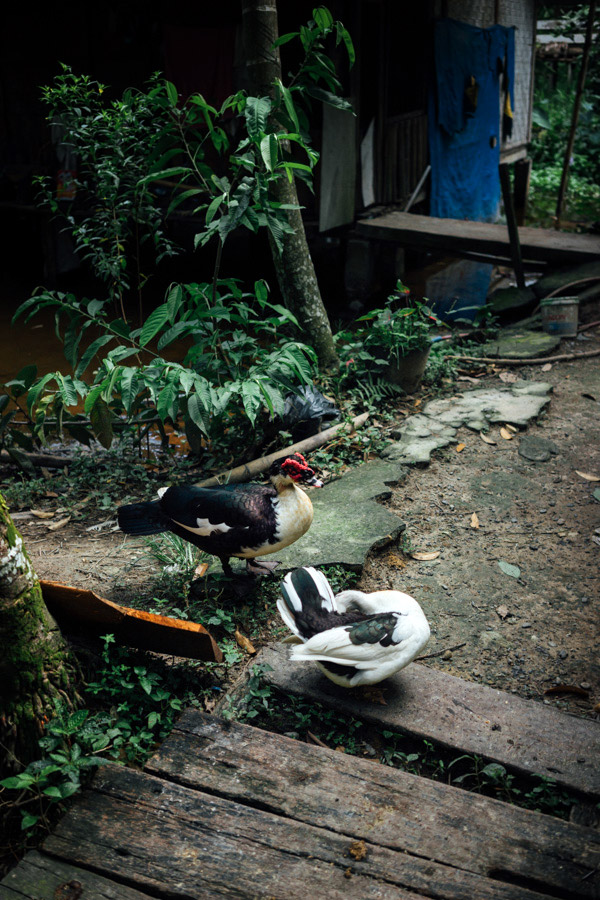

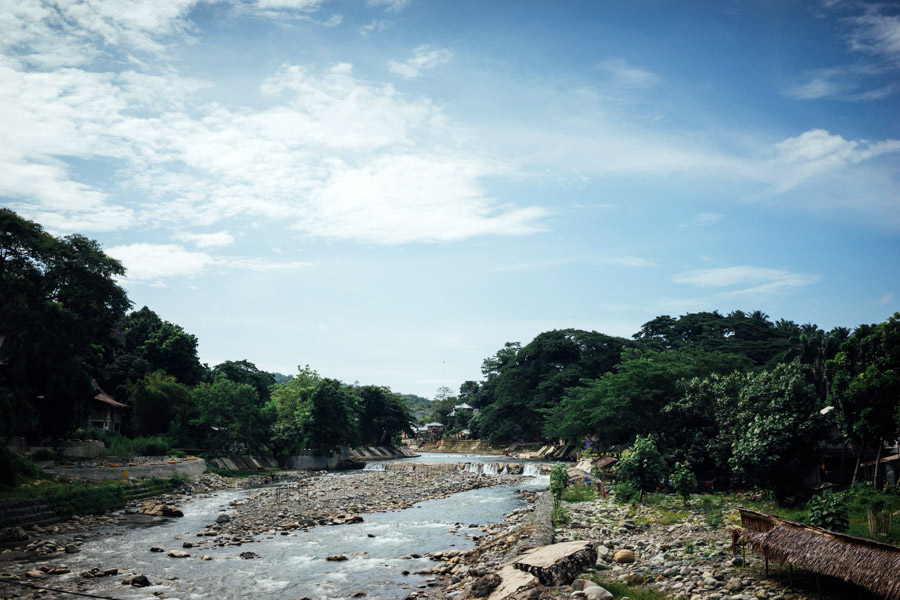
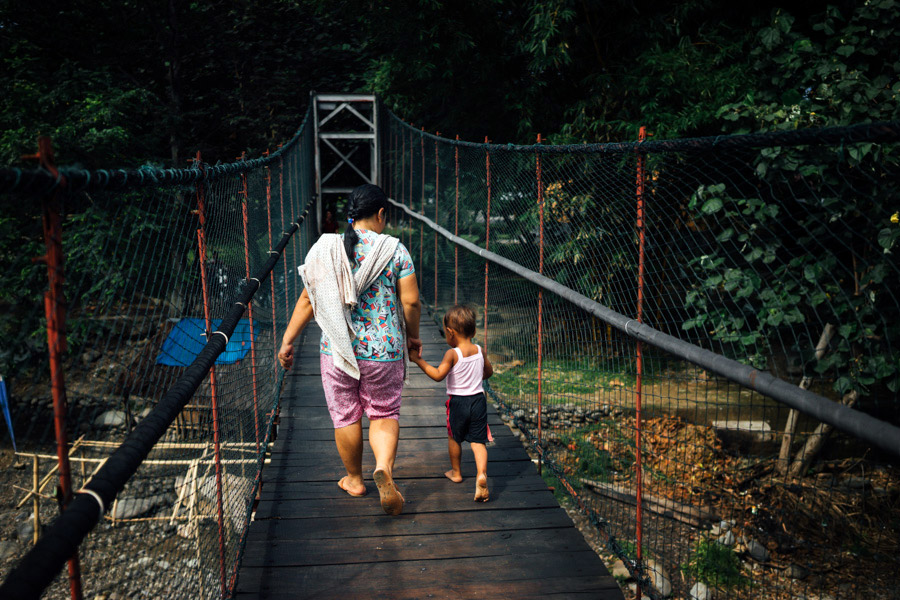
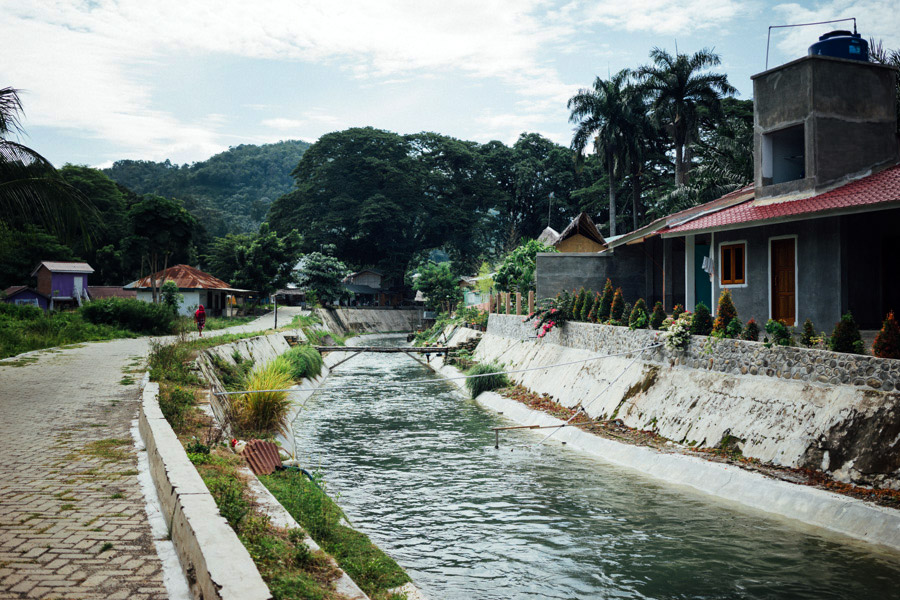
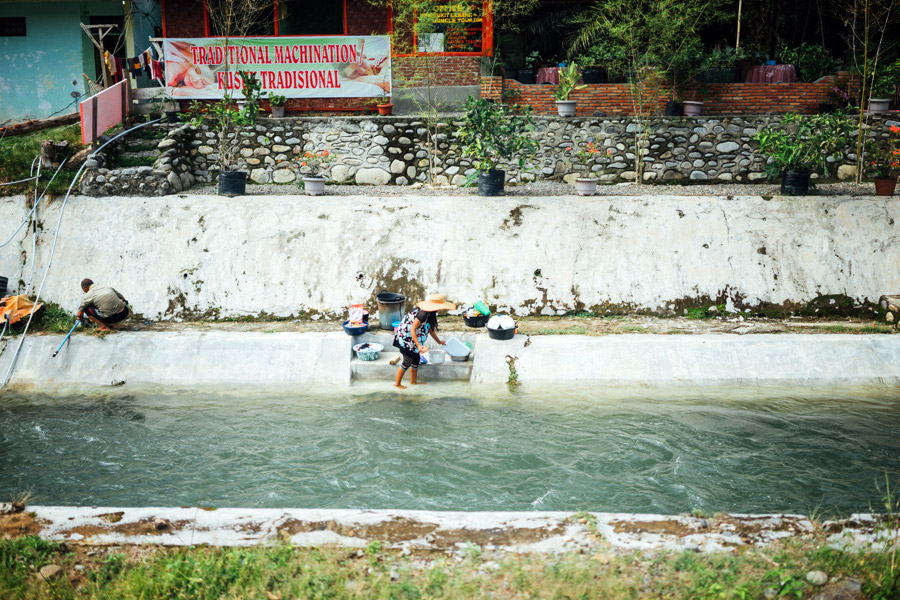

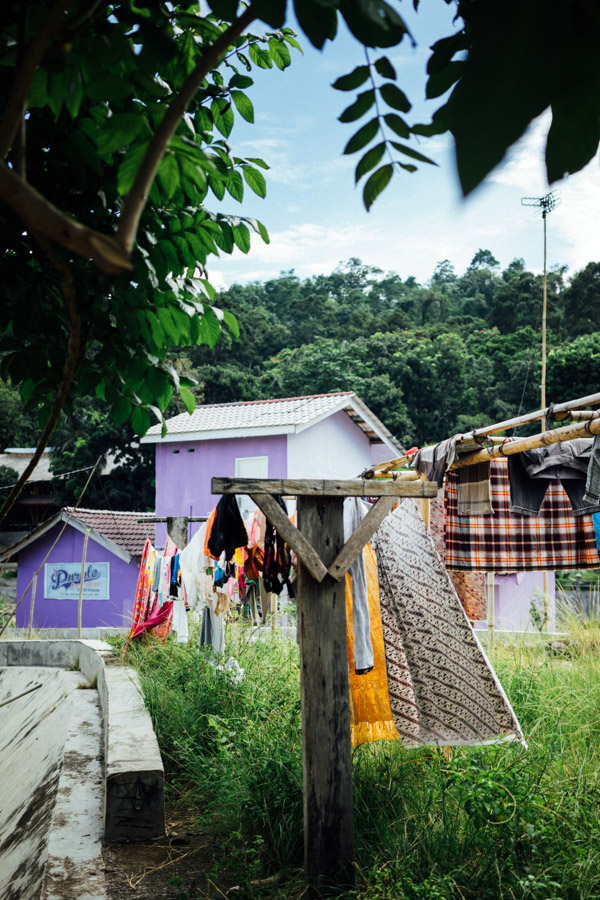
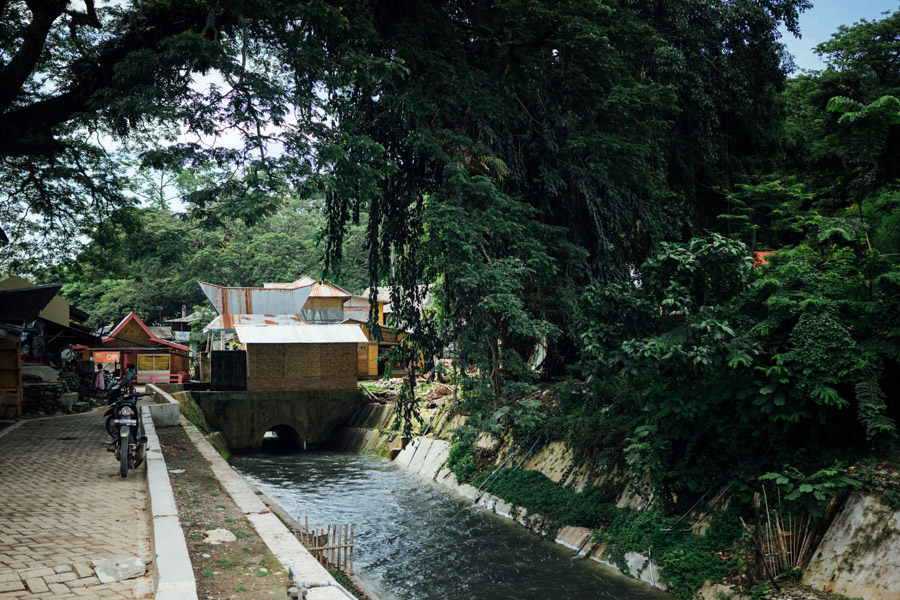
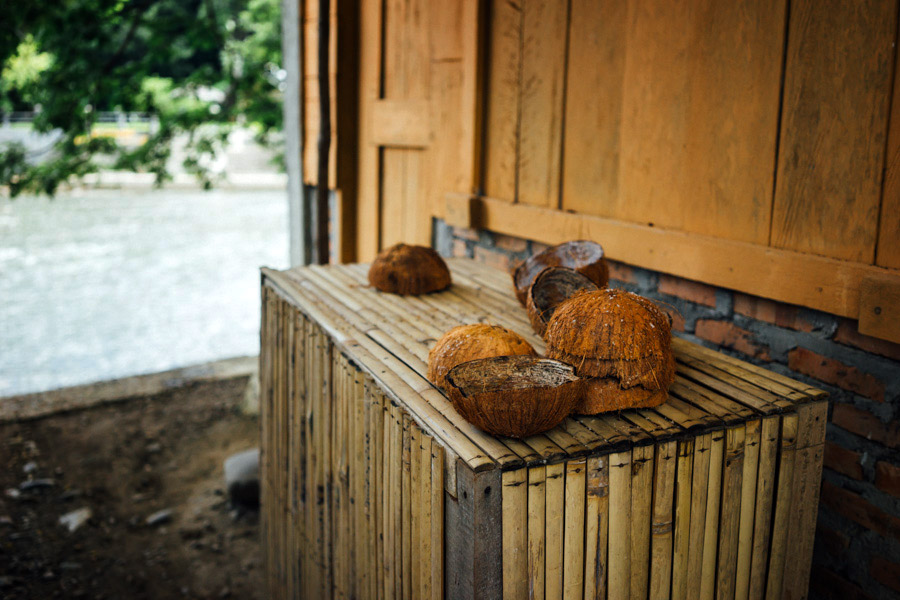
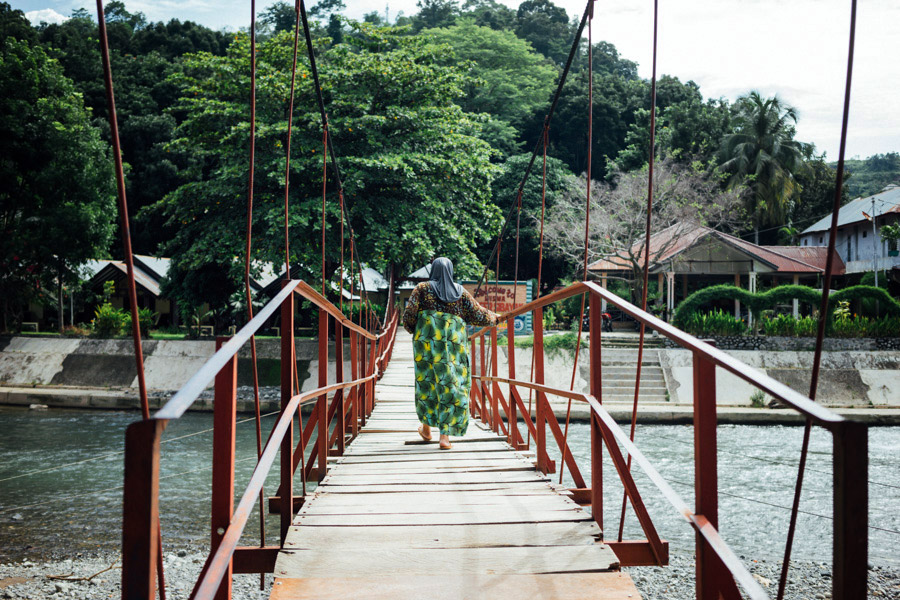
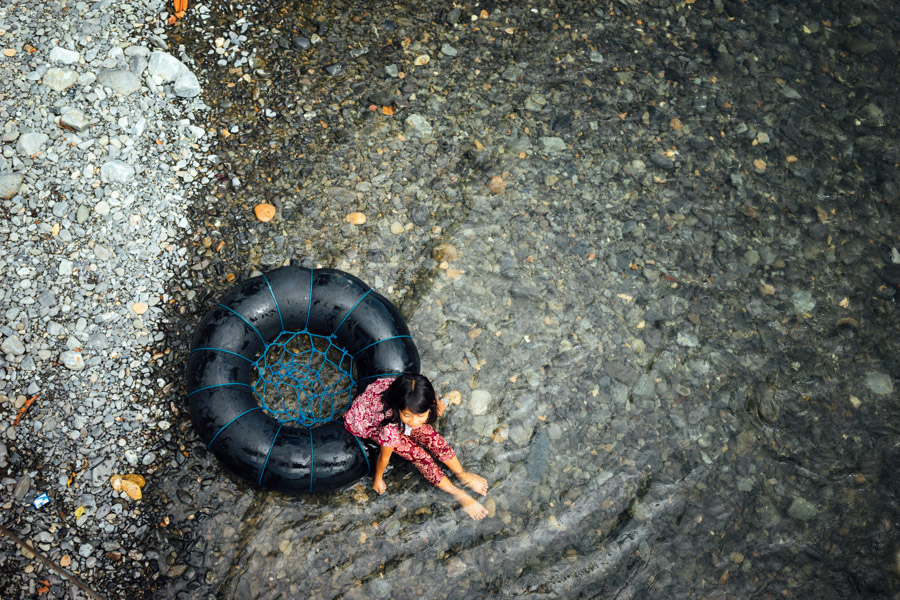
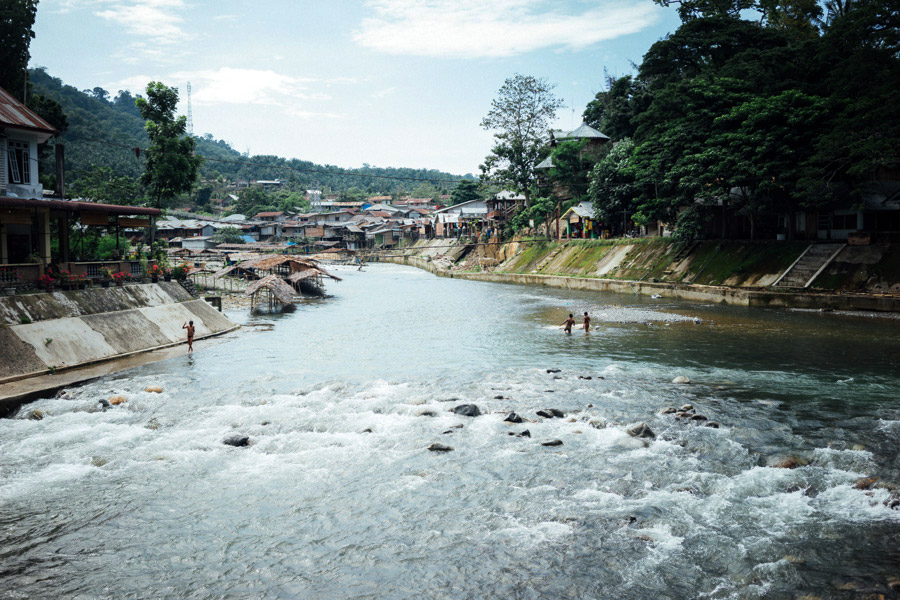
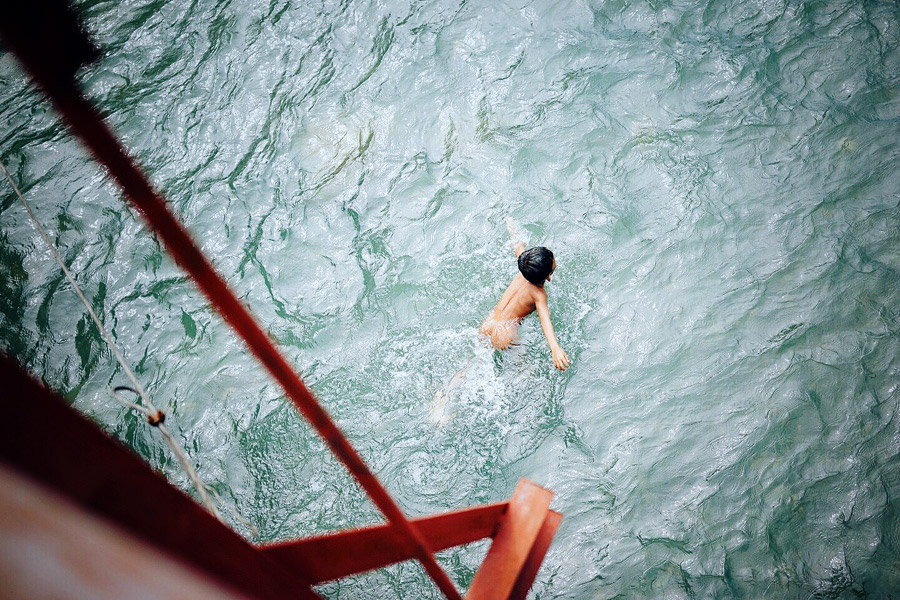
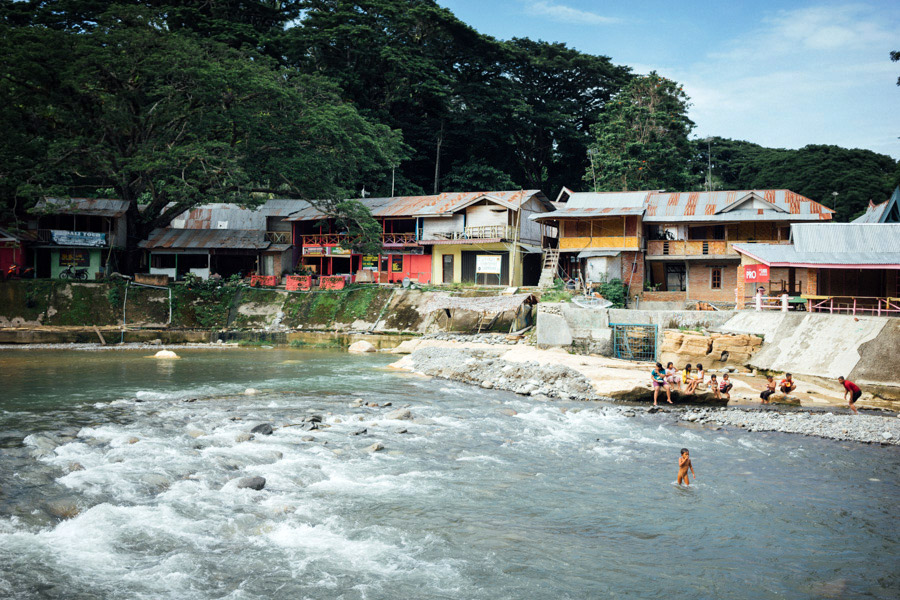
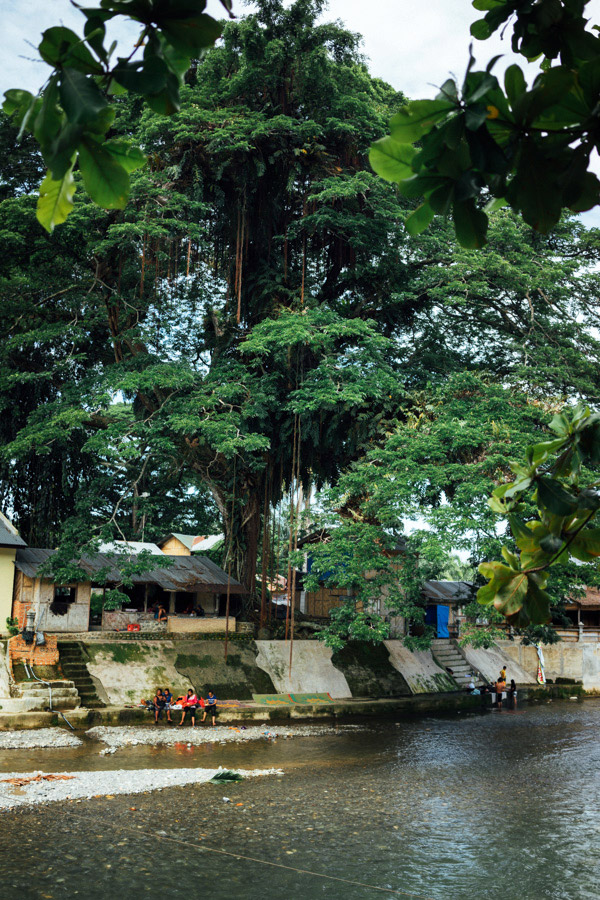
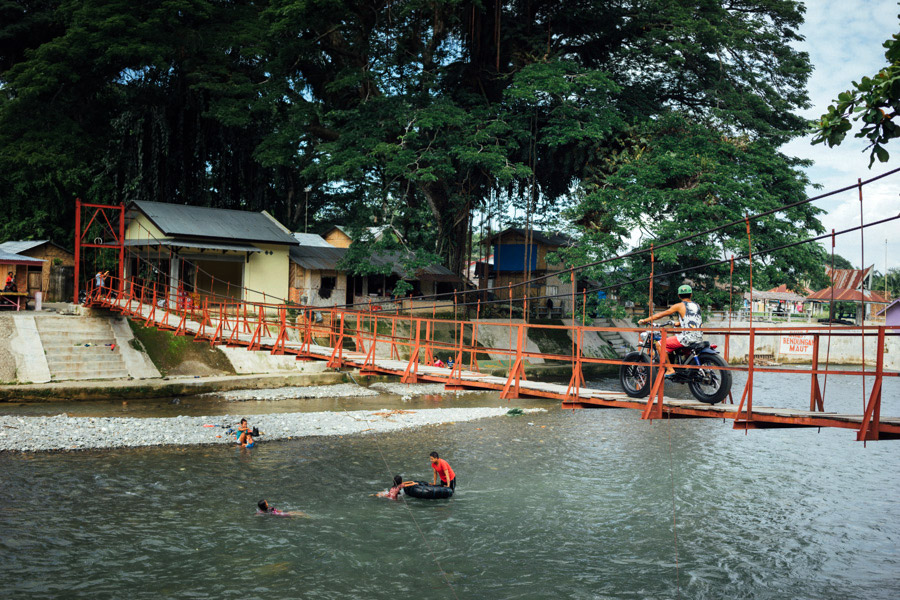
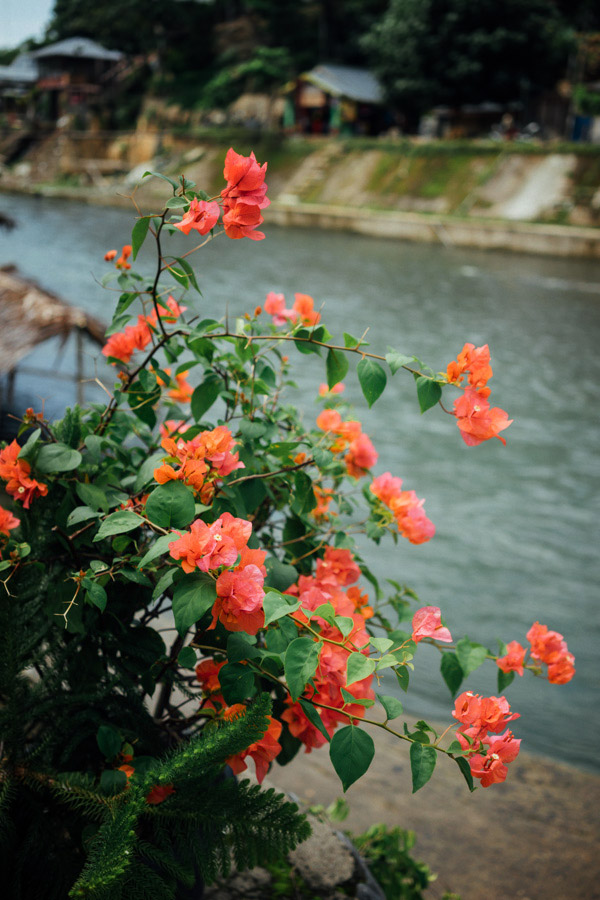
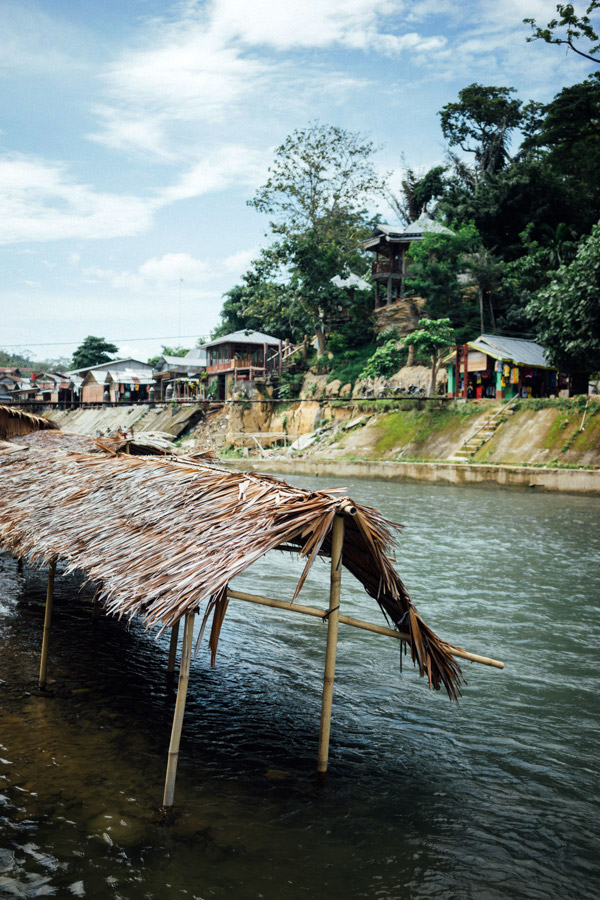
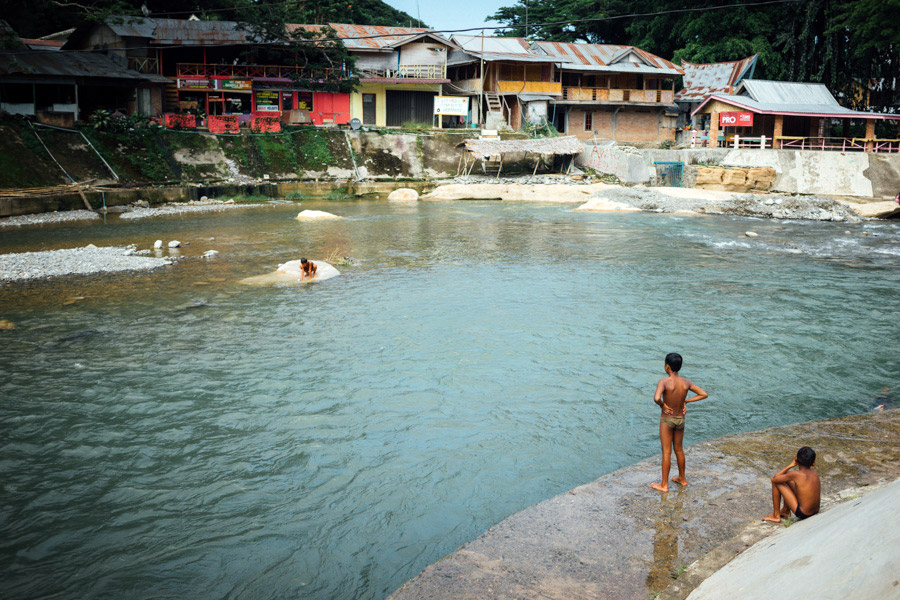
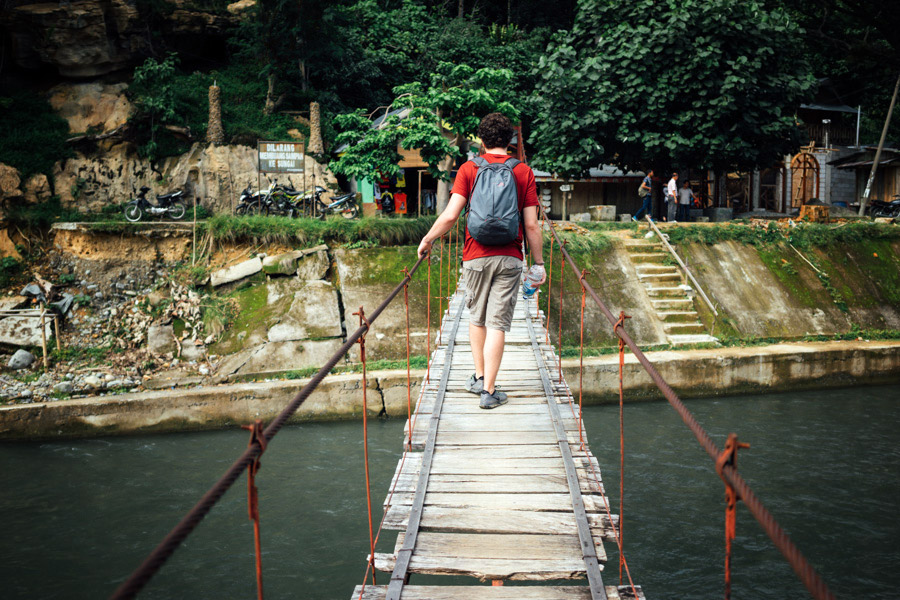
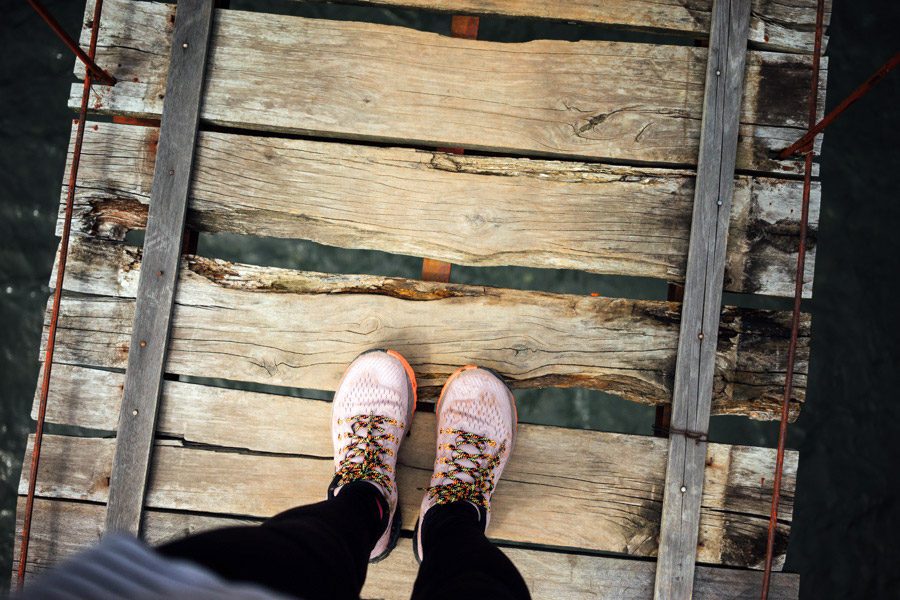
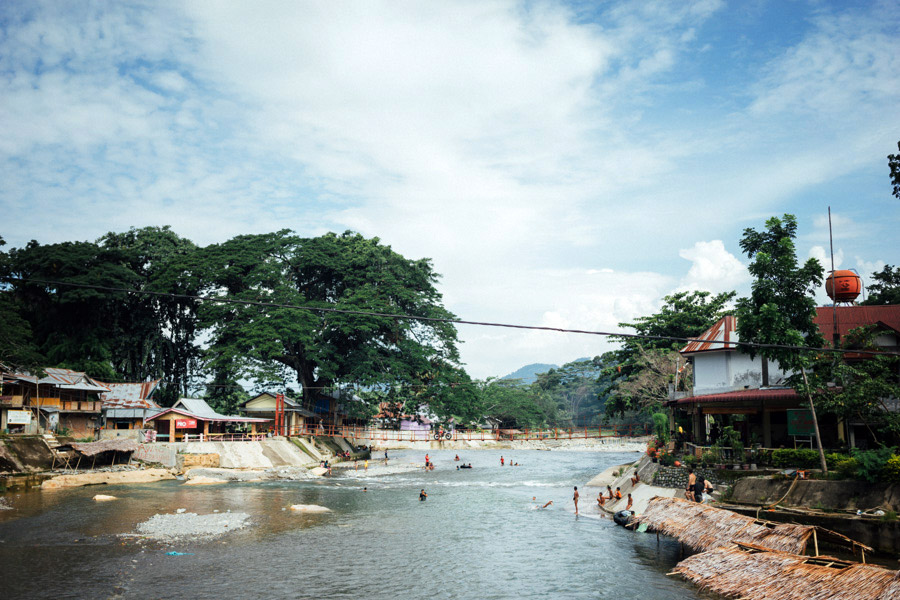
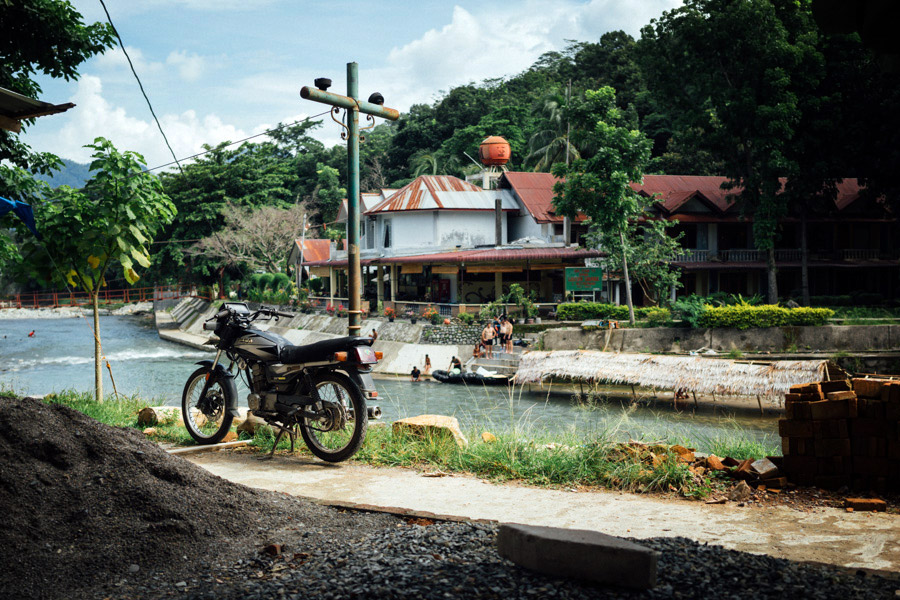
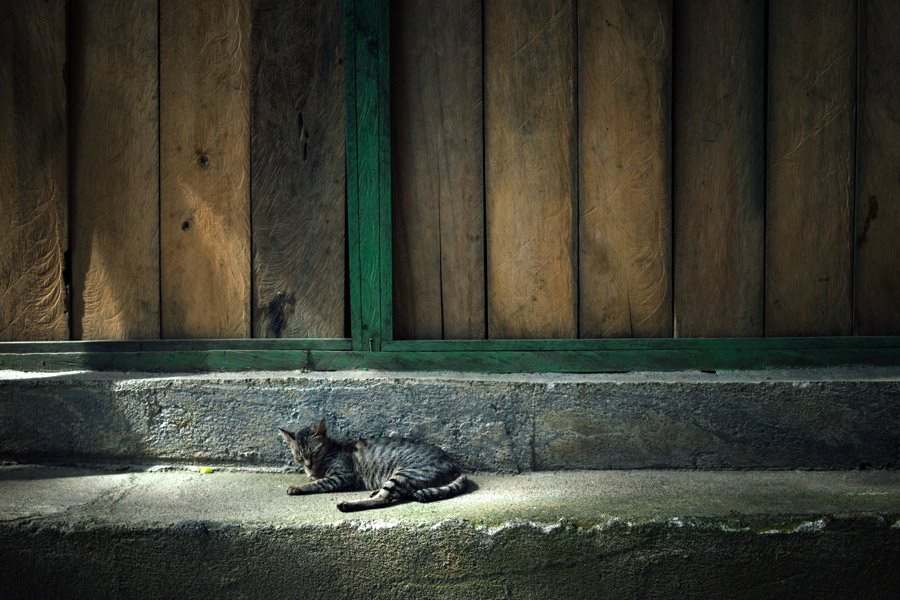
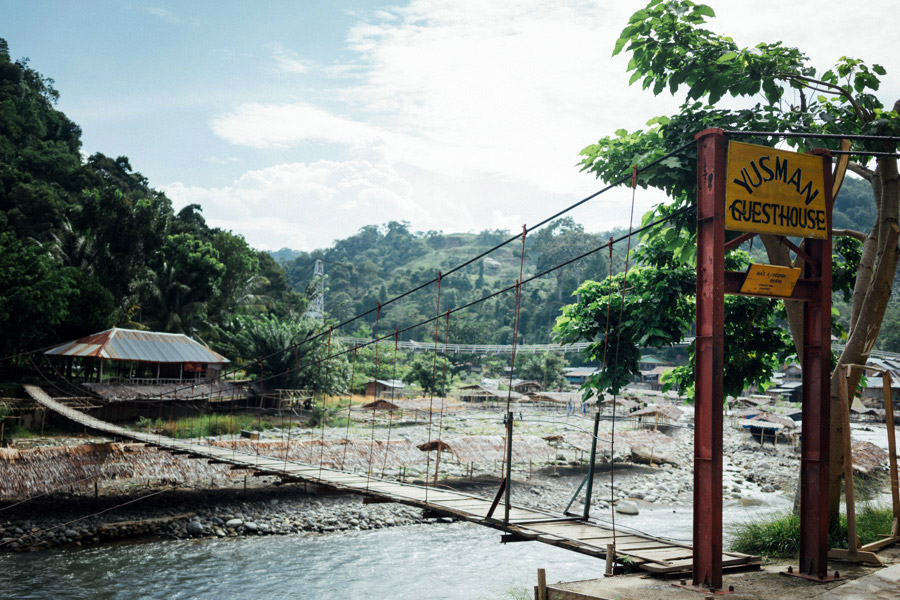
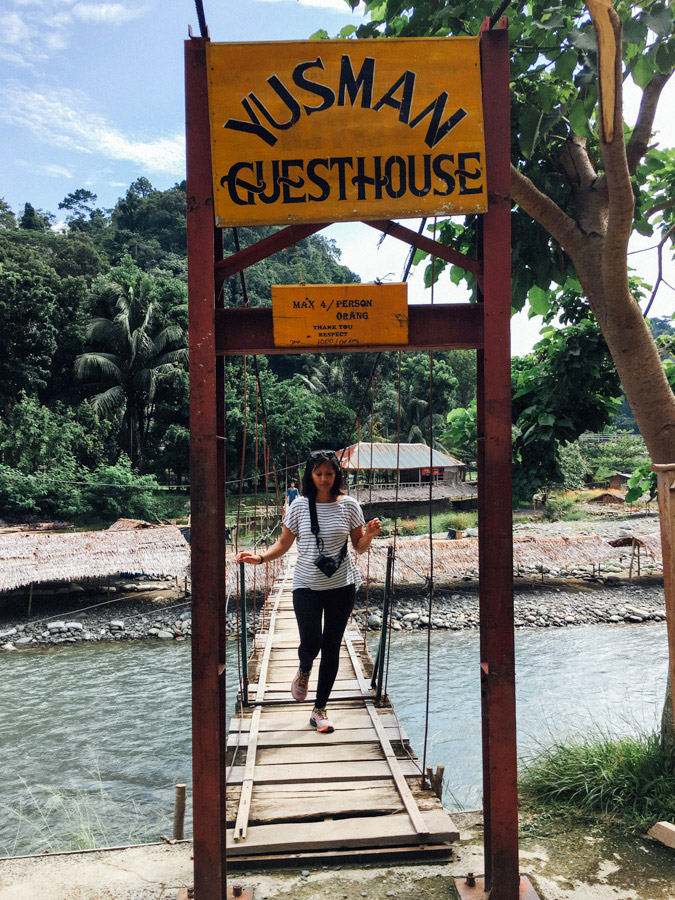
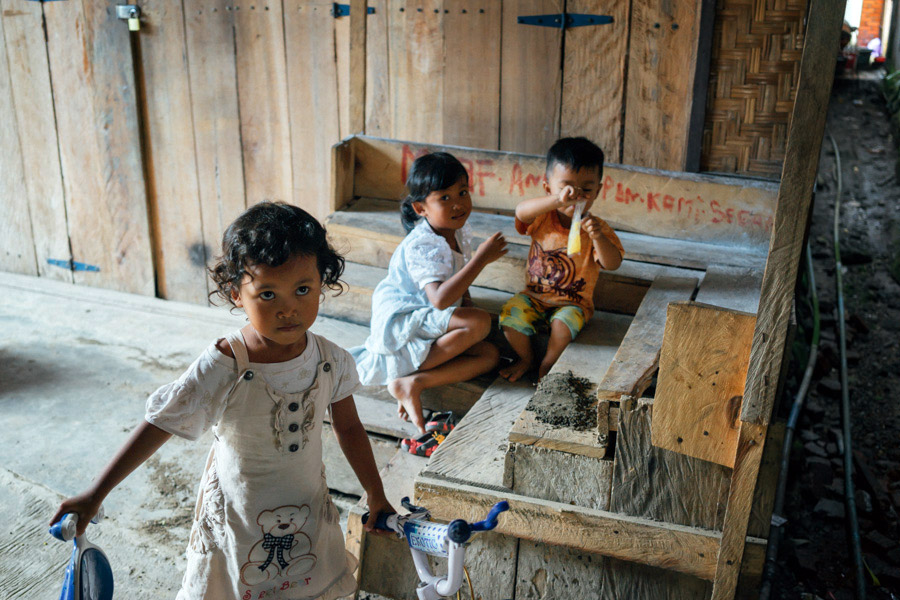
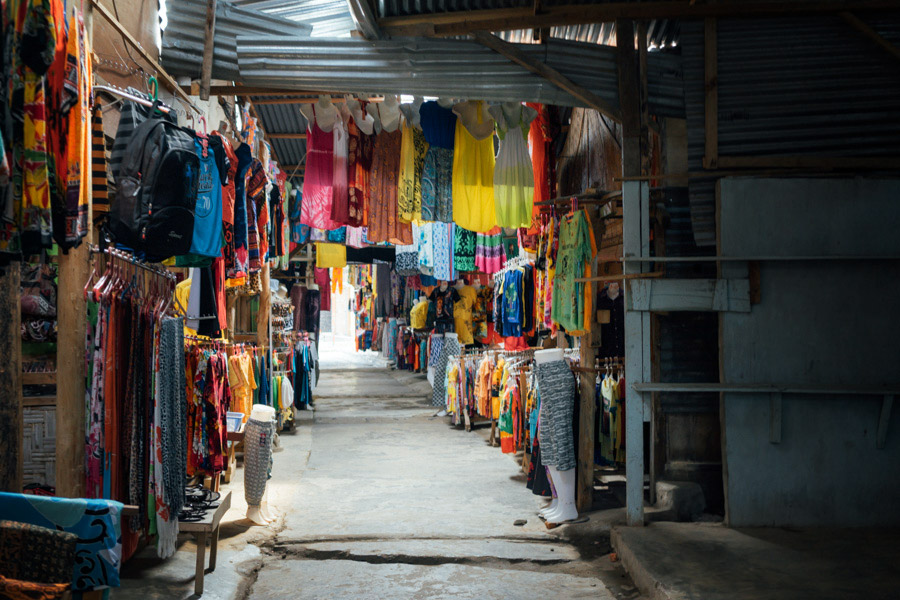
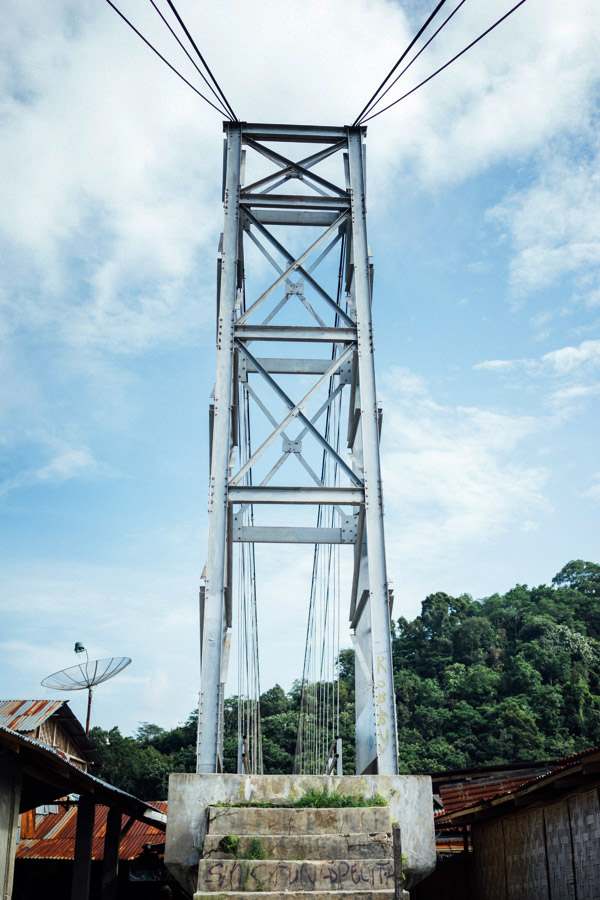
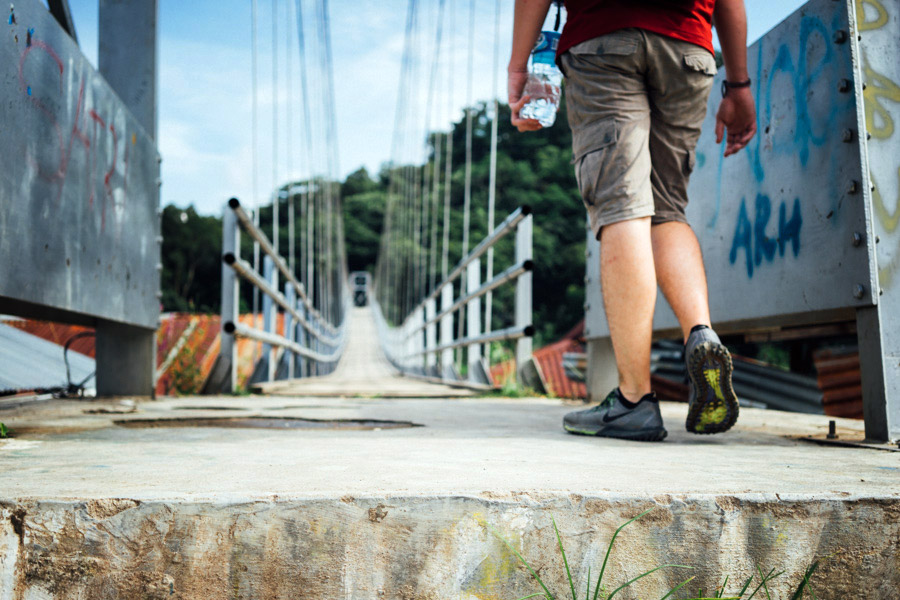
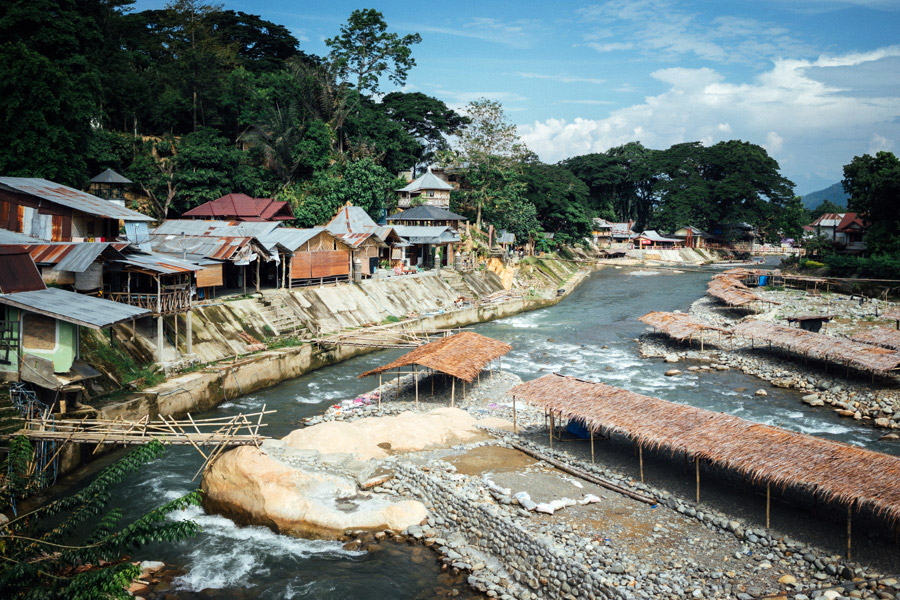
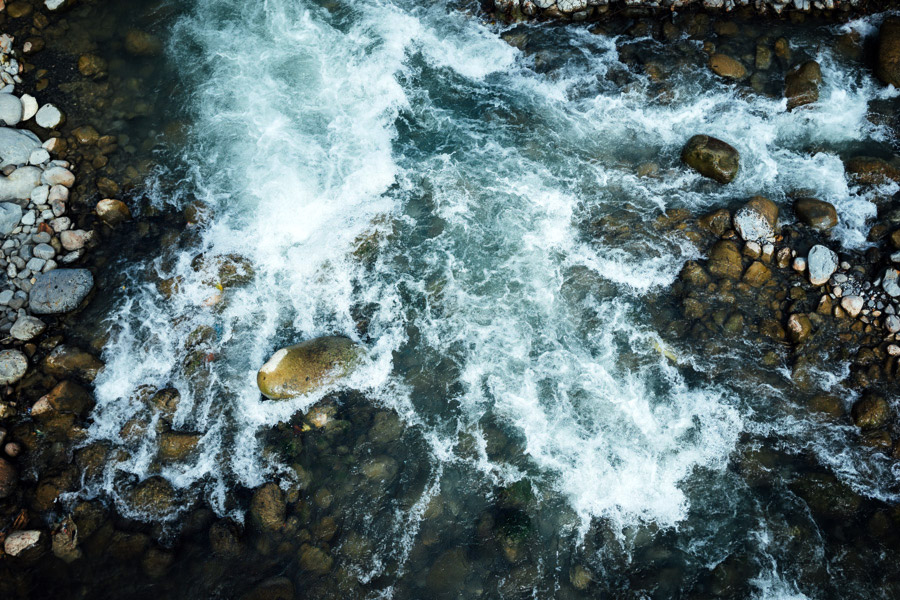

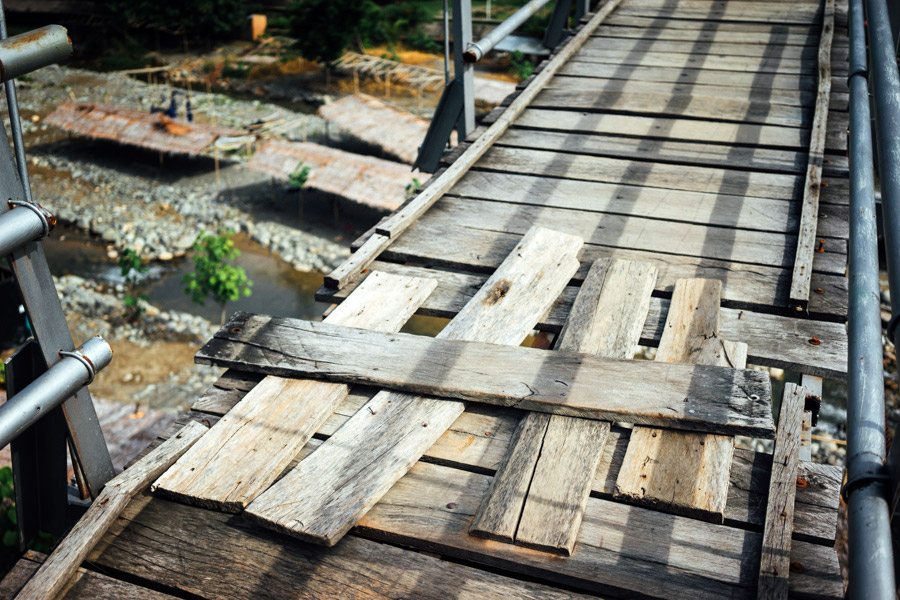
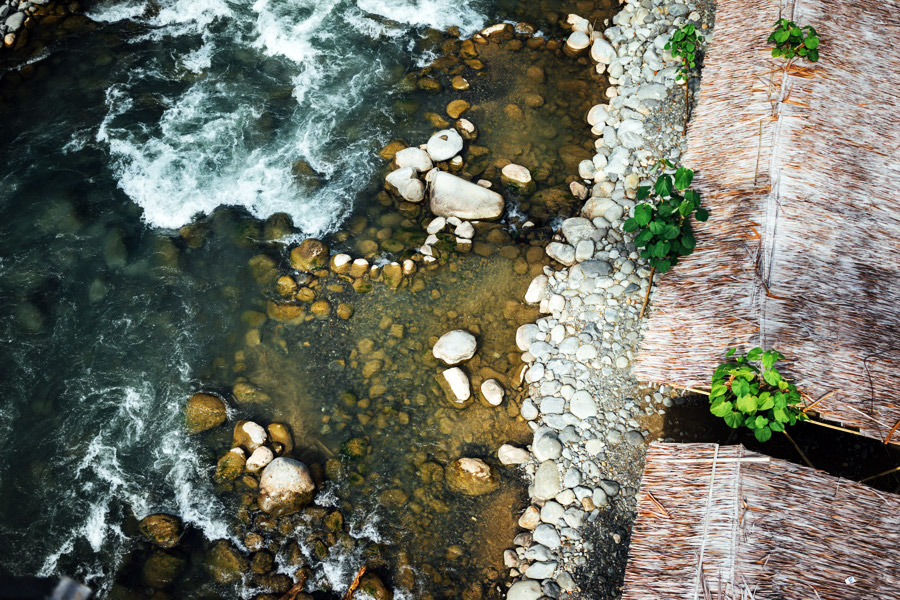
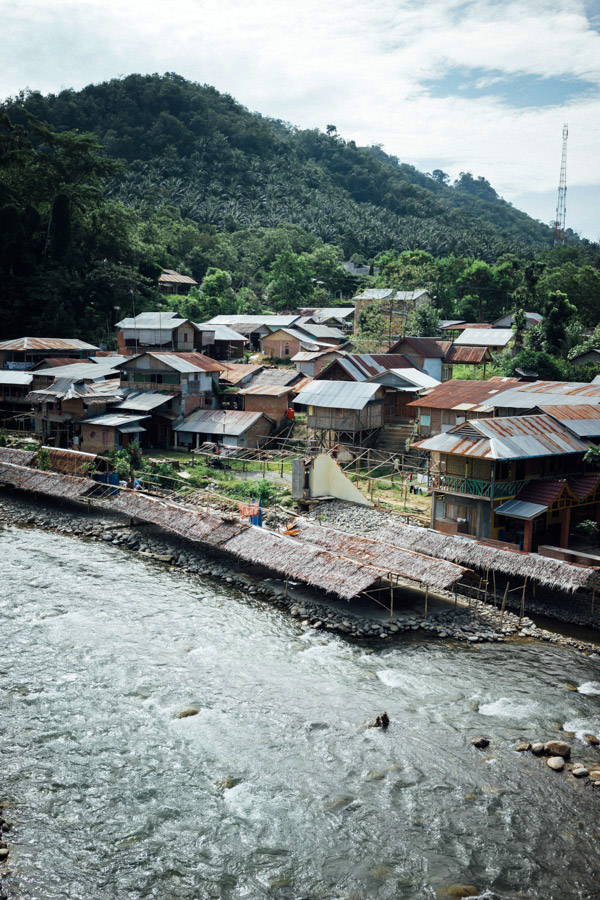
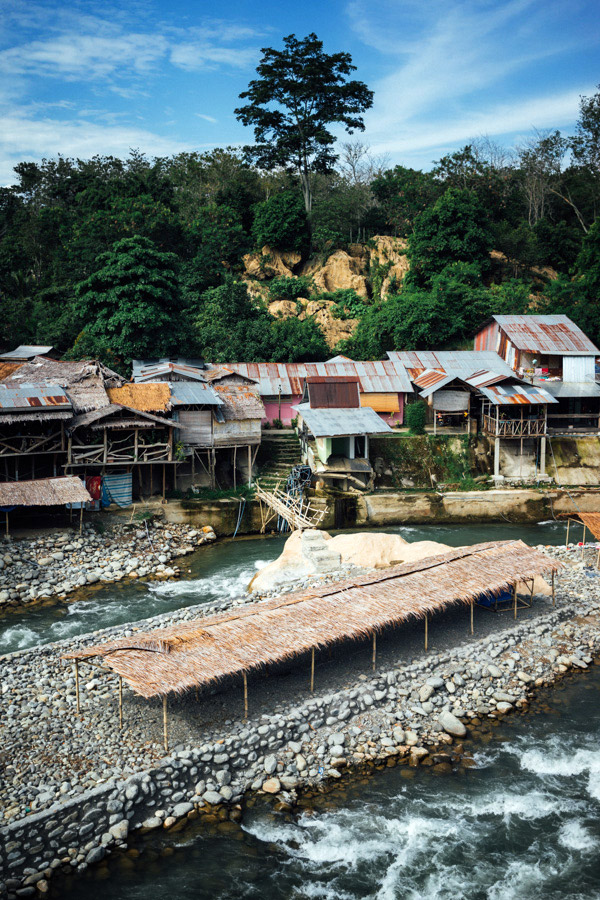
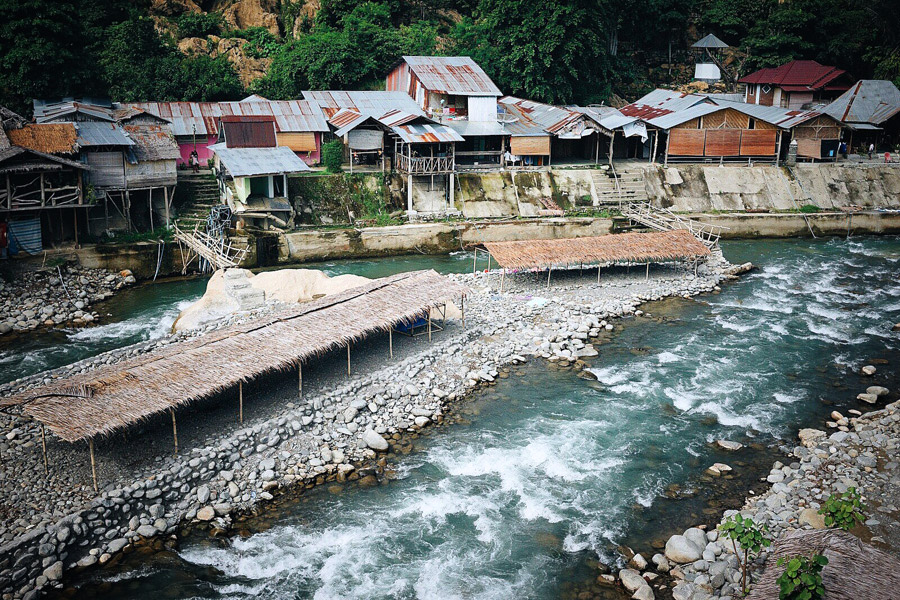


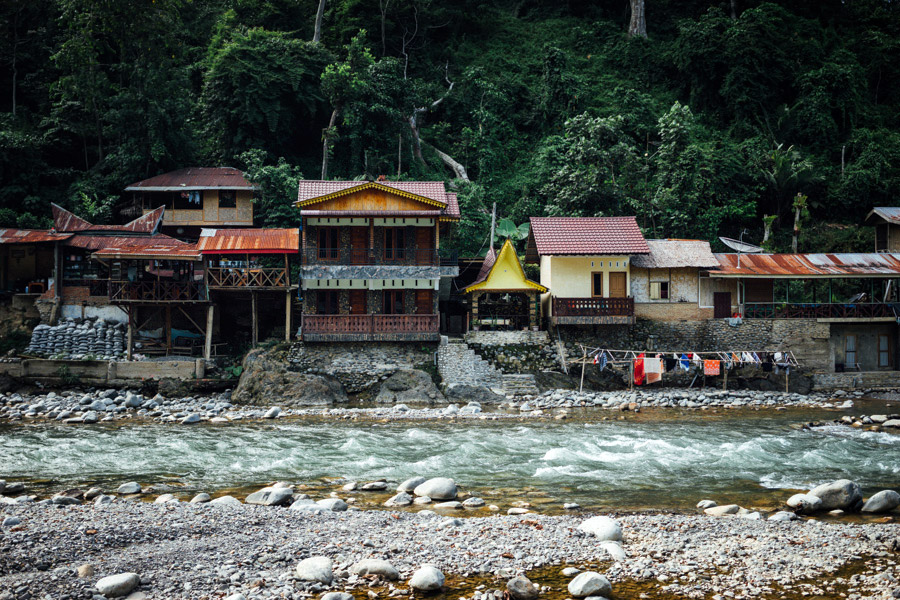

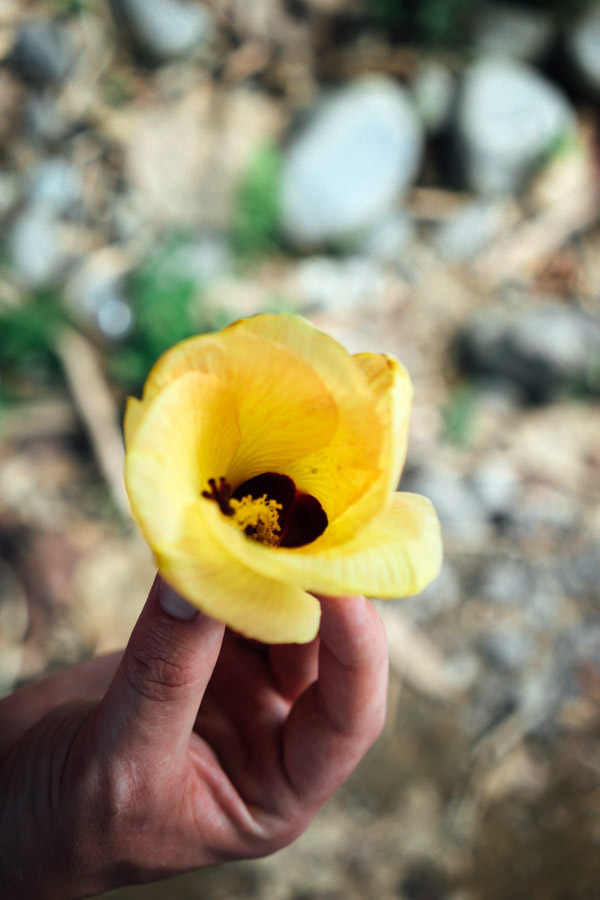
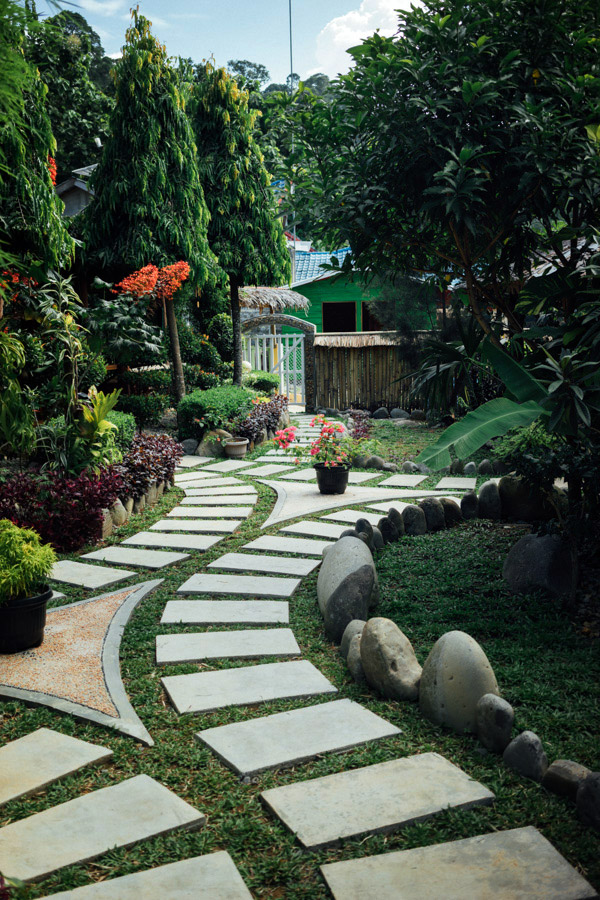
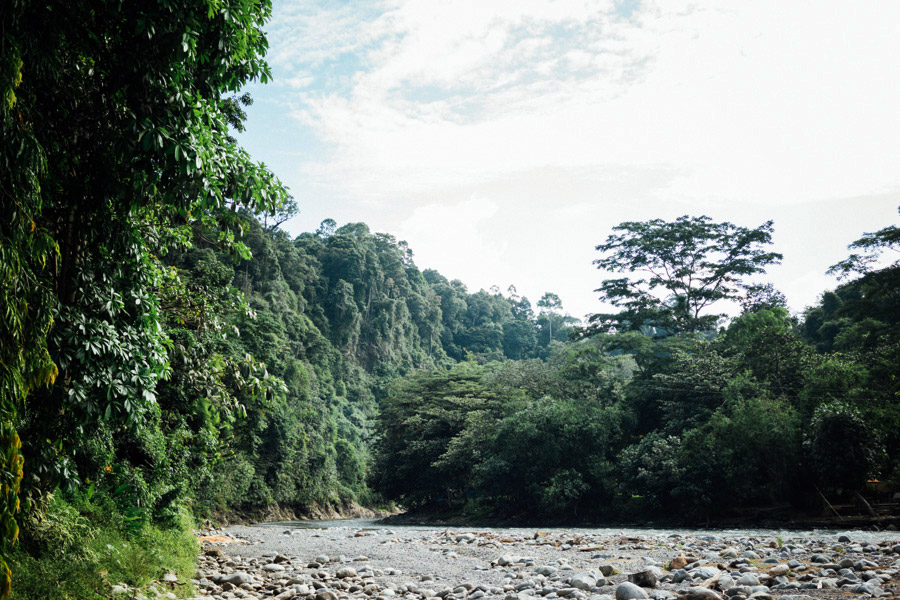


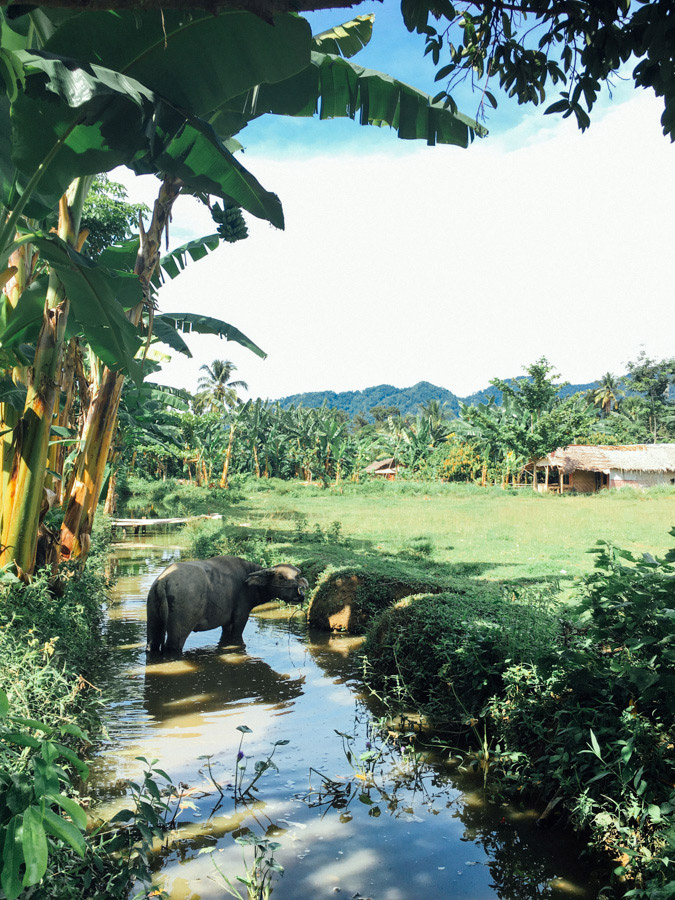
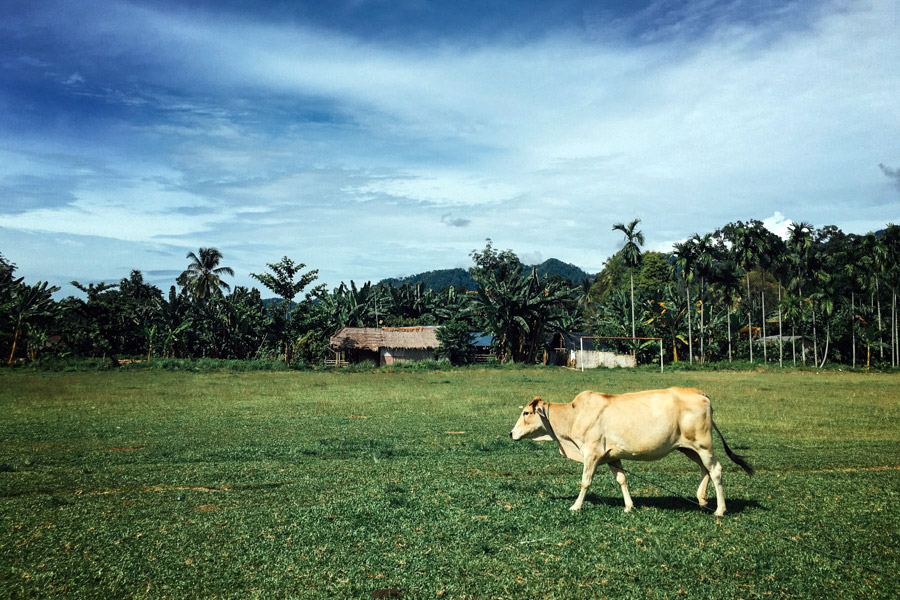
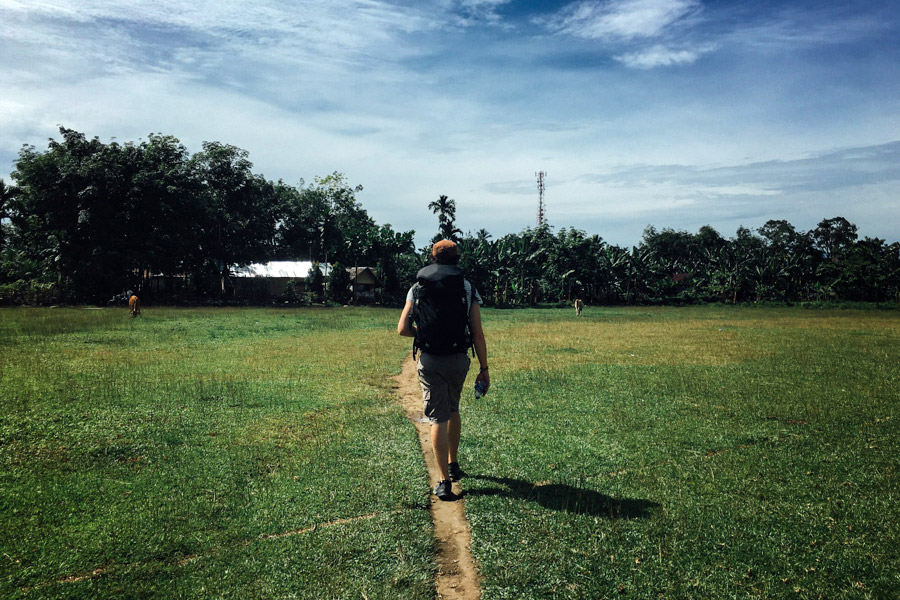
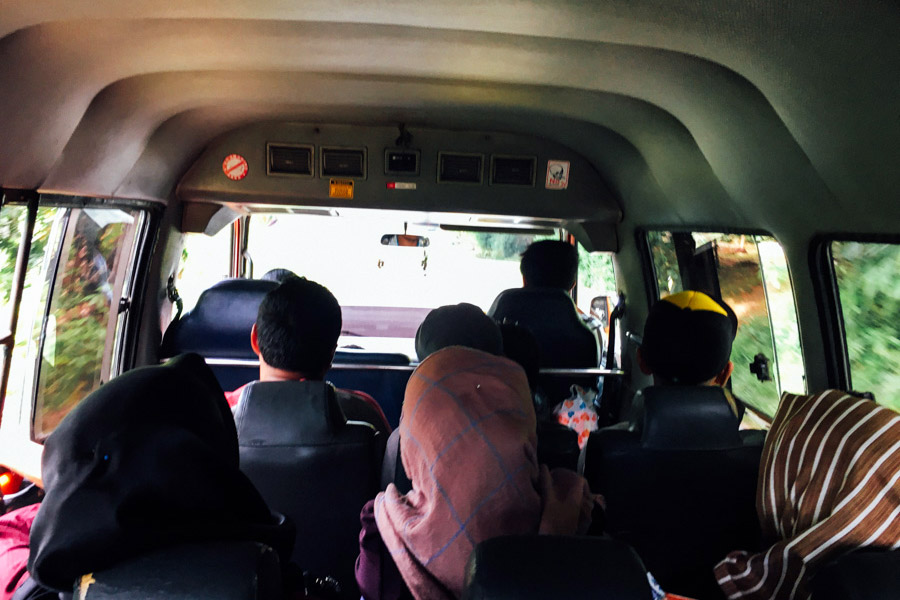
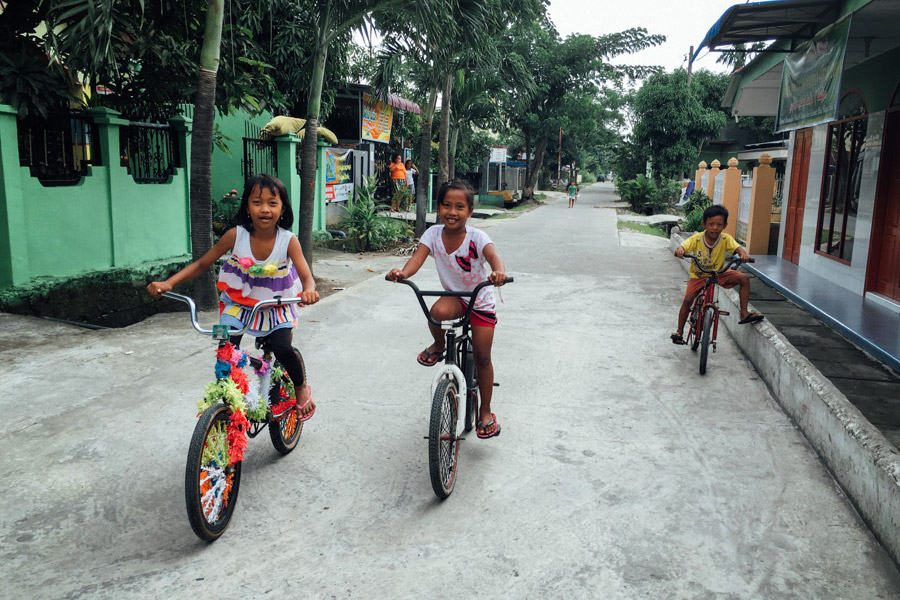
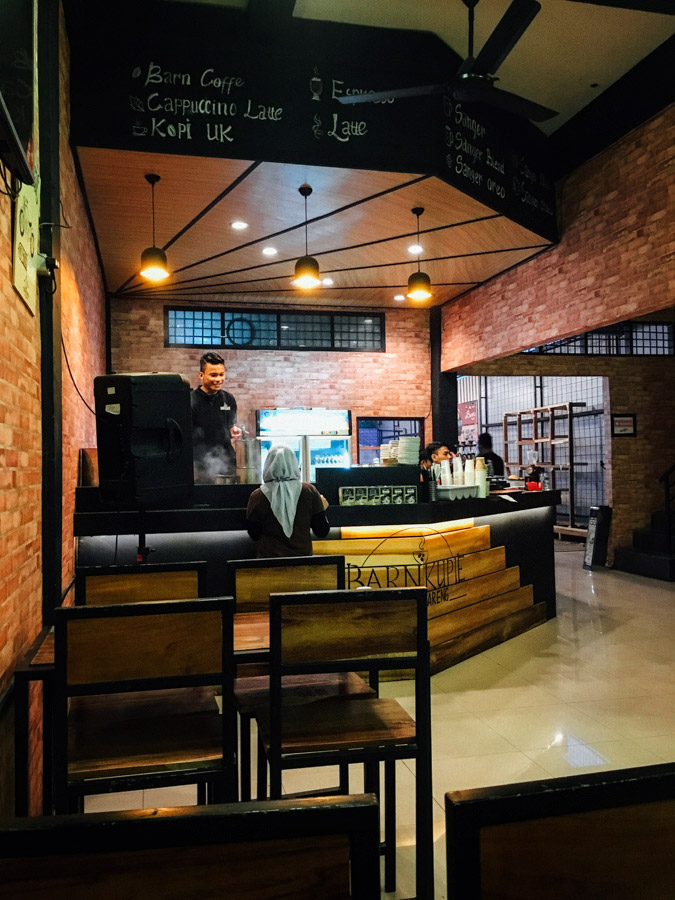

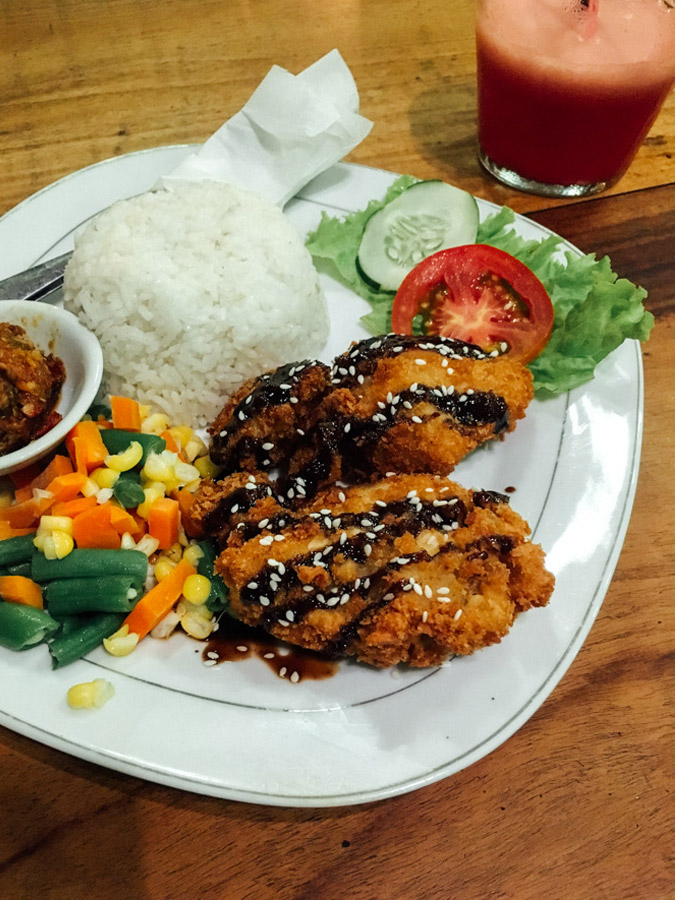
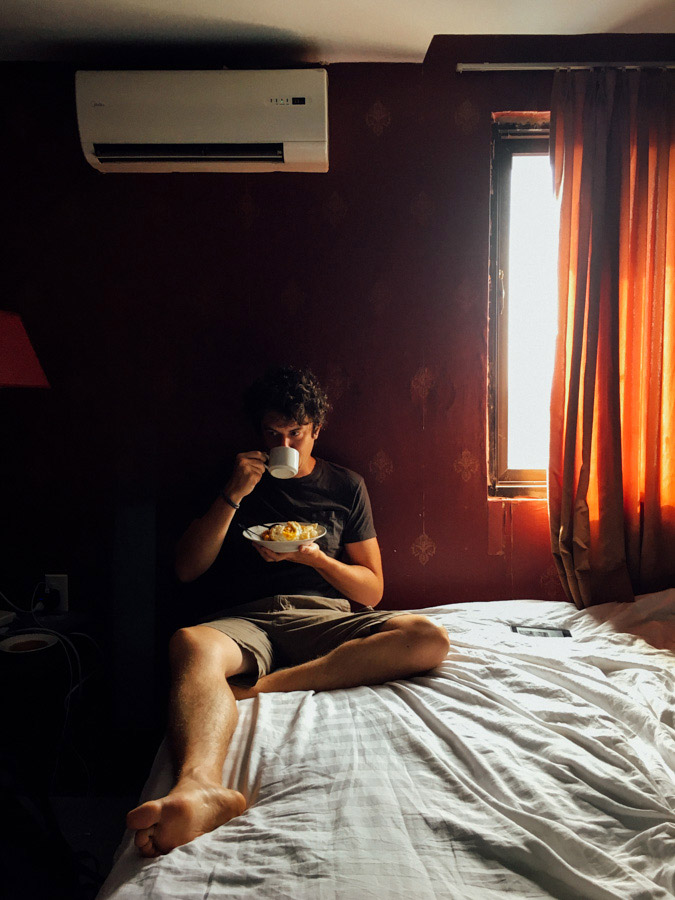

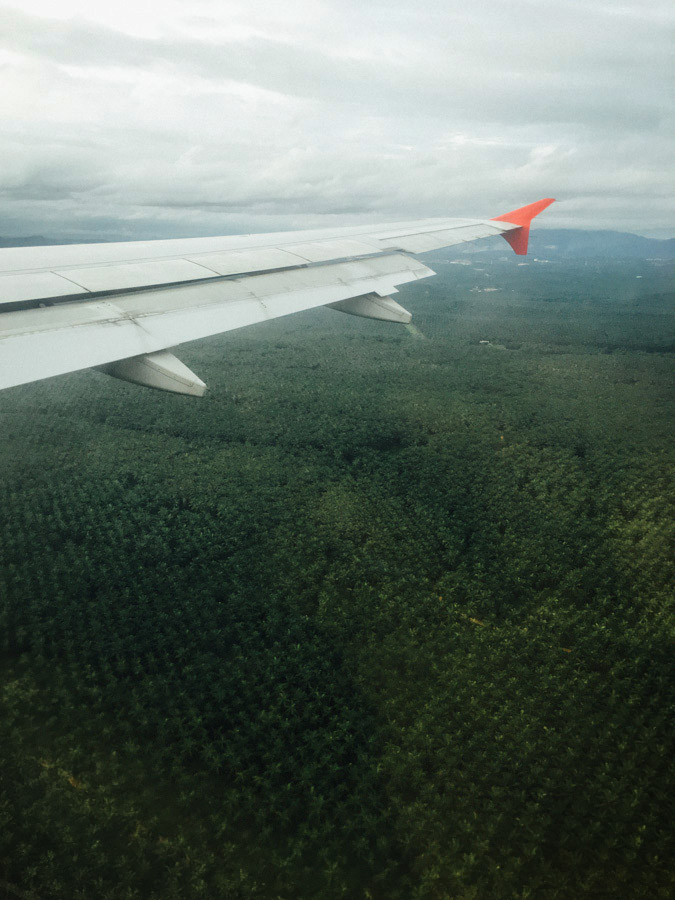
Tips and Links
- The Gunung Leuser National Park is a protected forest and is part of the World Heritage site: the Tropical Rainforest Heritage of Sumatra. It is one of the only two remaining natural habitats for Sumatran orangutans and is also home elephants, tigers, rhinoceroses and more.
- Oil palm farming and illegal logging are still large threats to the park and its diversity. This is from a report in 2011: “Despite being protected by federal law from any form of destructive encroachment, illegal logging is still rampant in the forest, with the foliage of the Leuser ecosystem disappearing at a rate of 21,000 hectares per year.” How to help? Support low-impact ecotourism to provide another economy to the region, buy sustainable palm oil FSC-certified products, and go visit the orangutans!
- Bukit Lawang is the village at the entrance of the Gunung Leuser park. It’s a little bit of an adventure to get there. We roughed it up with a bus ride, but you can also find private drivers through your hotel for Rp 500,000 - 600,000. More info at bukitlawang.com/Transport
- Thomas’ Retreat was a great place to stay, with some of the best food in town. They also organize treks in the jungle.


















